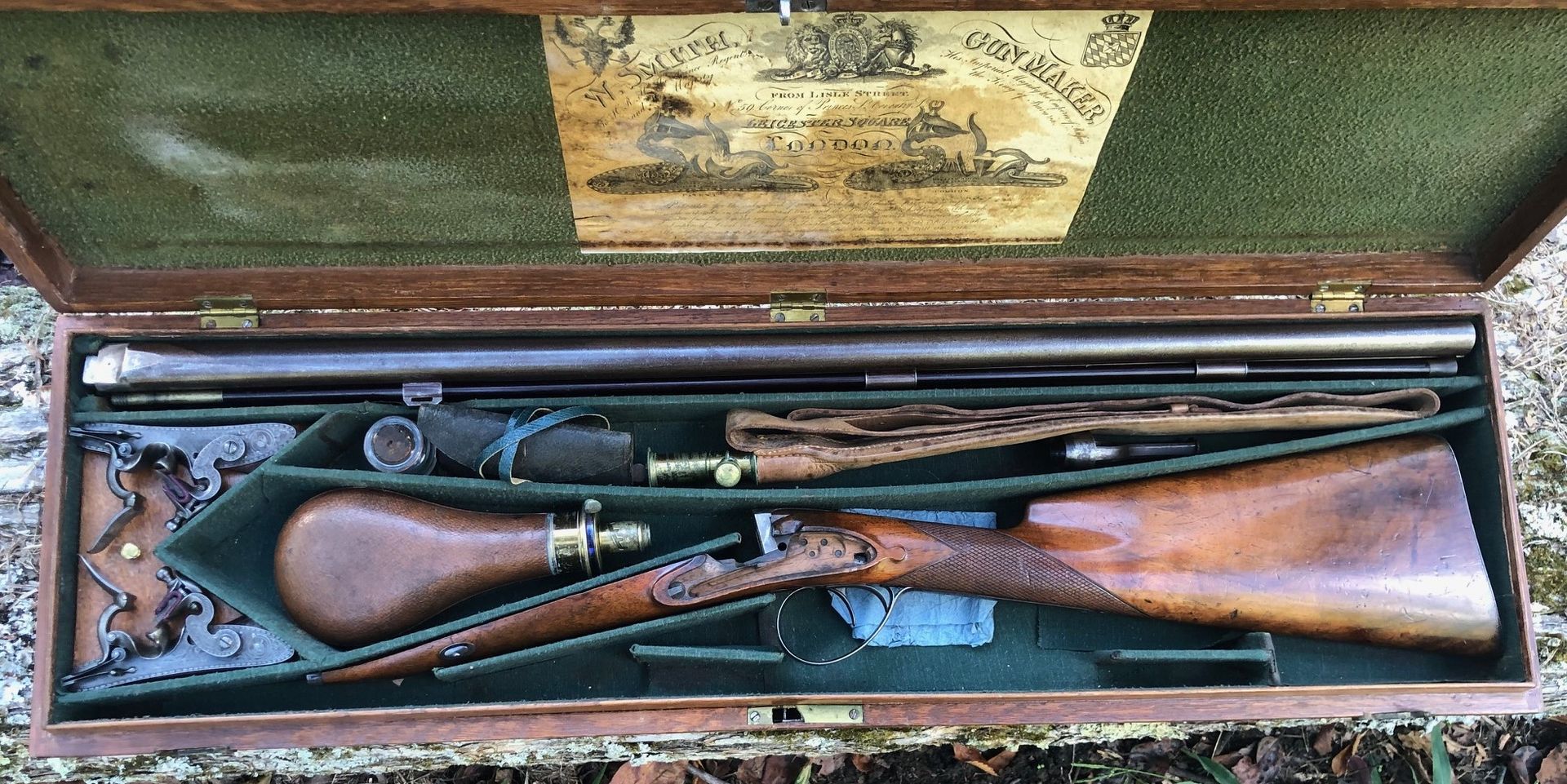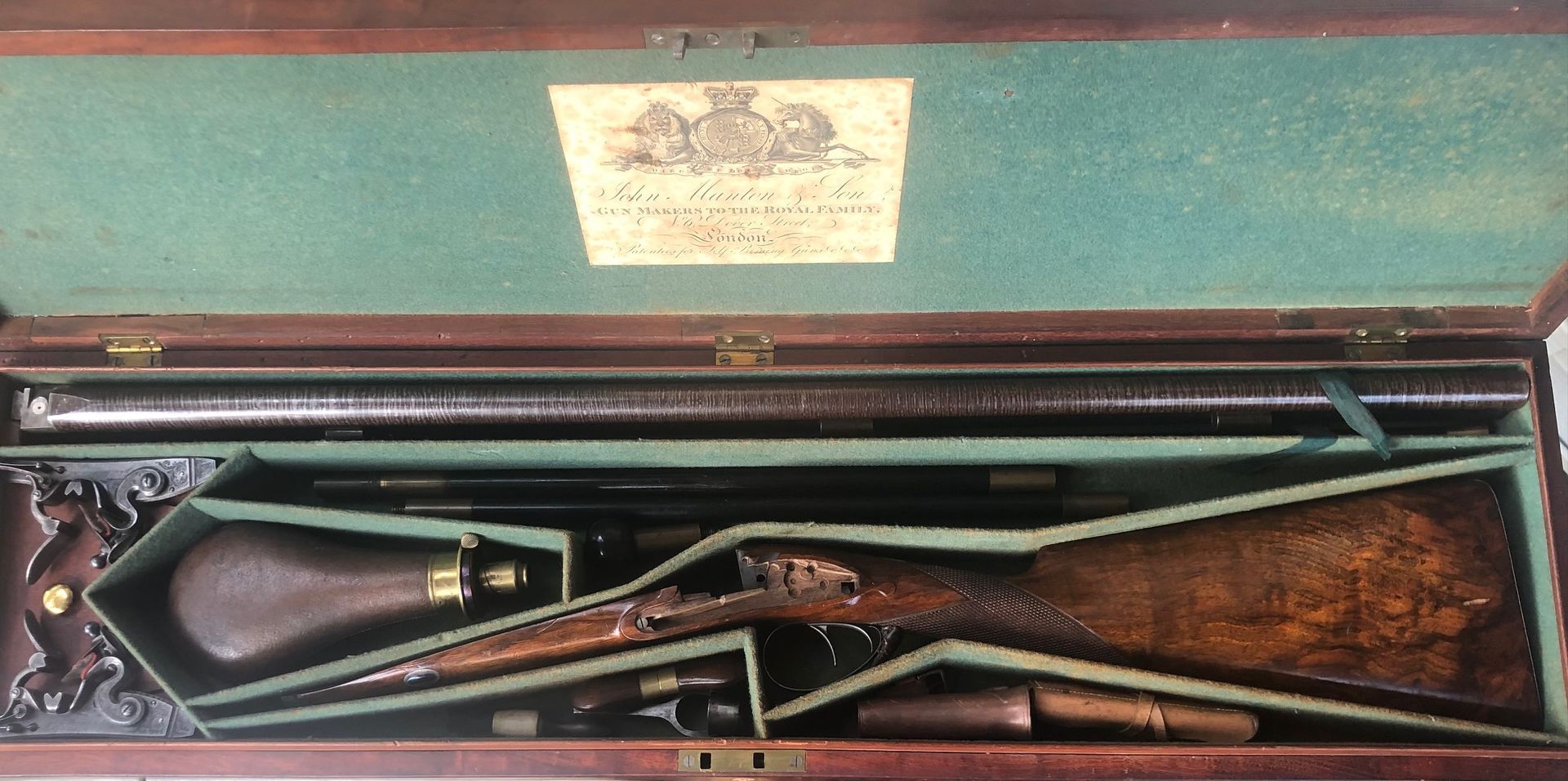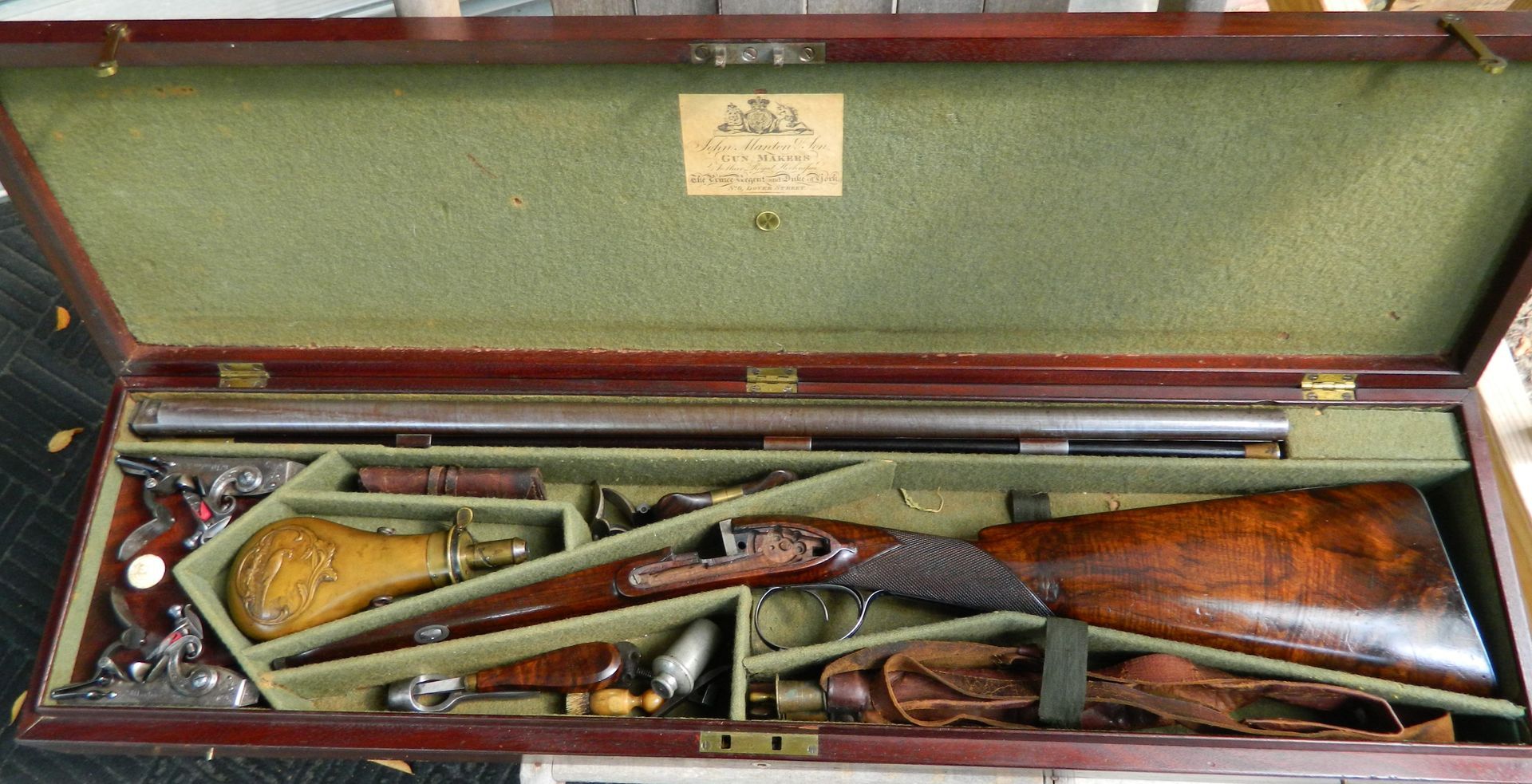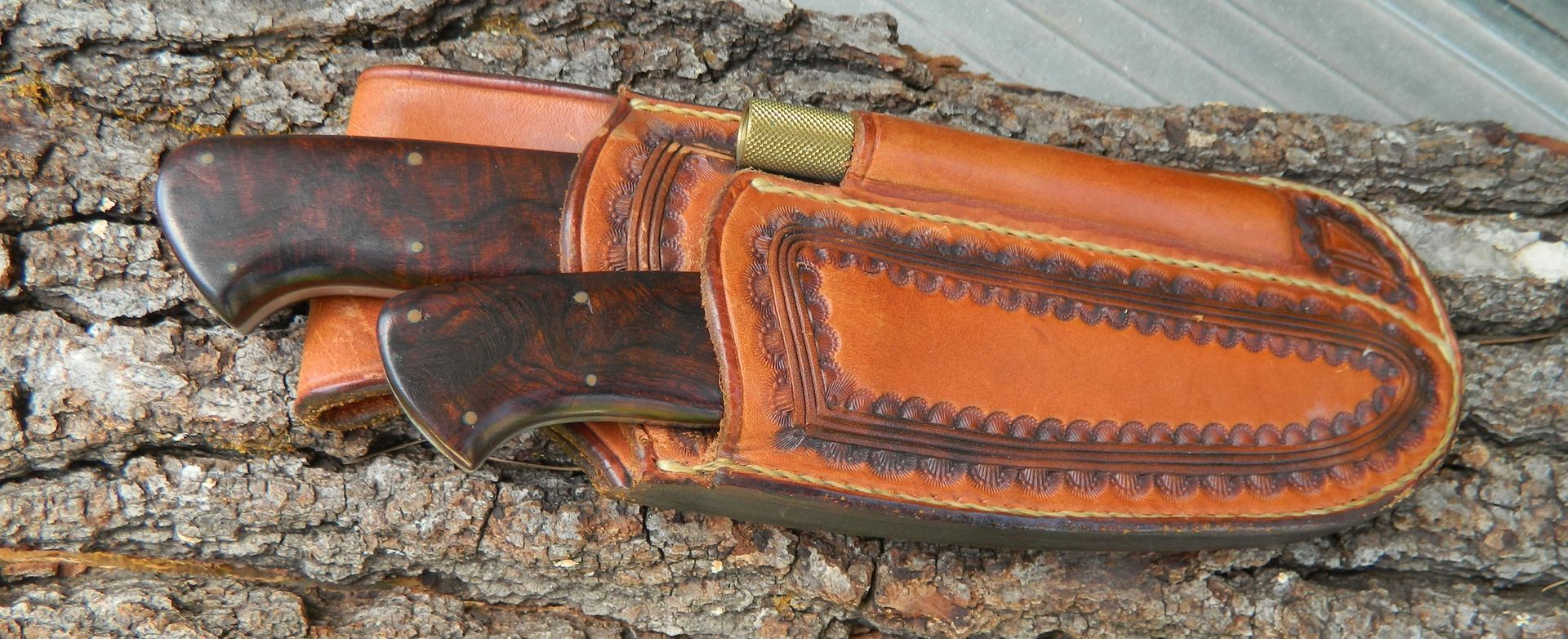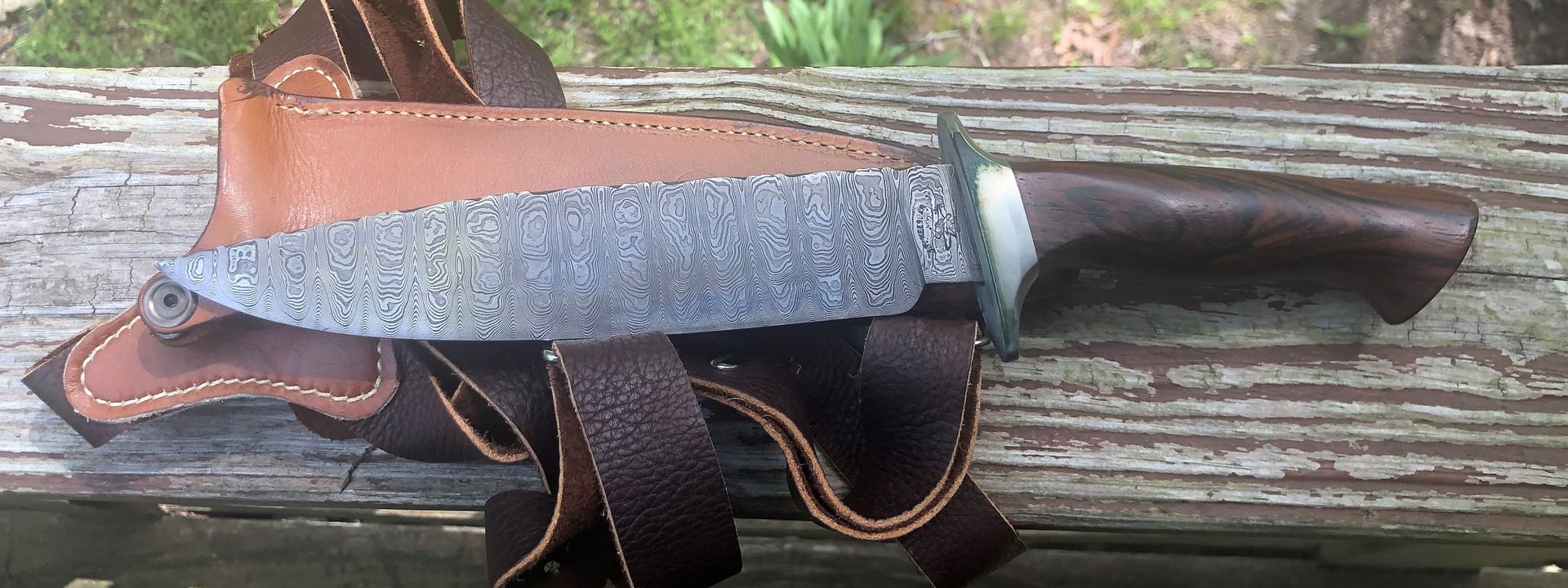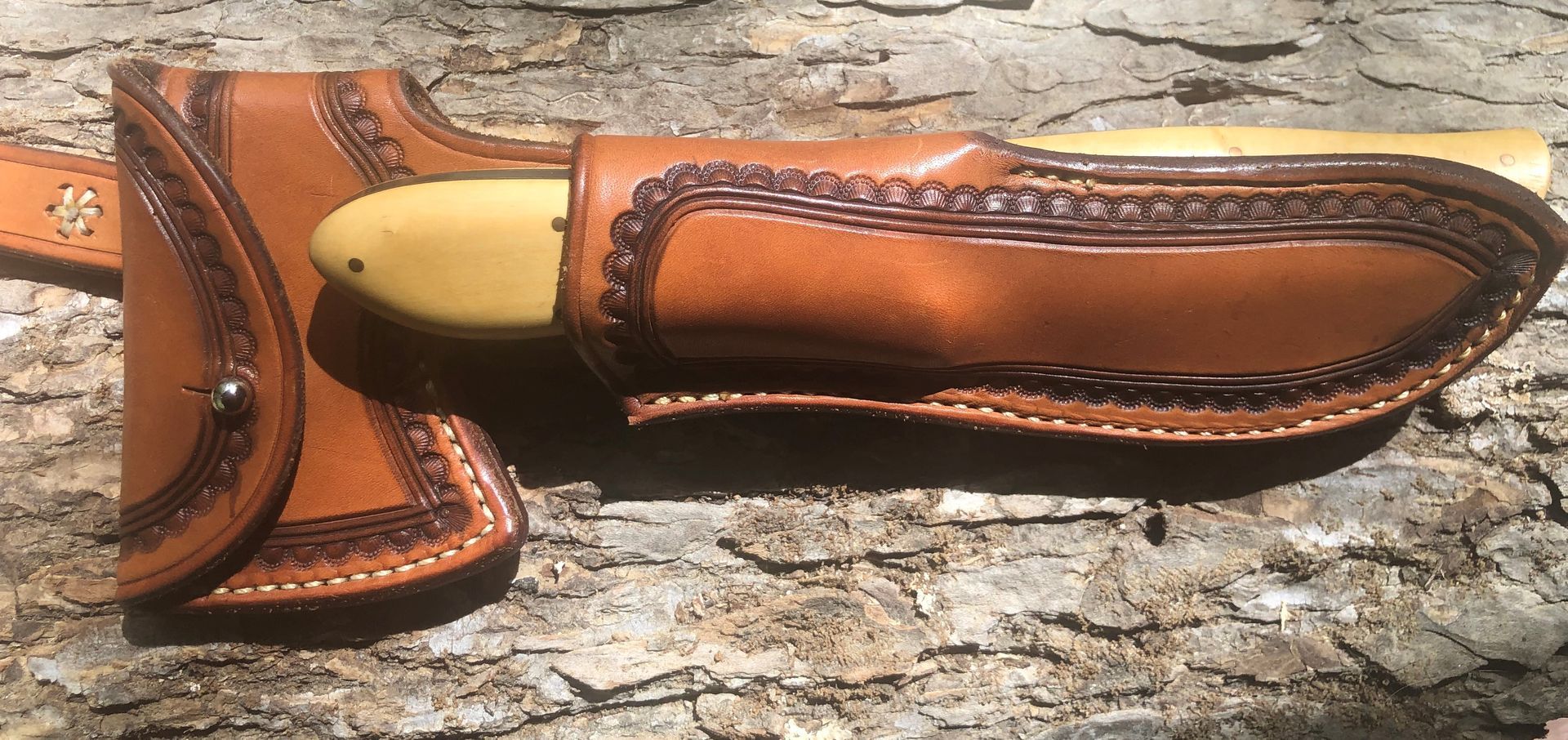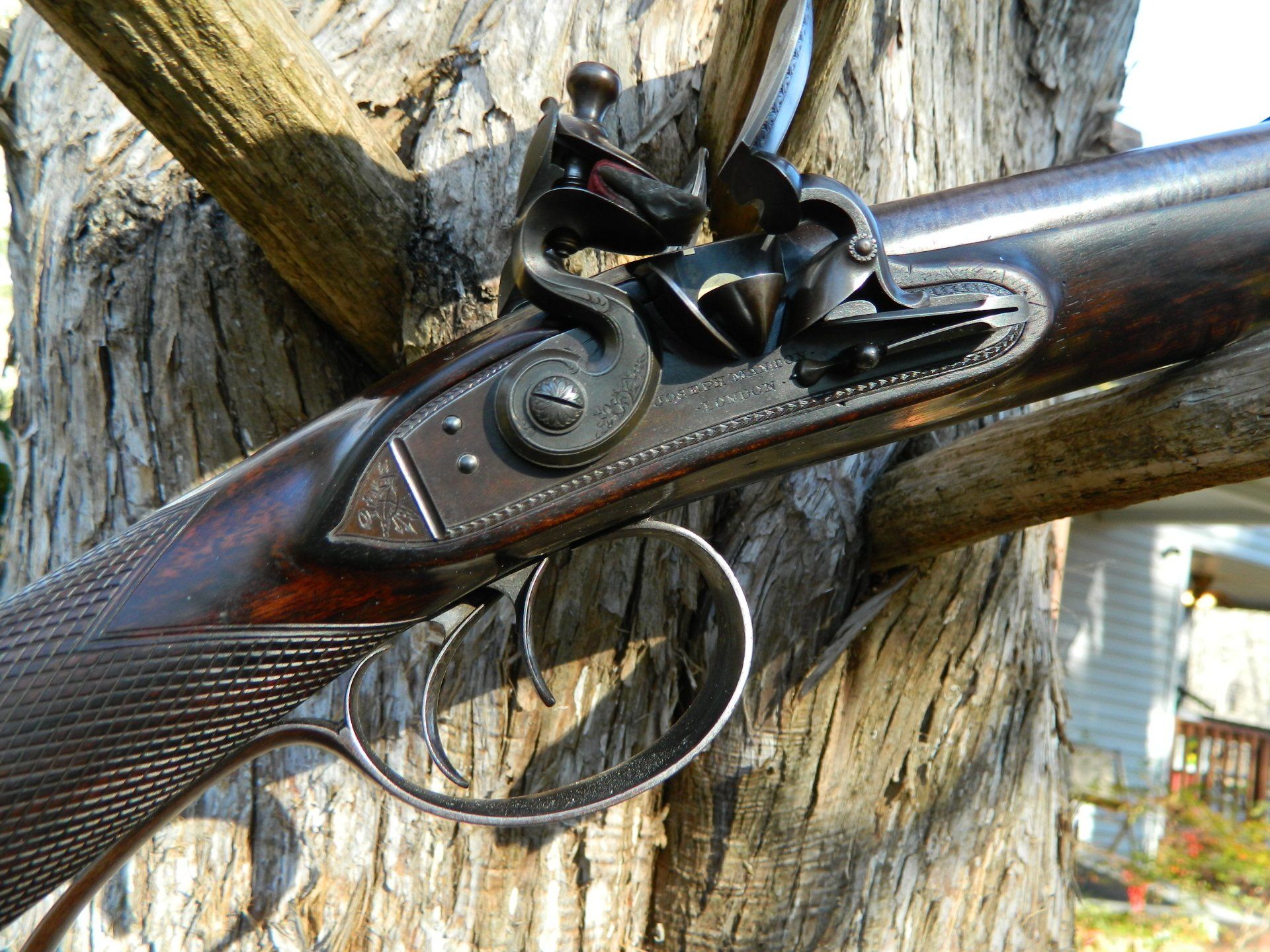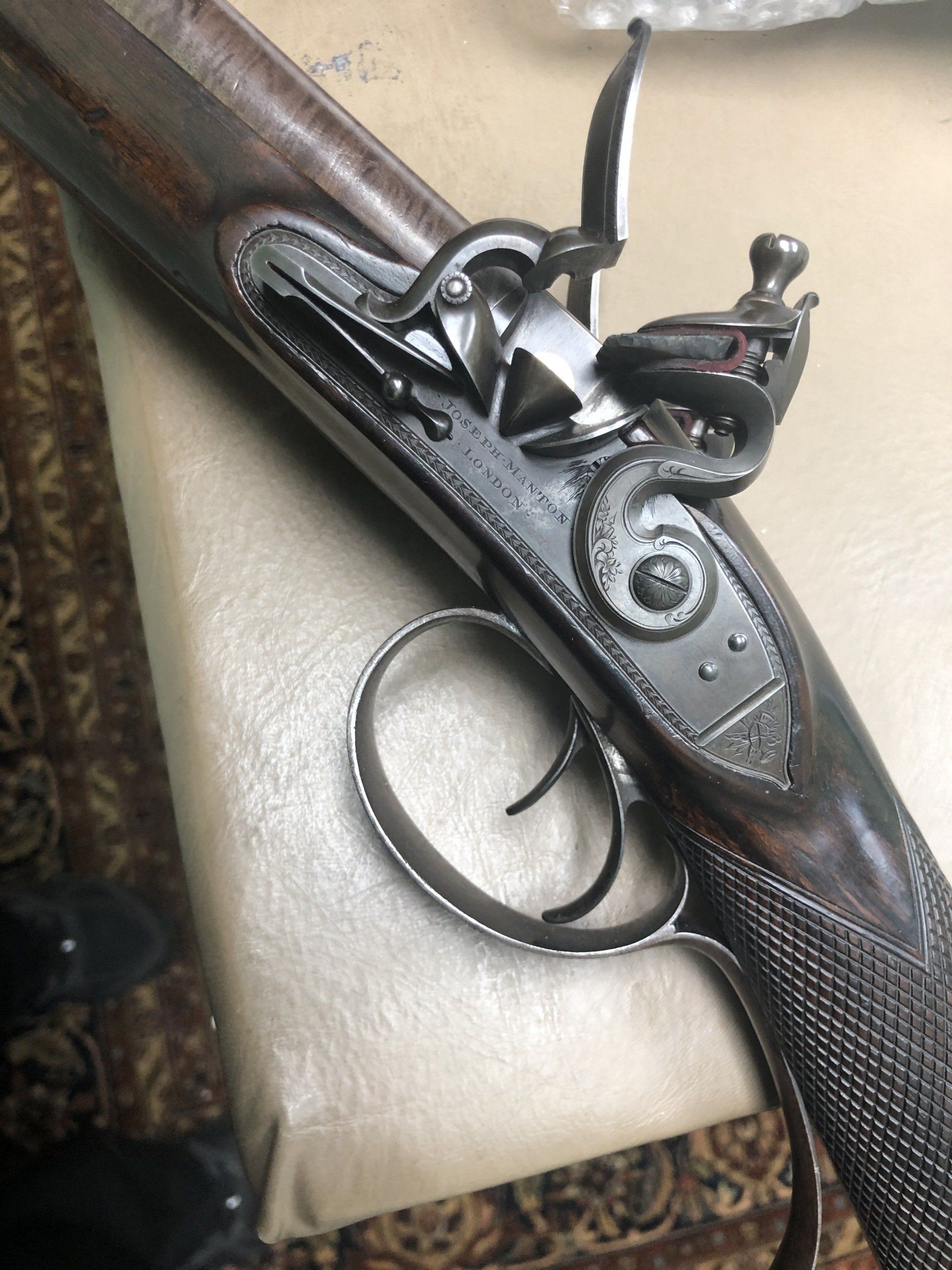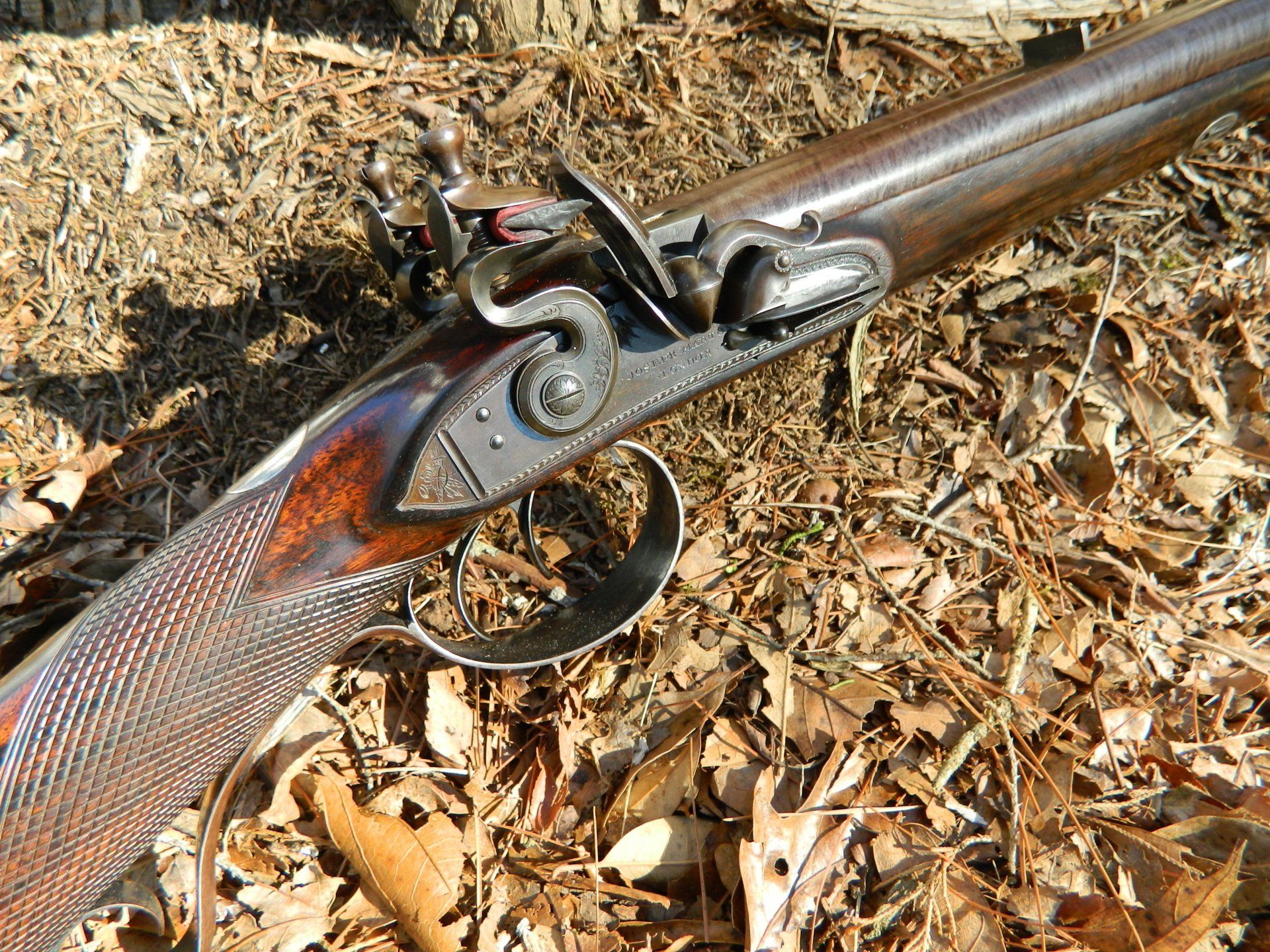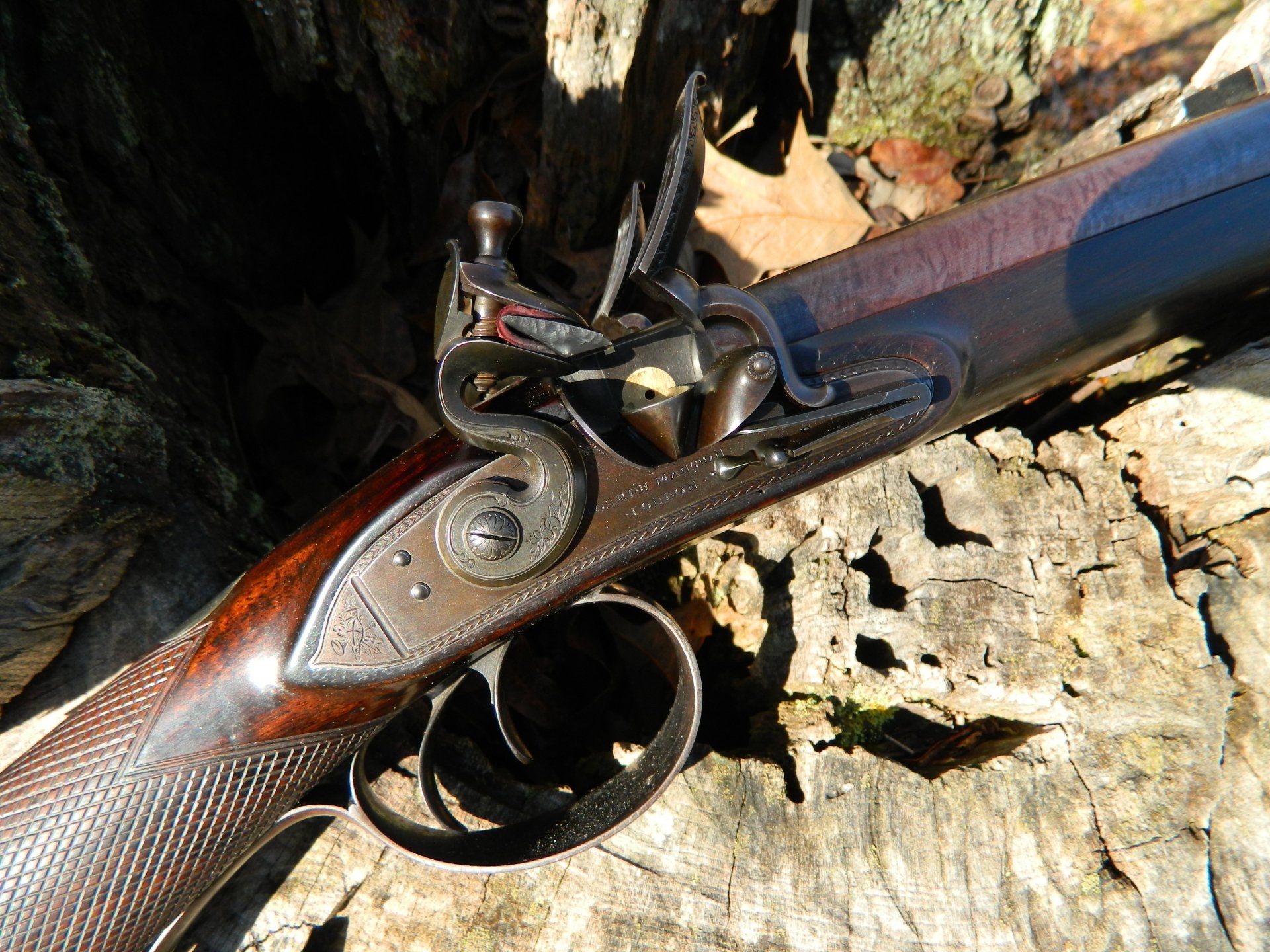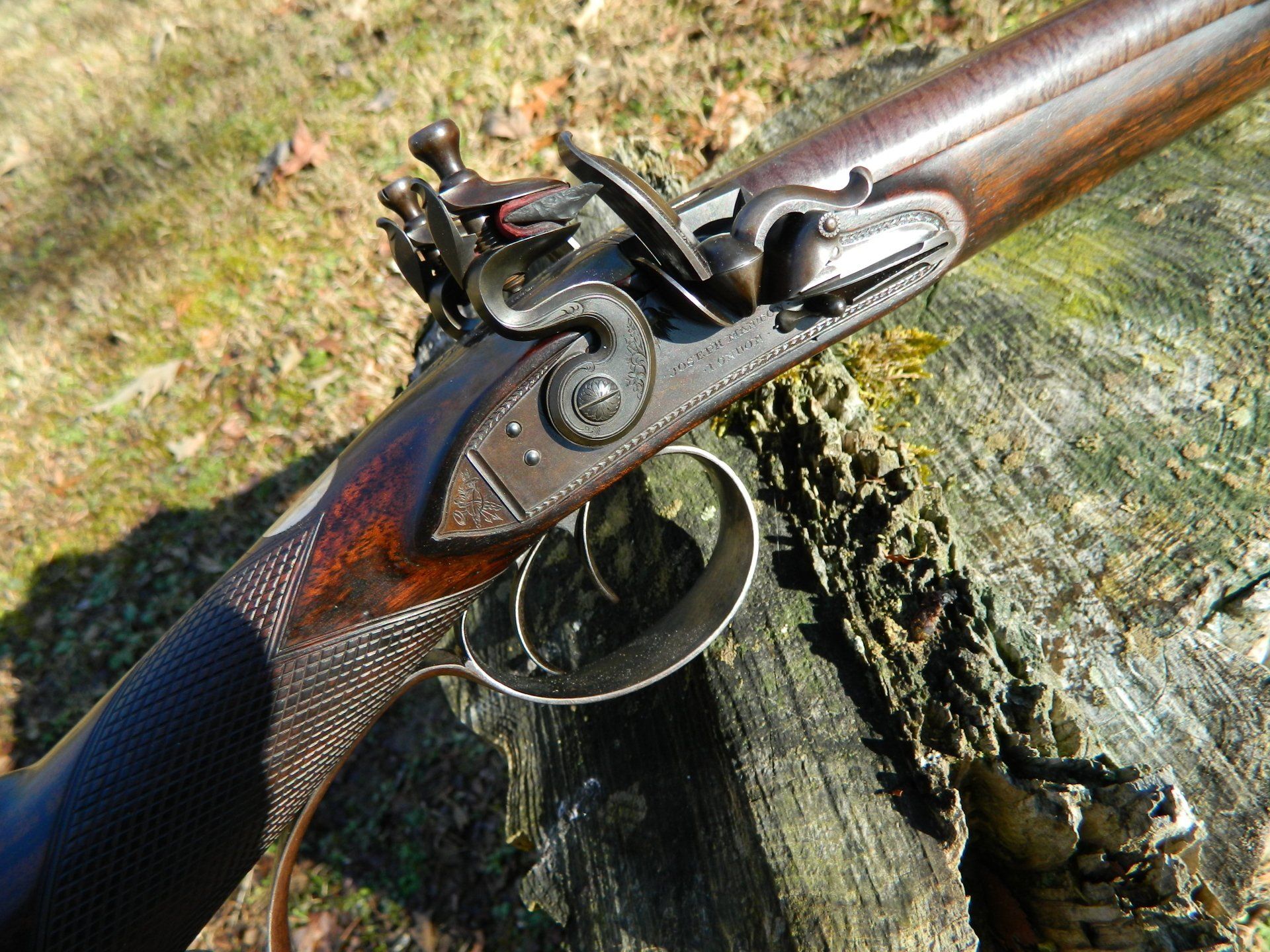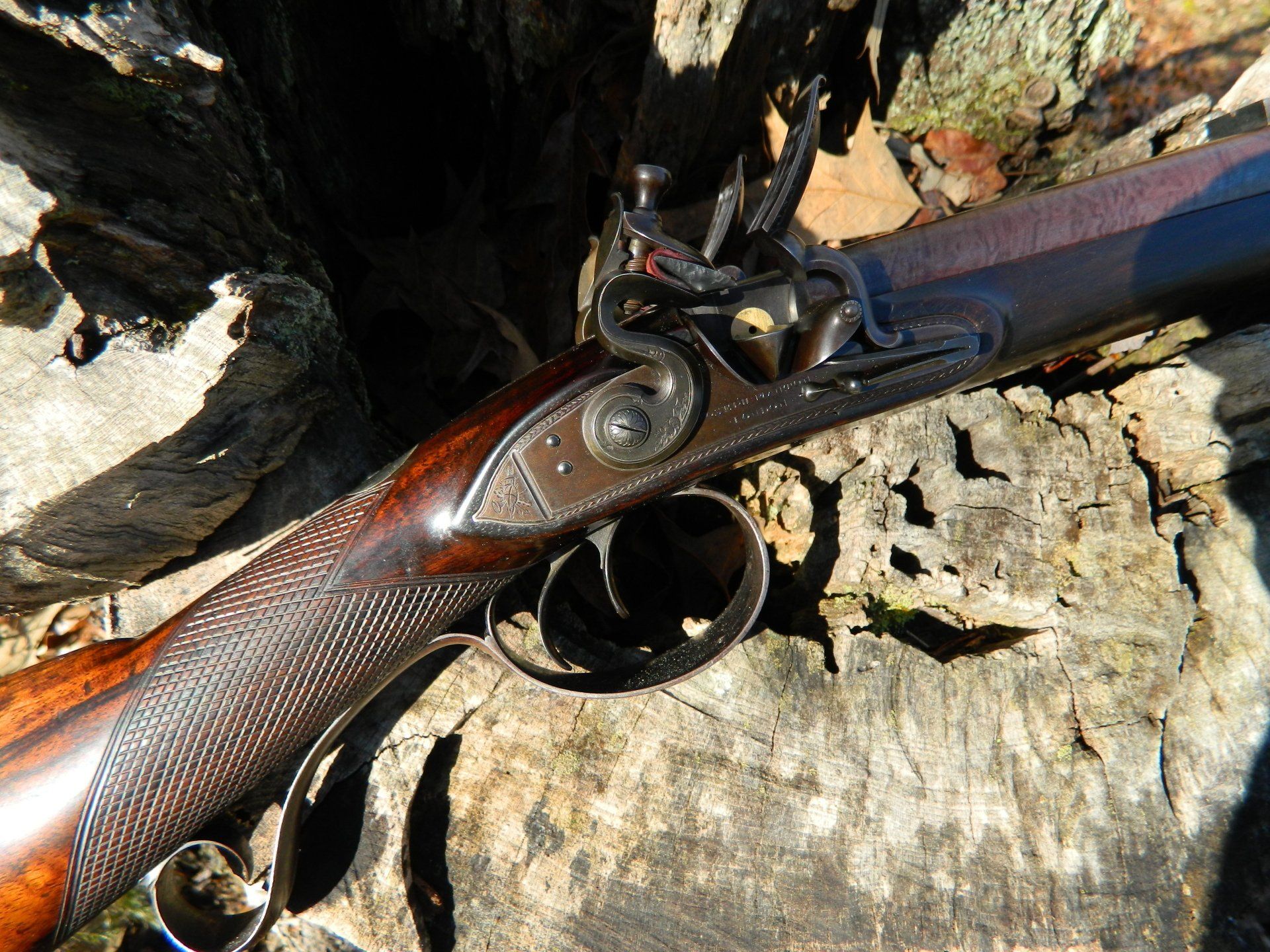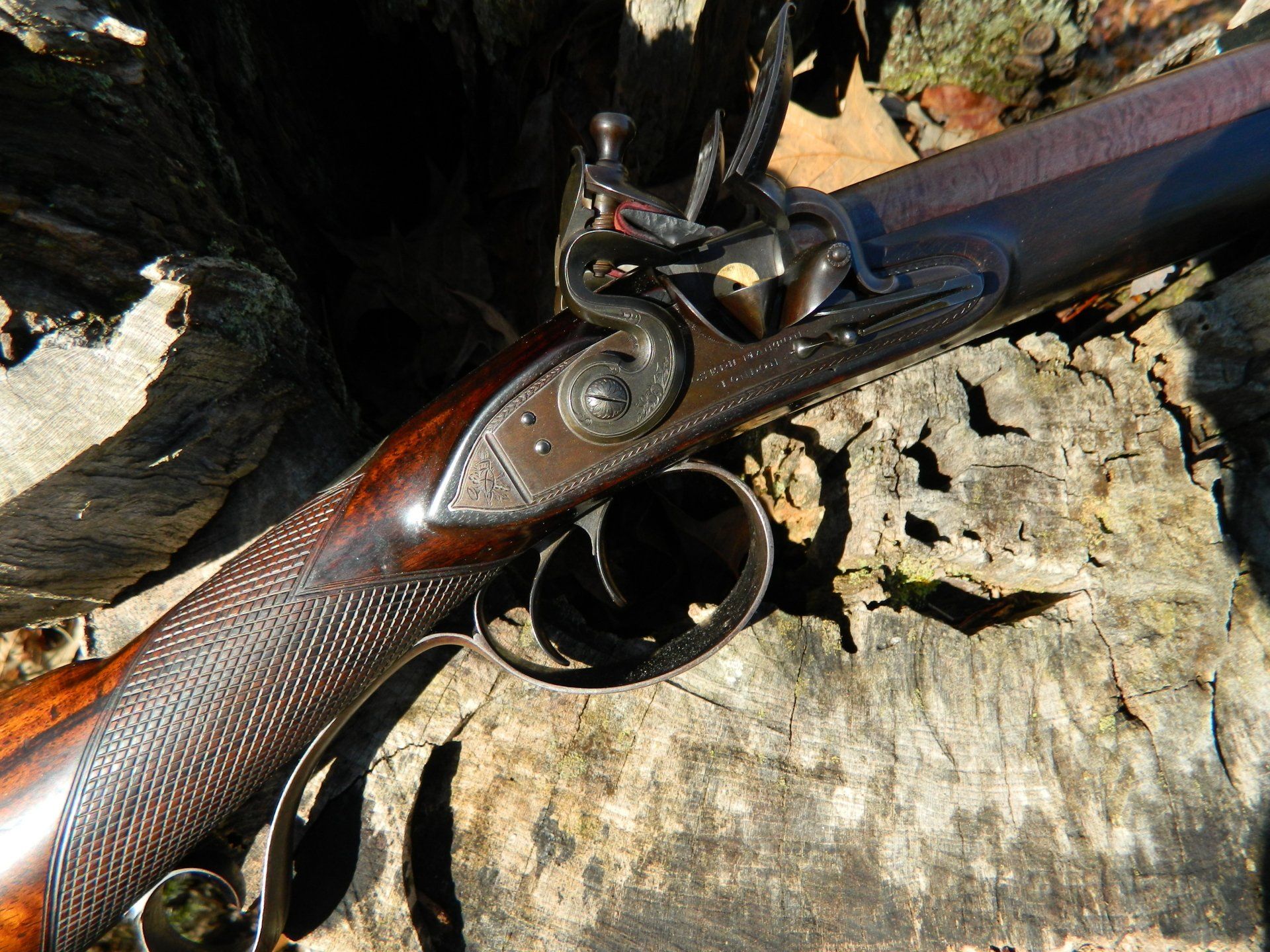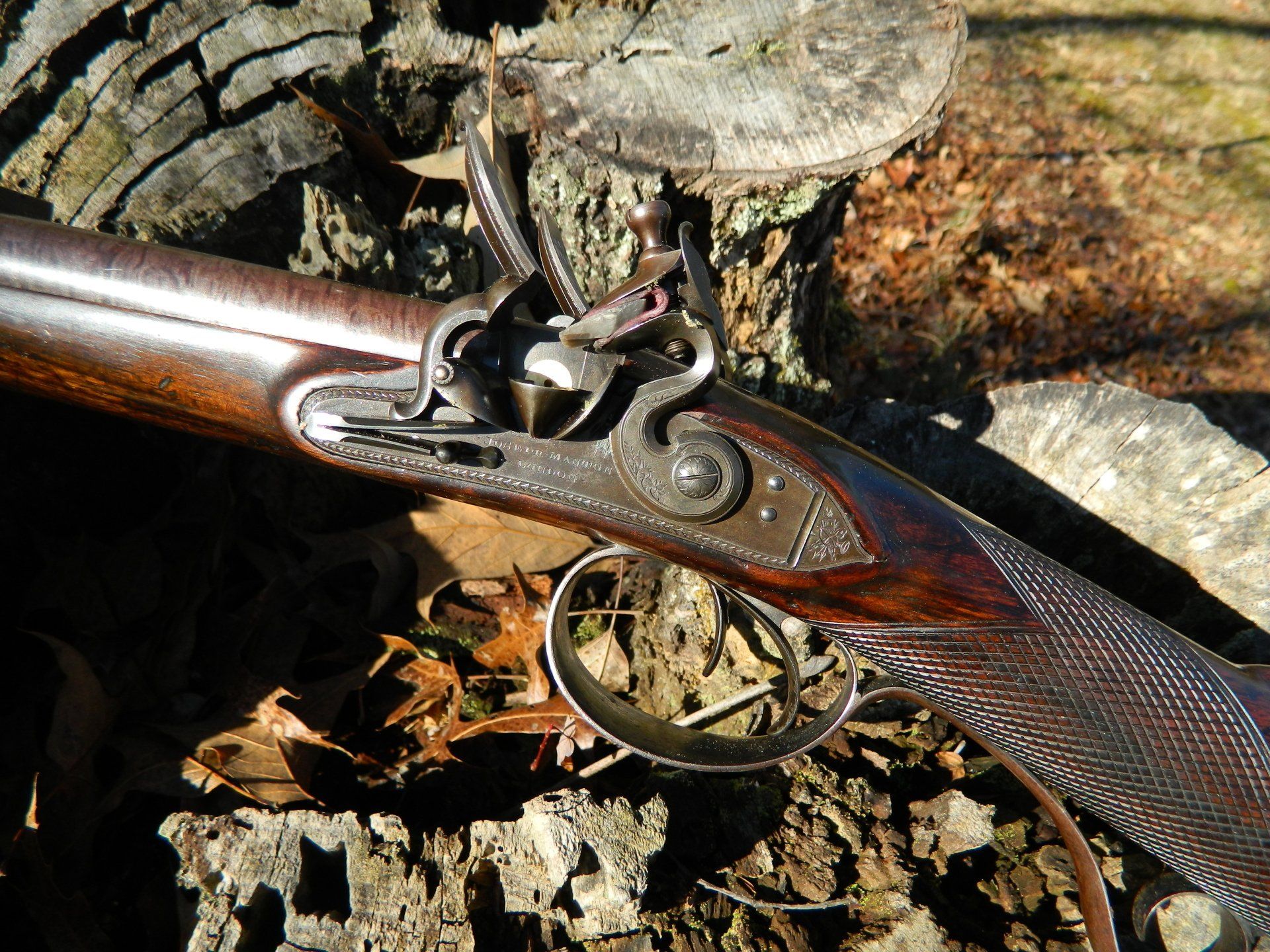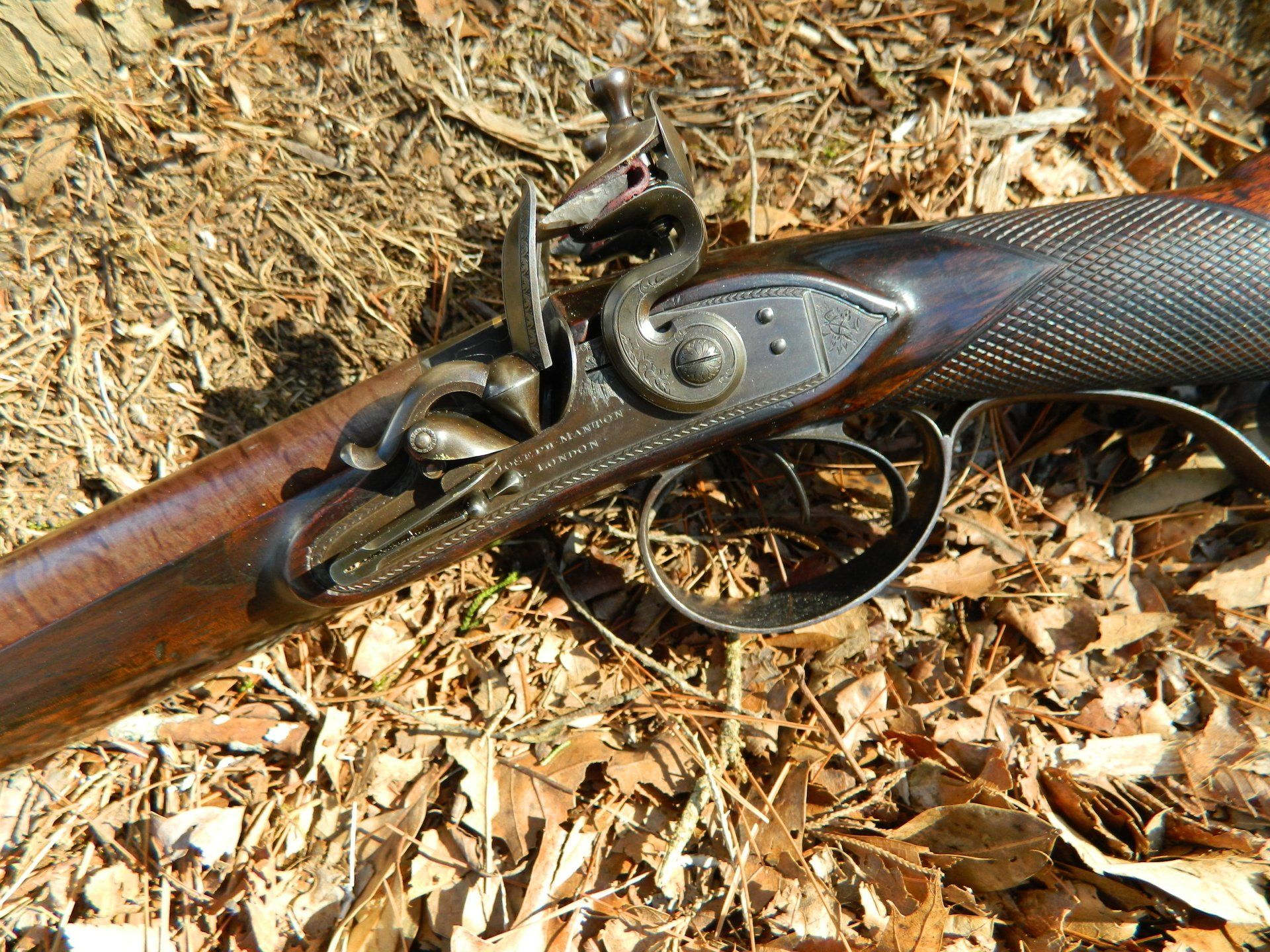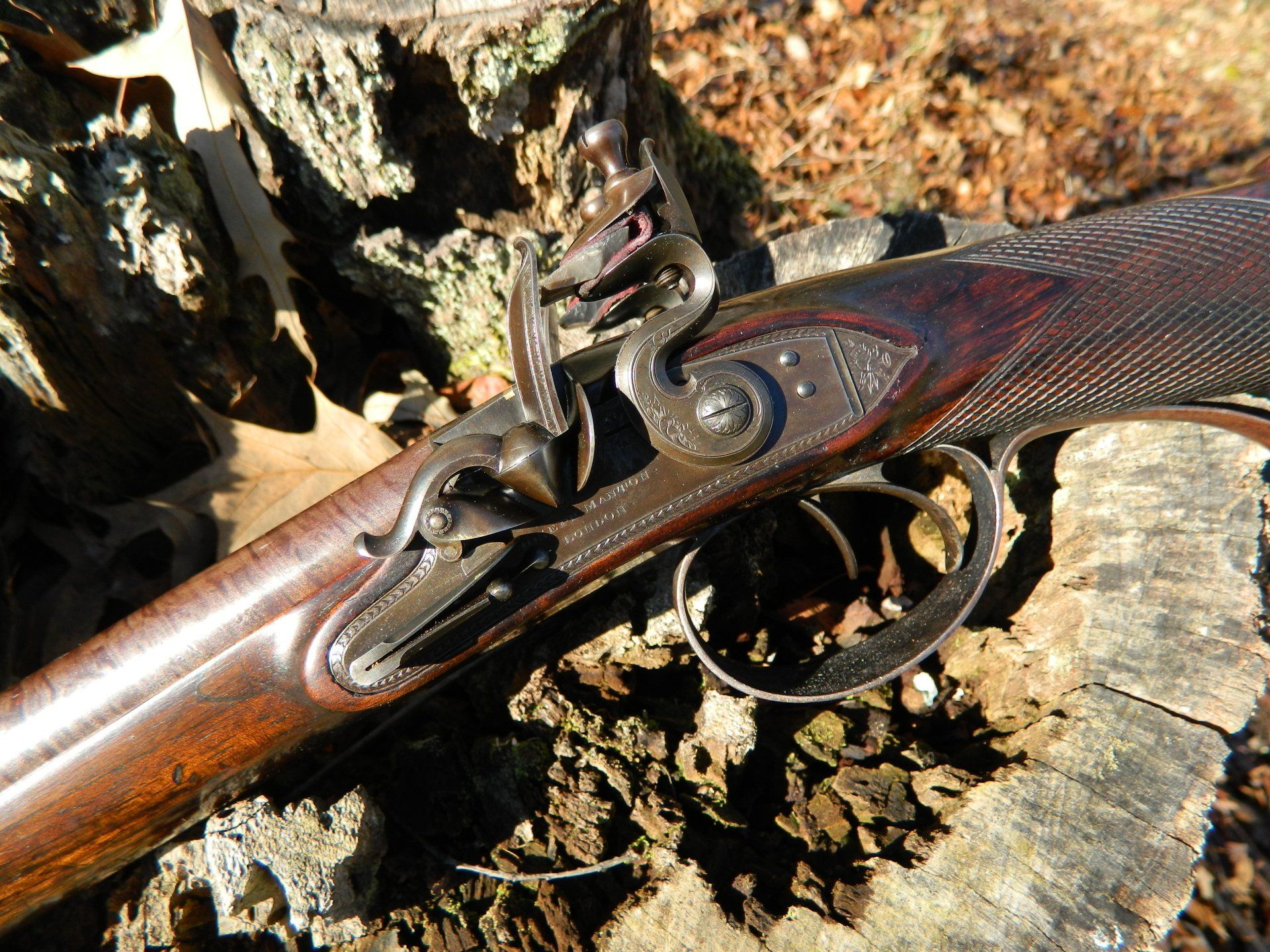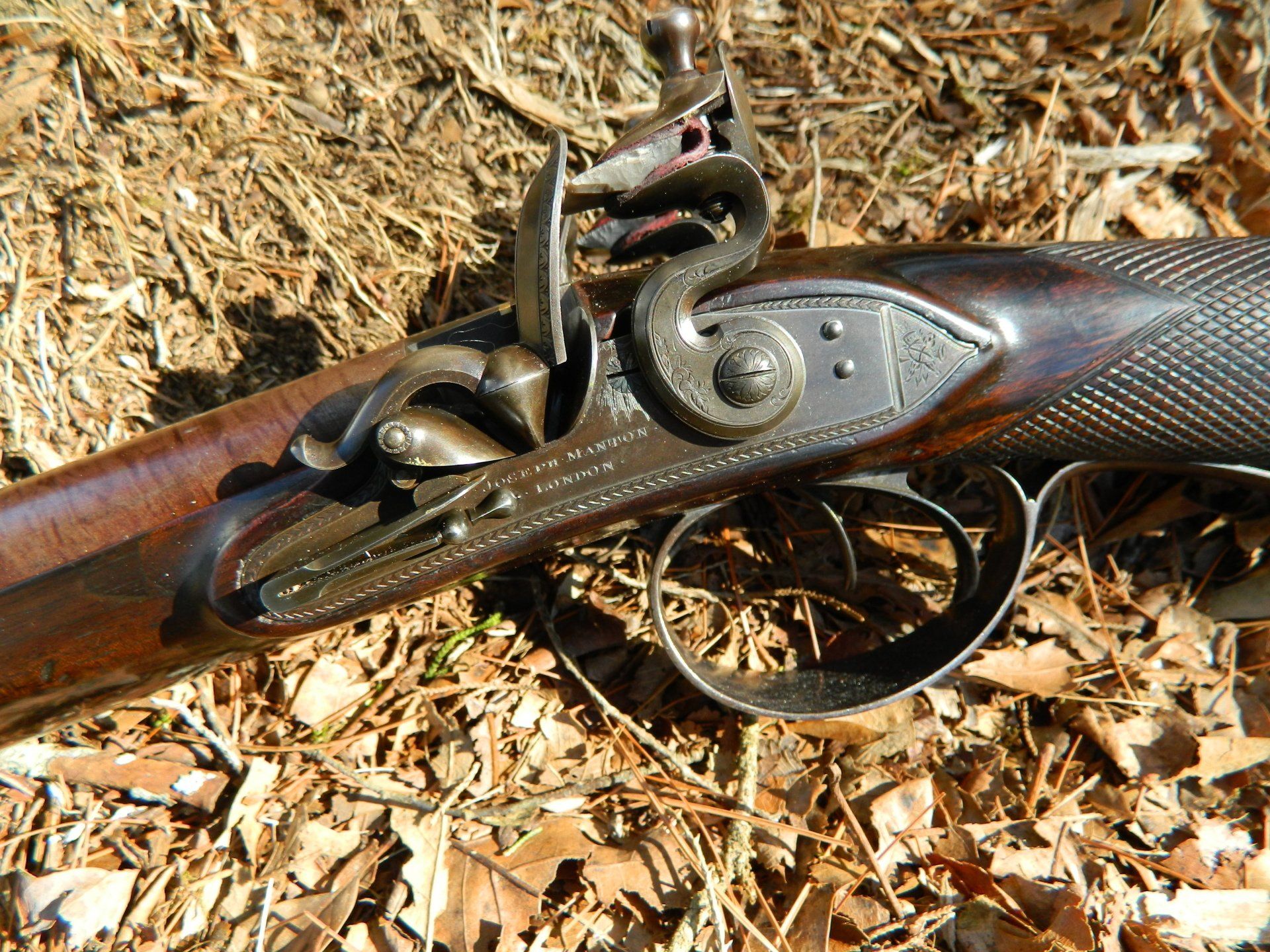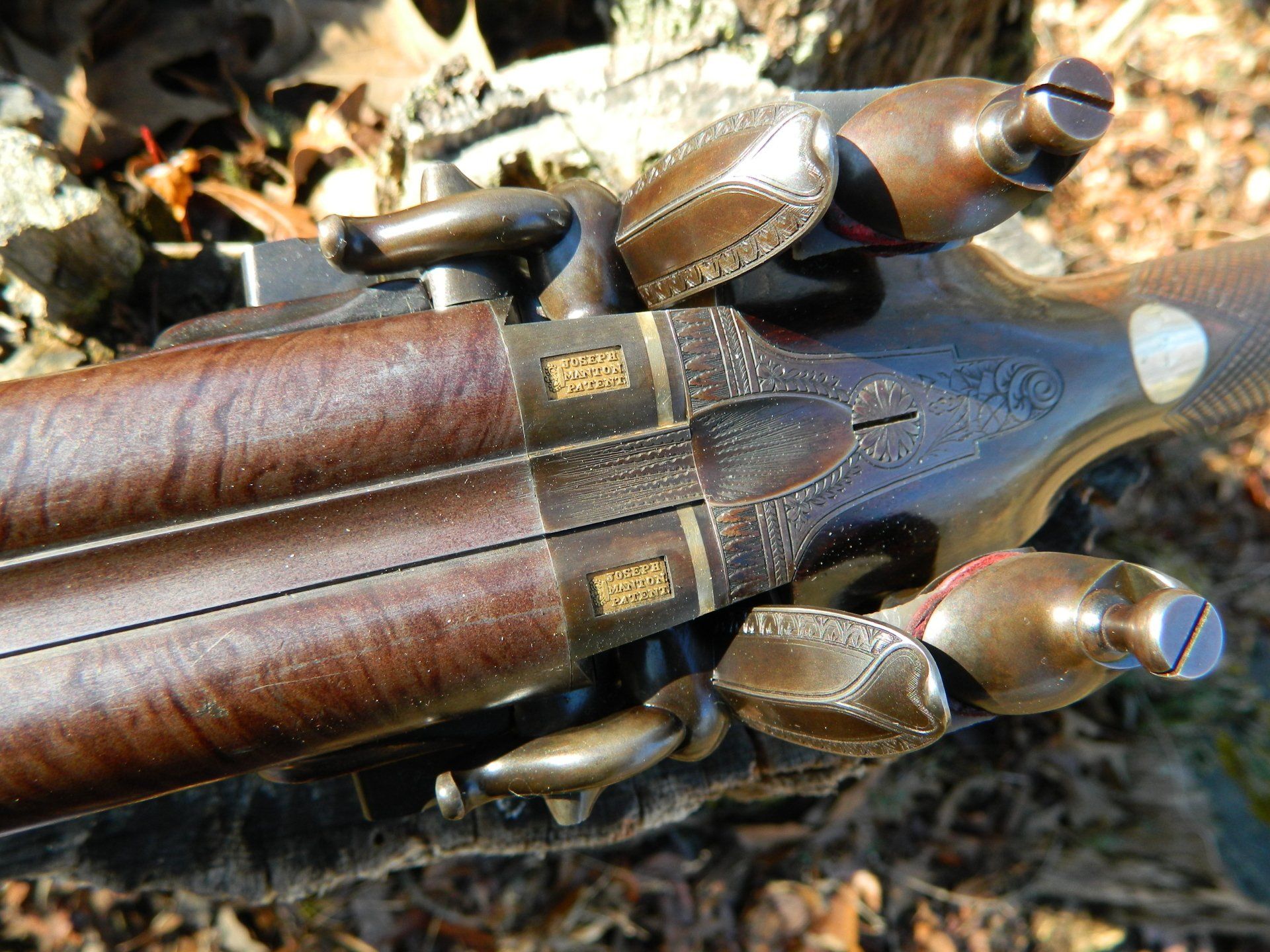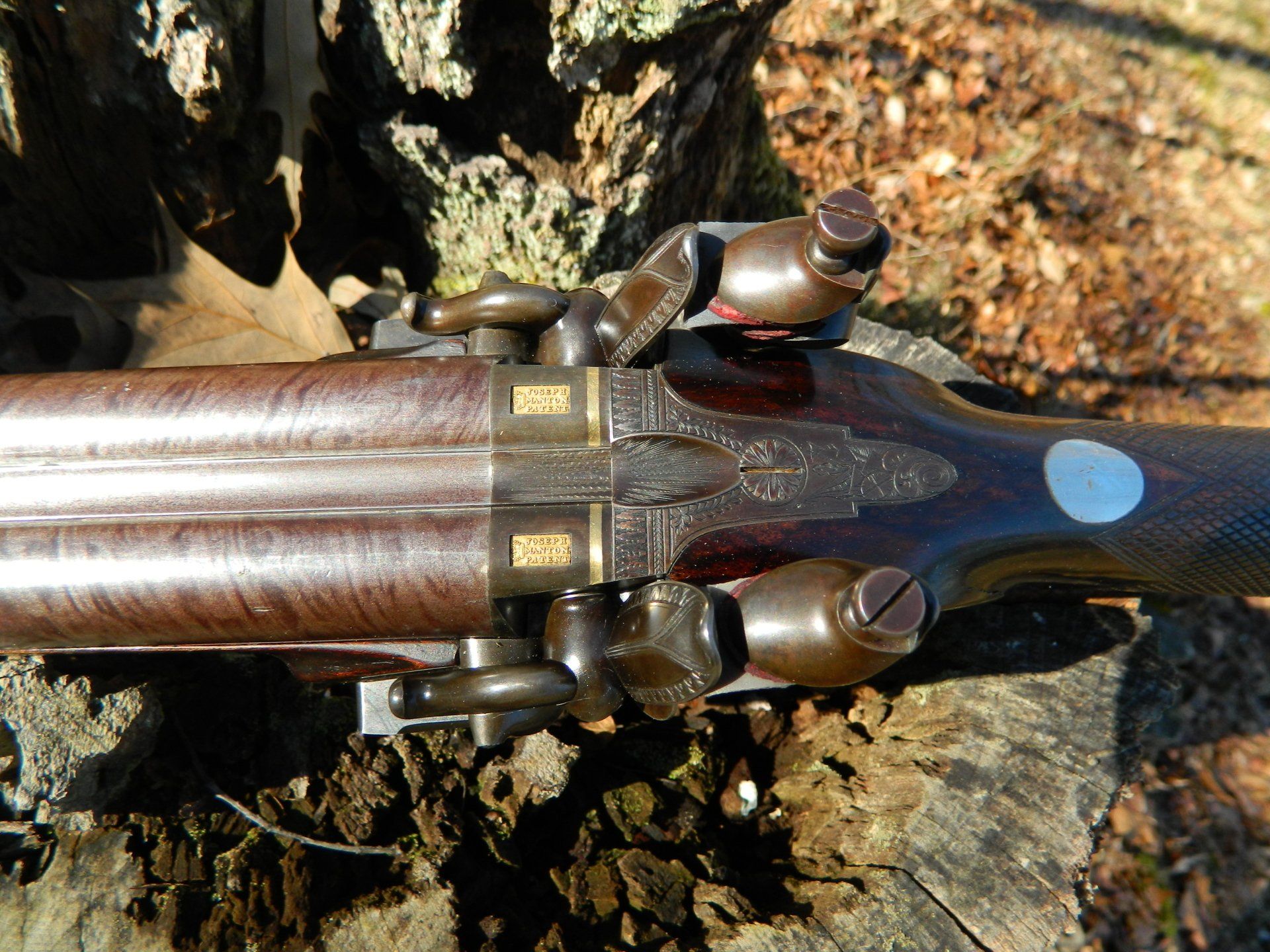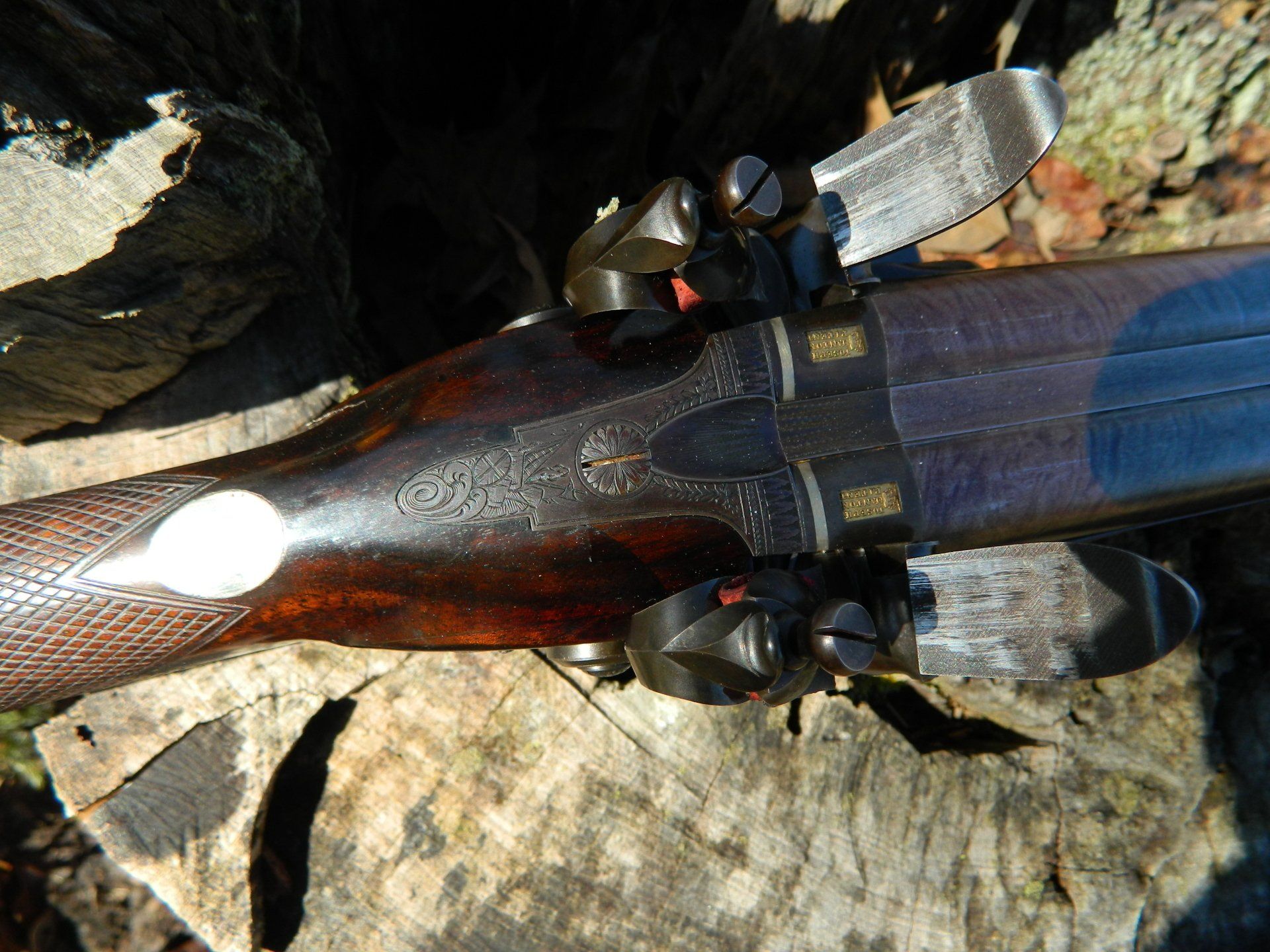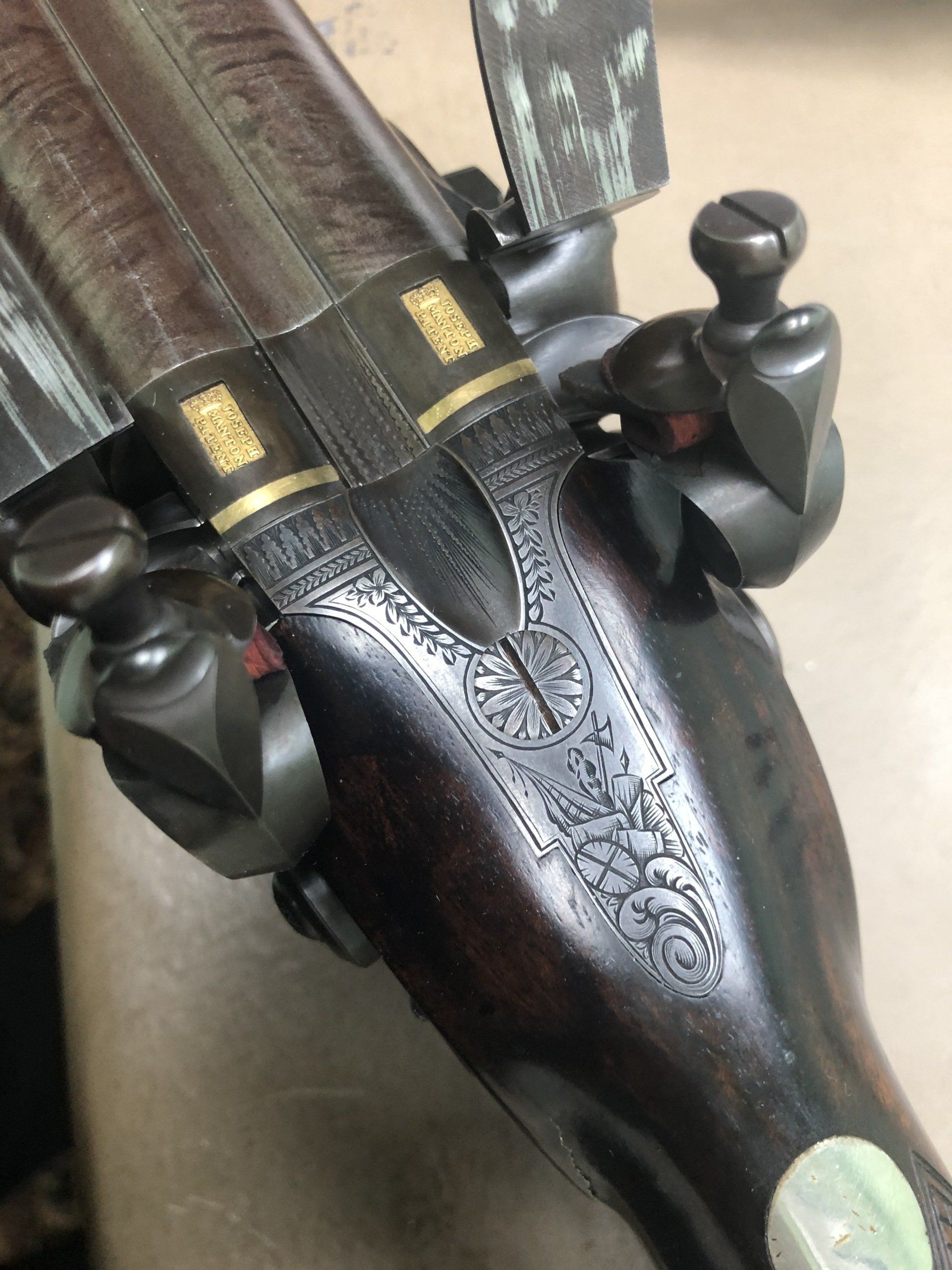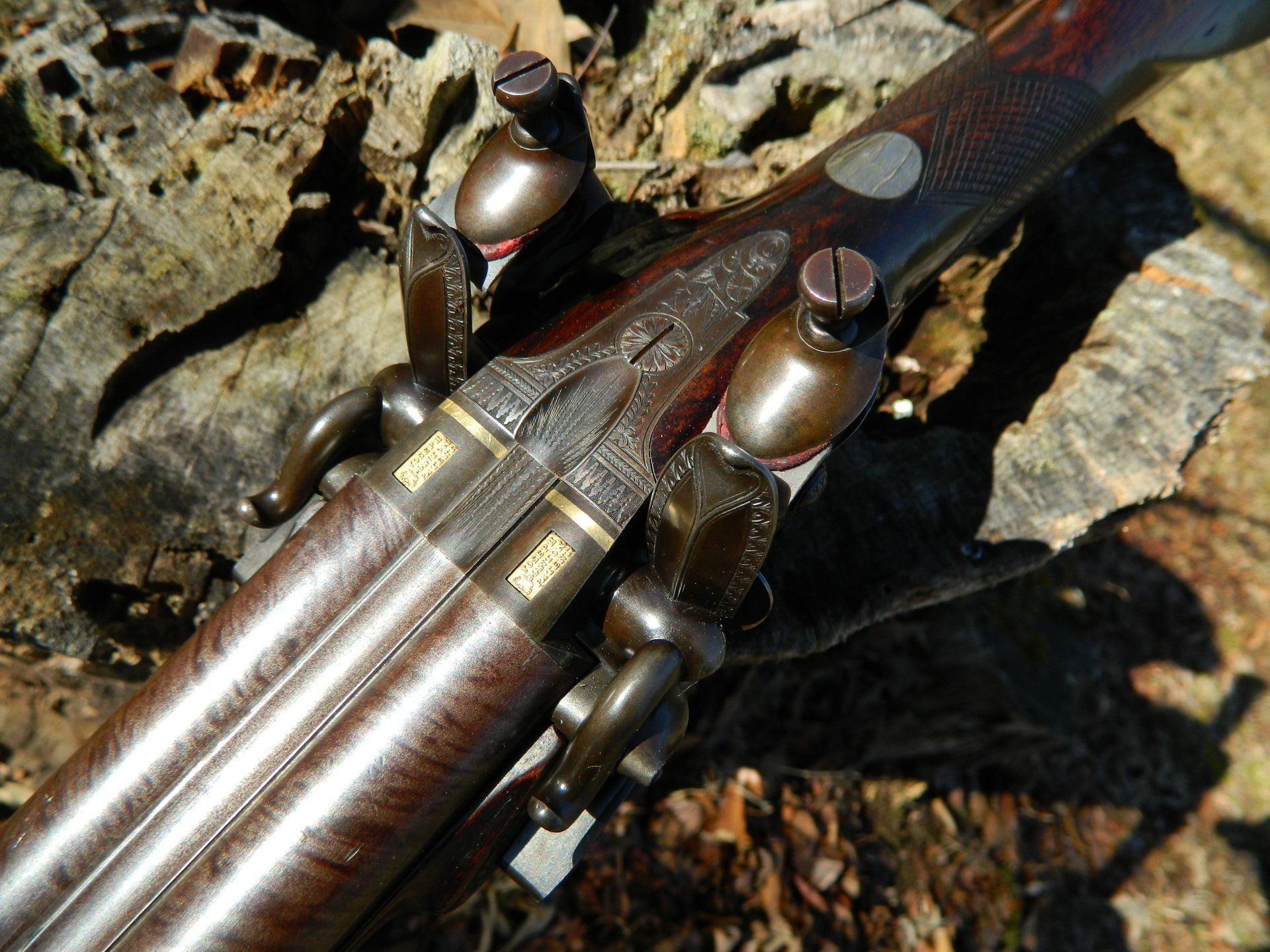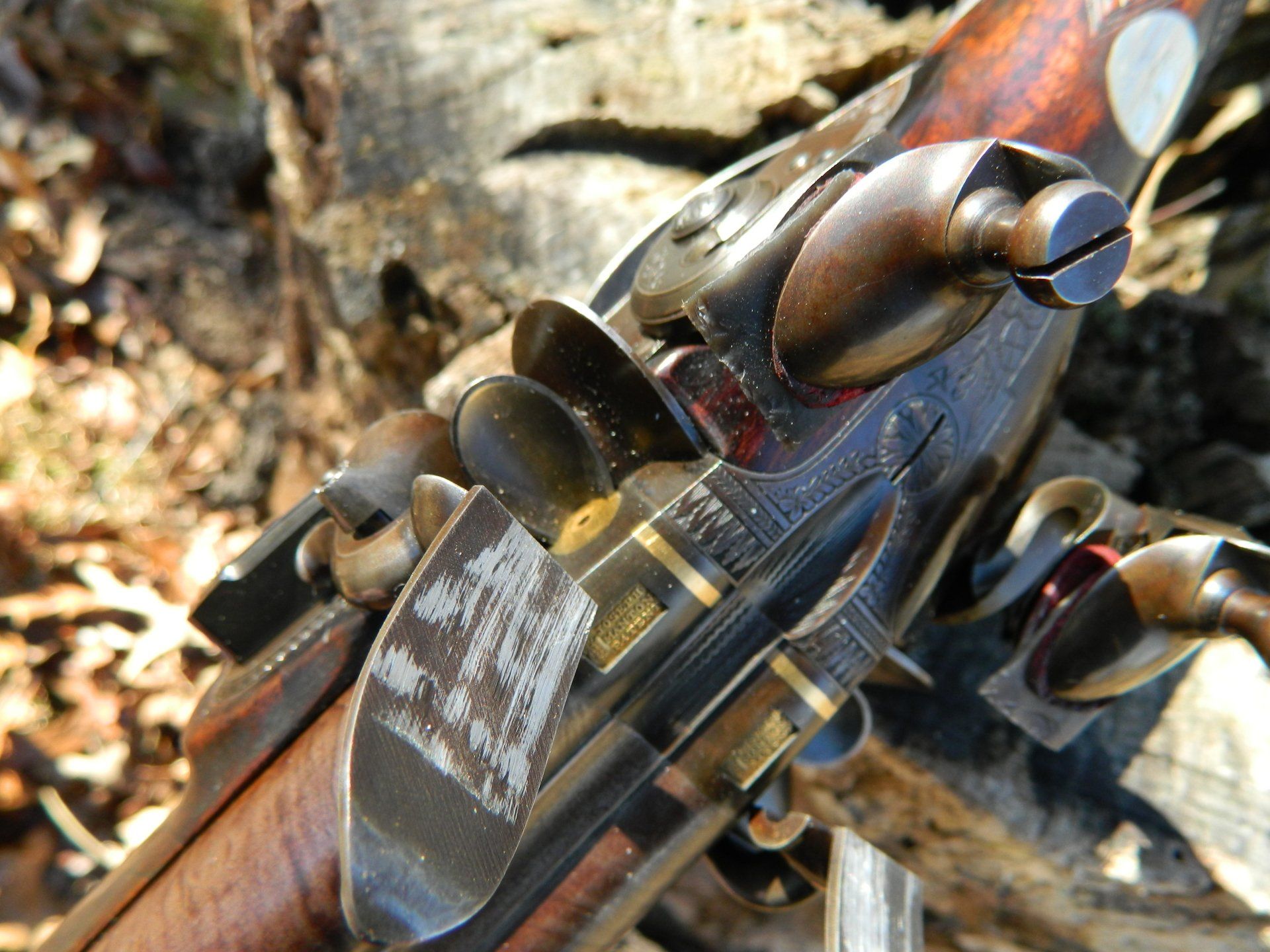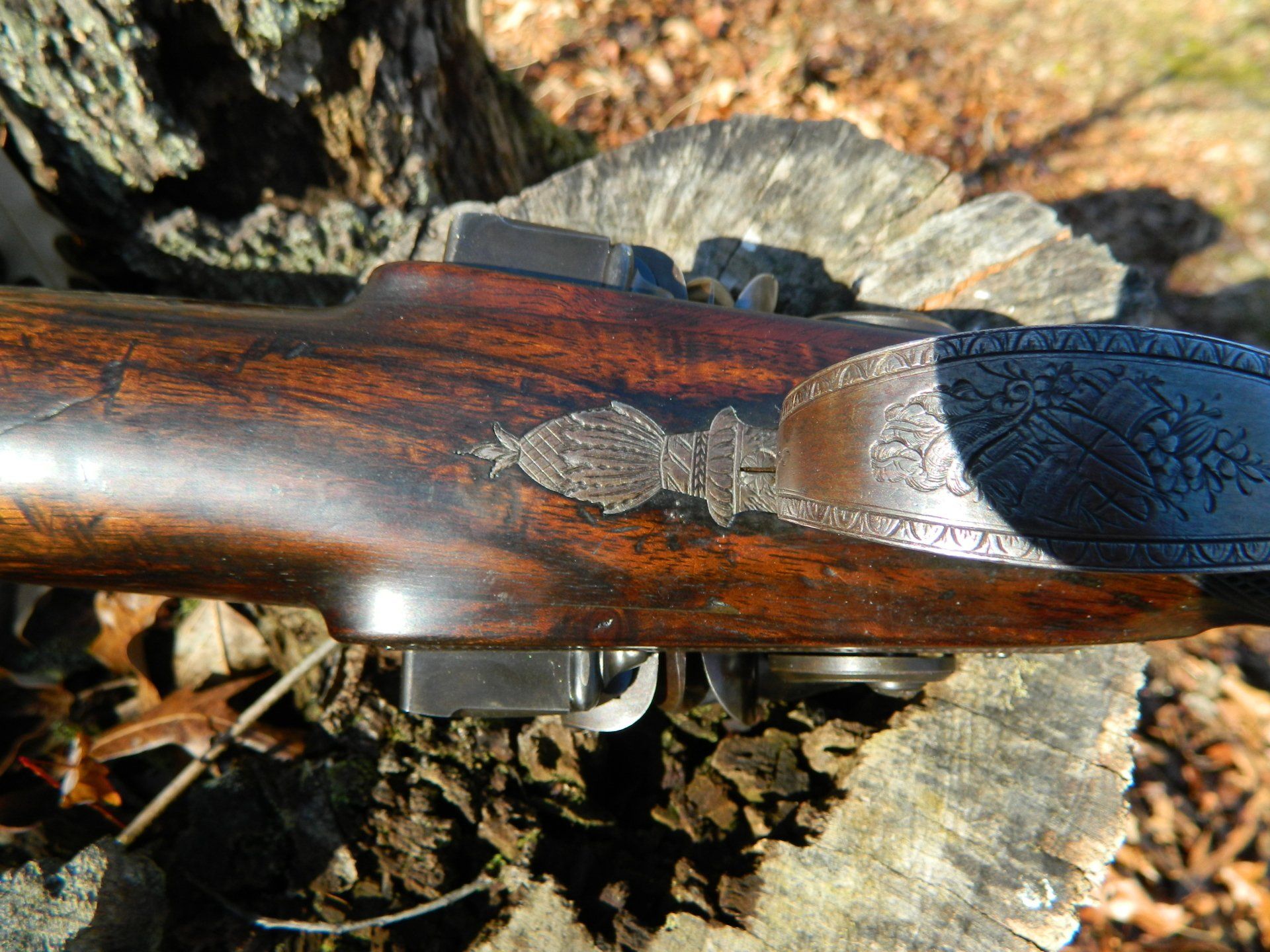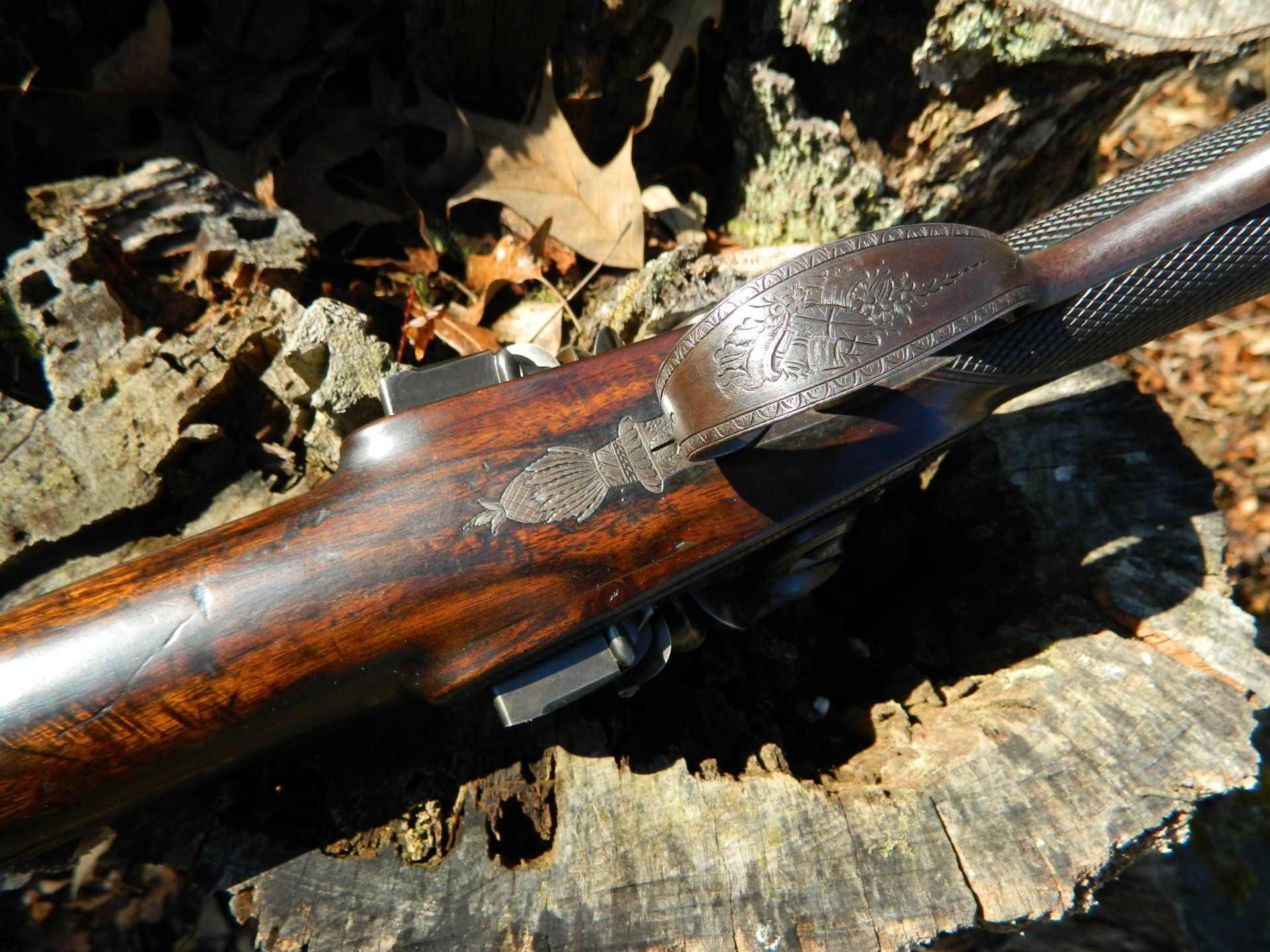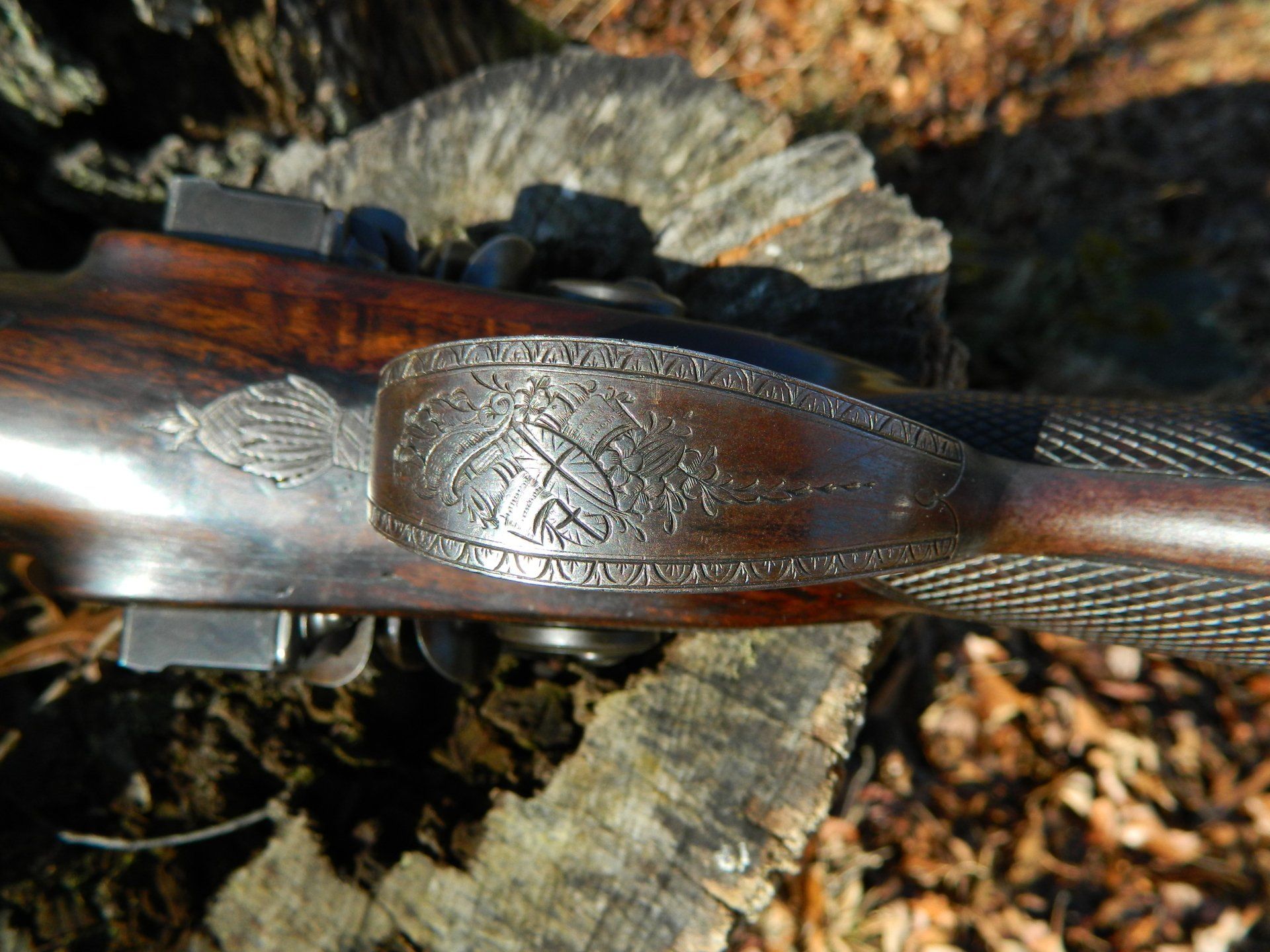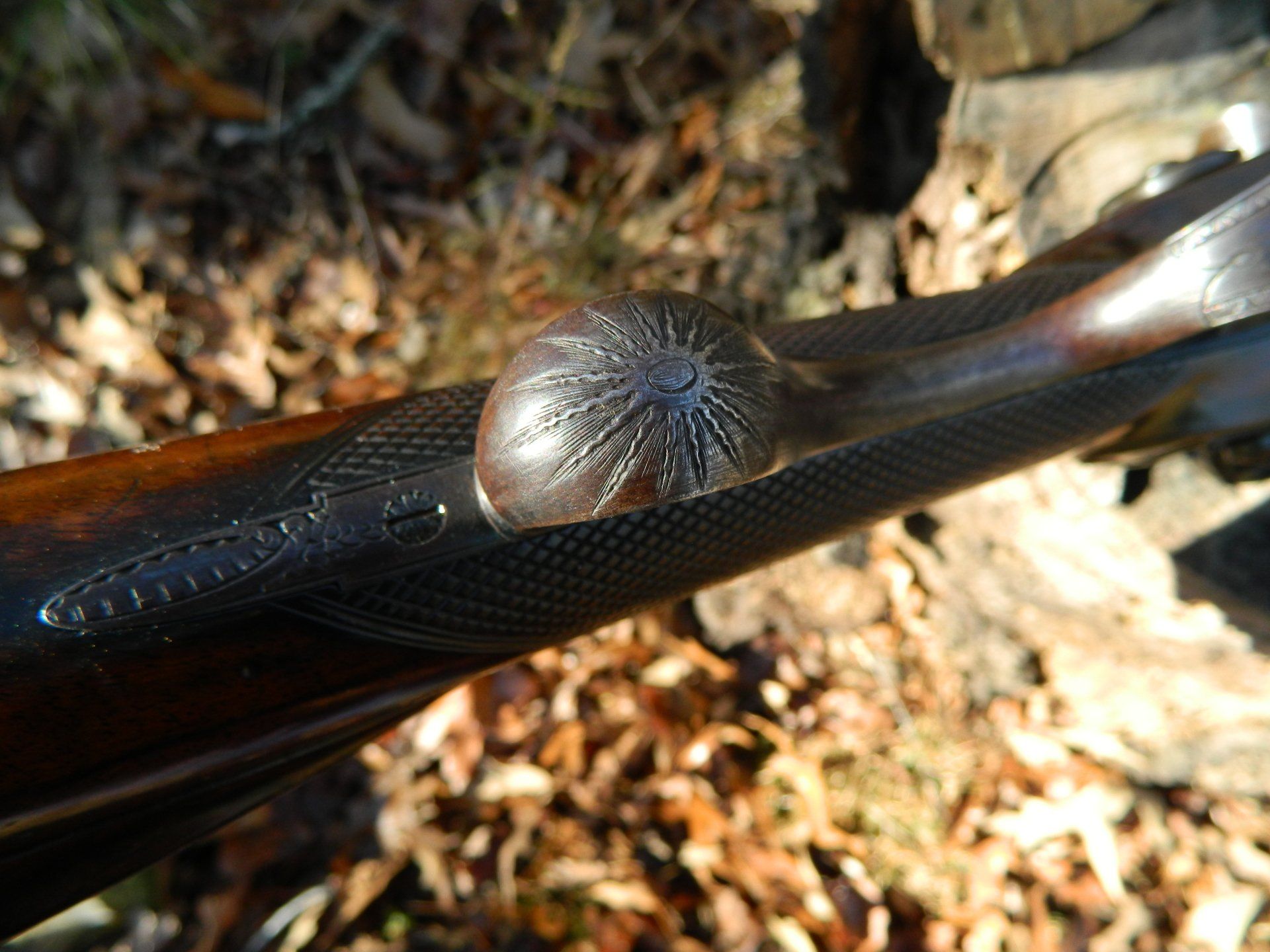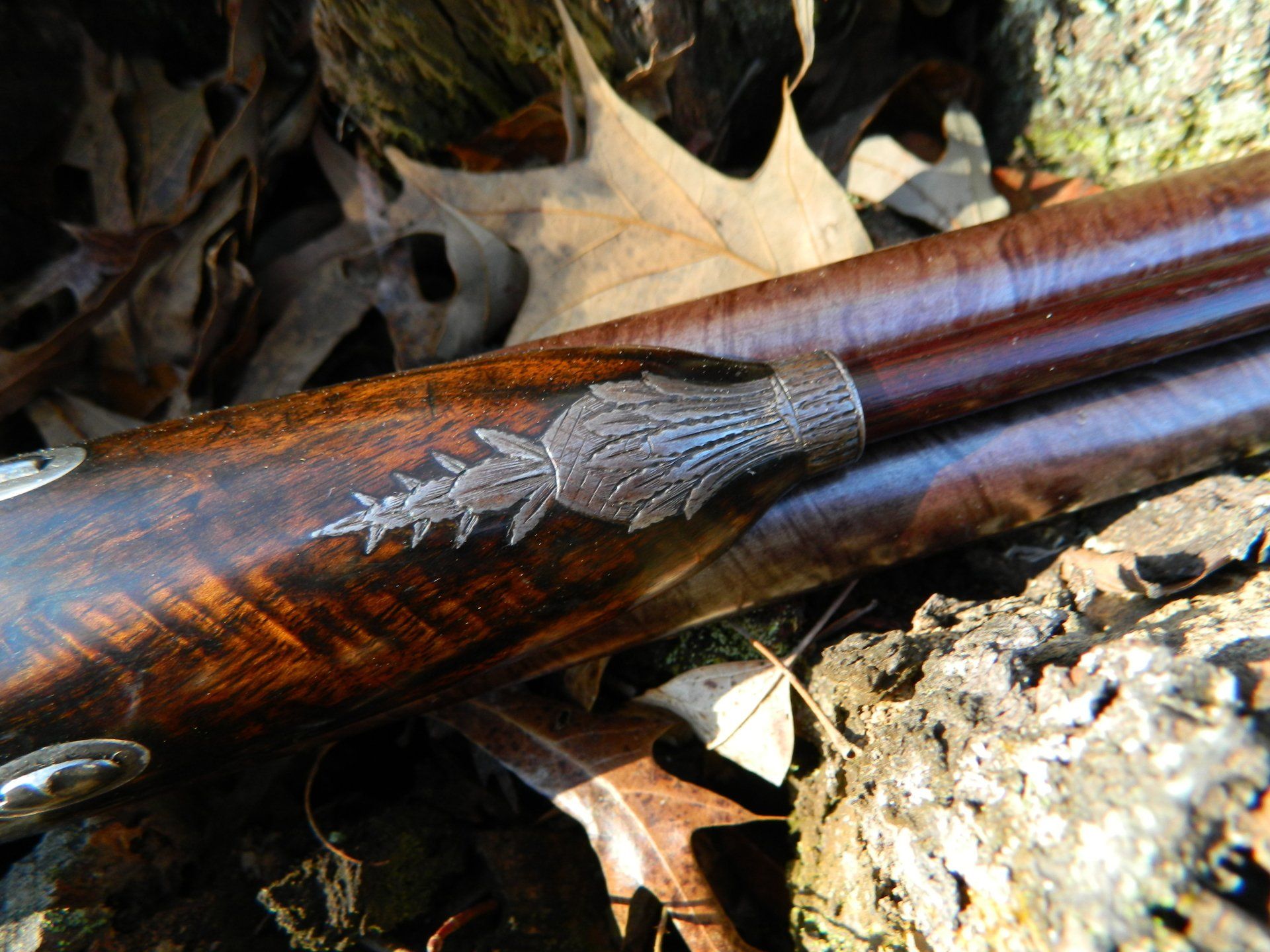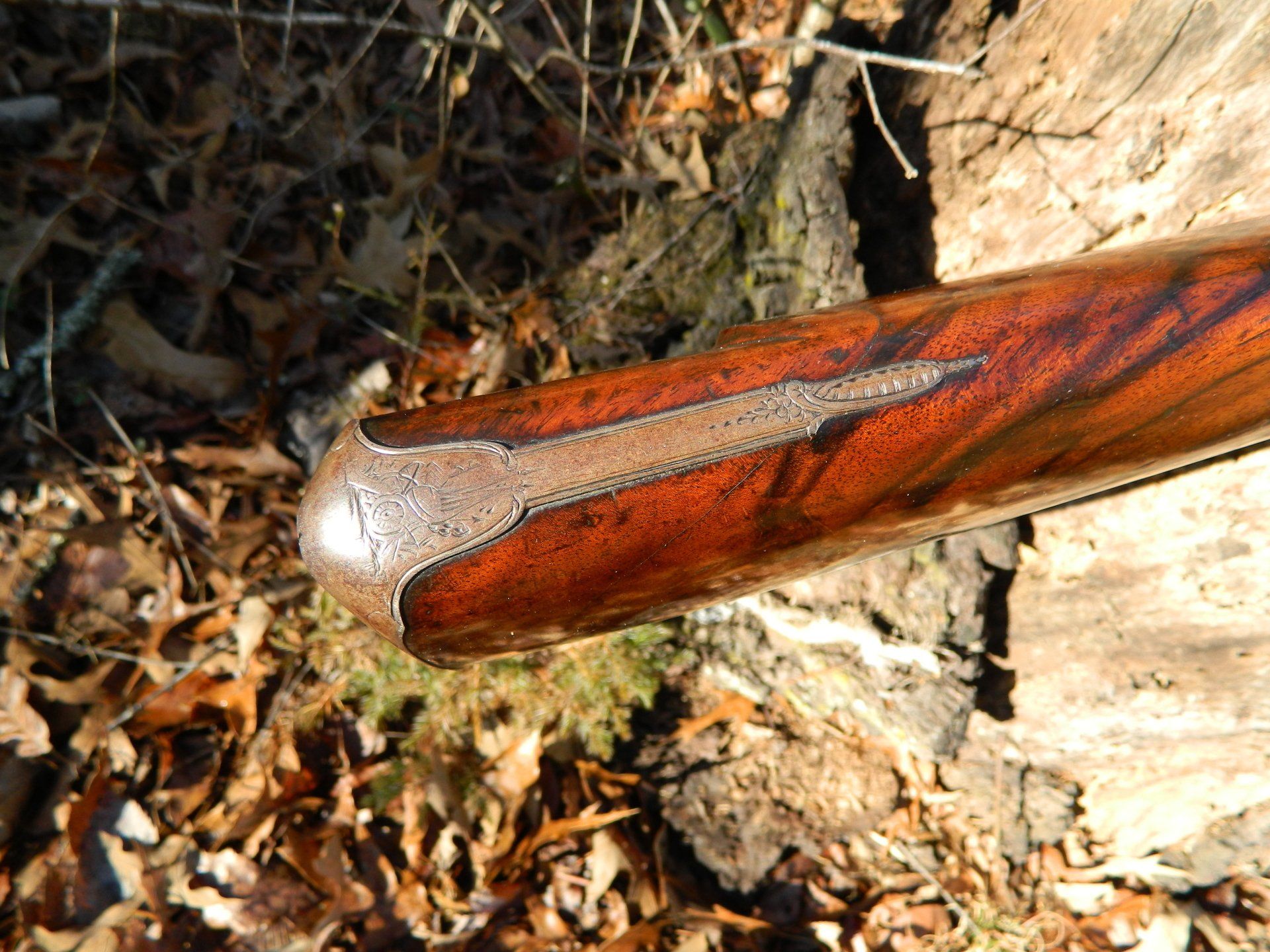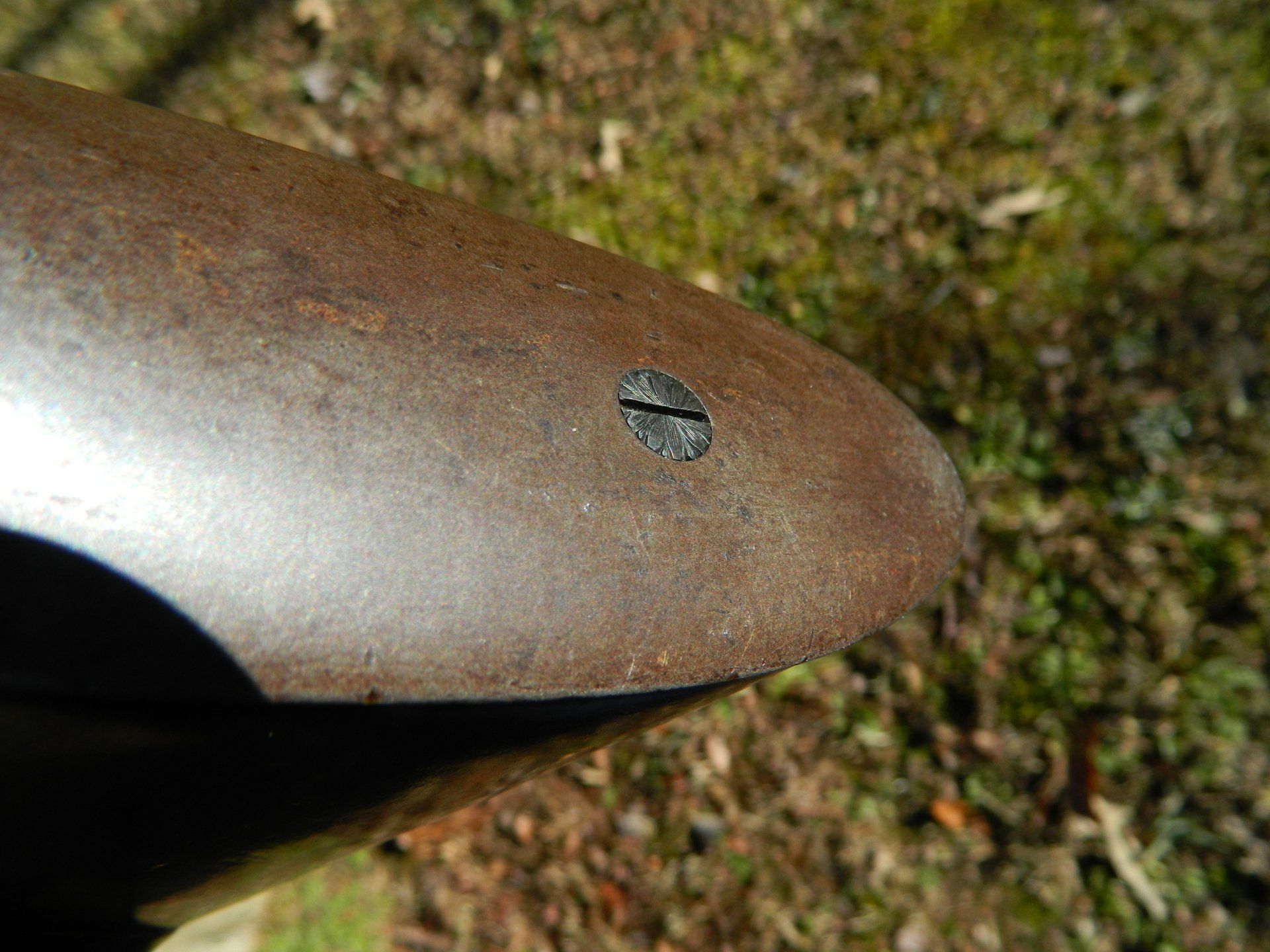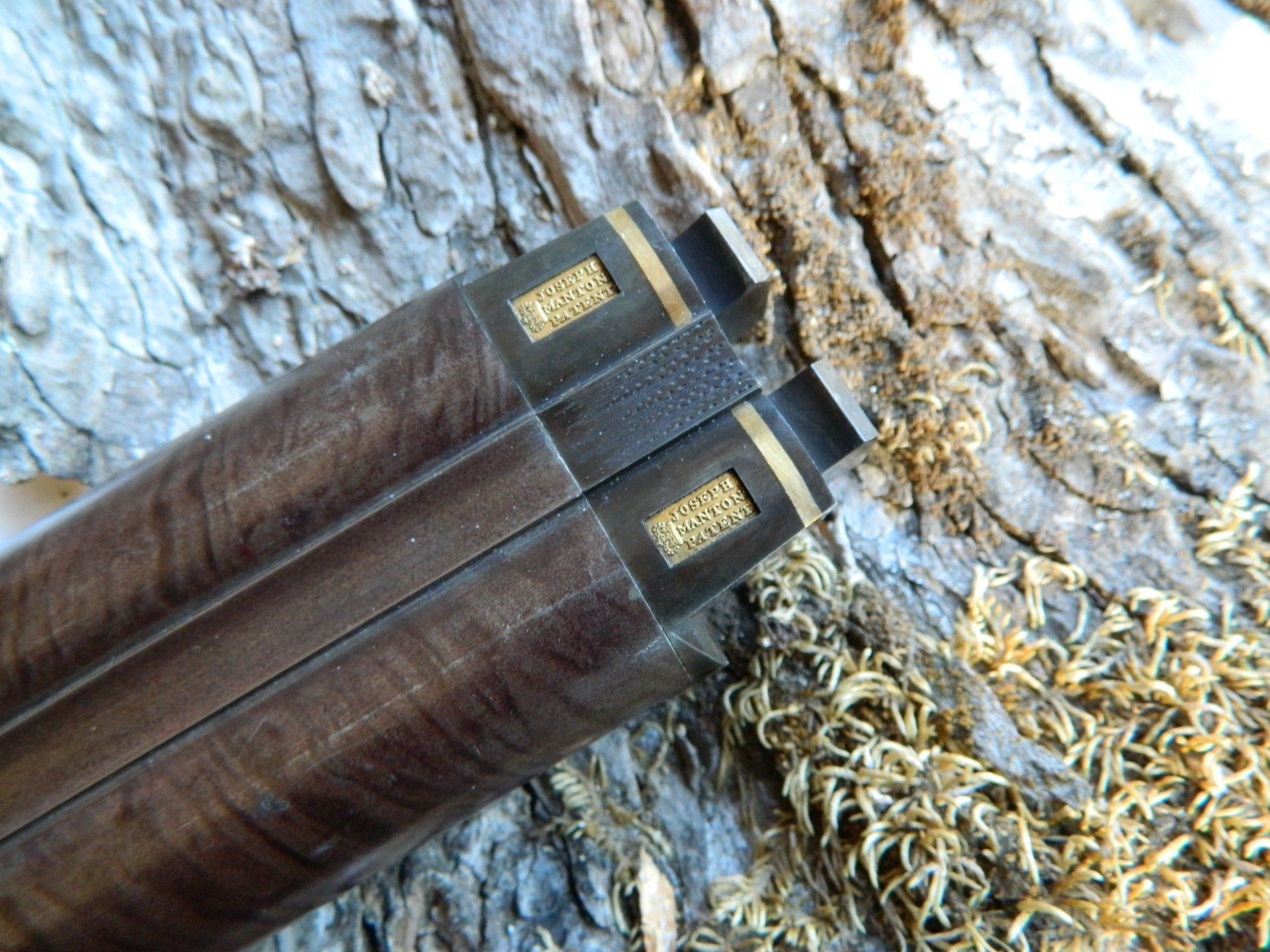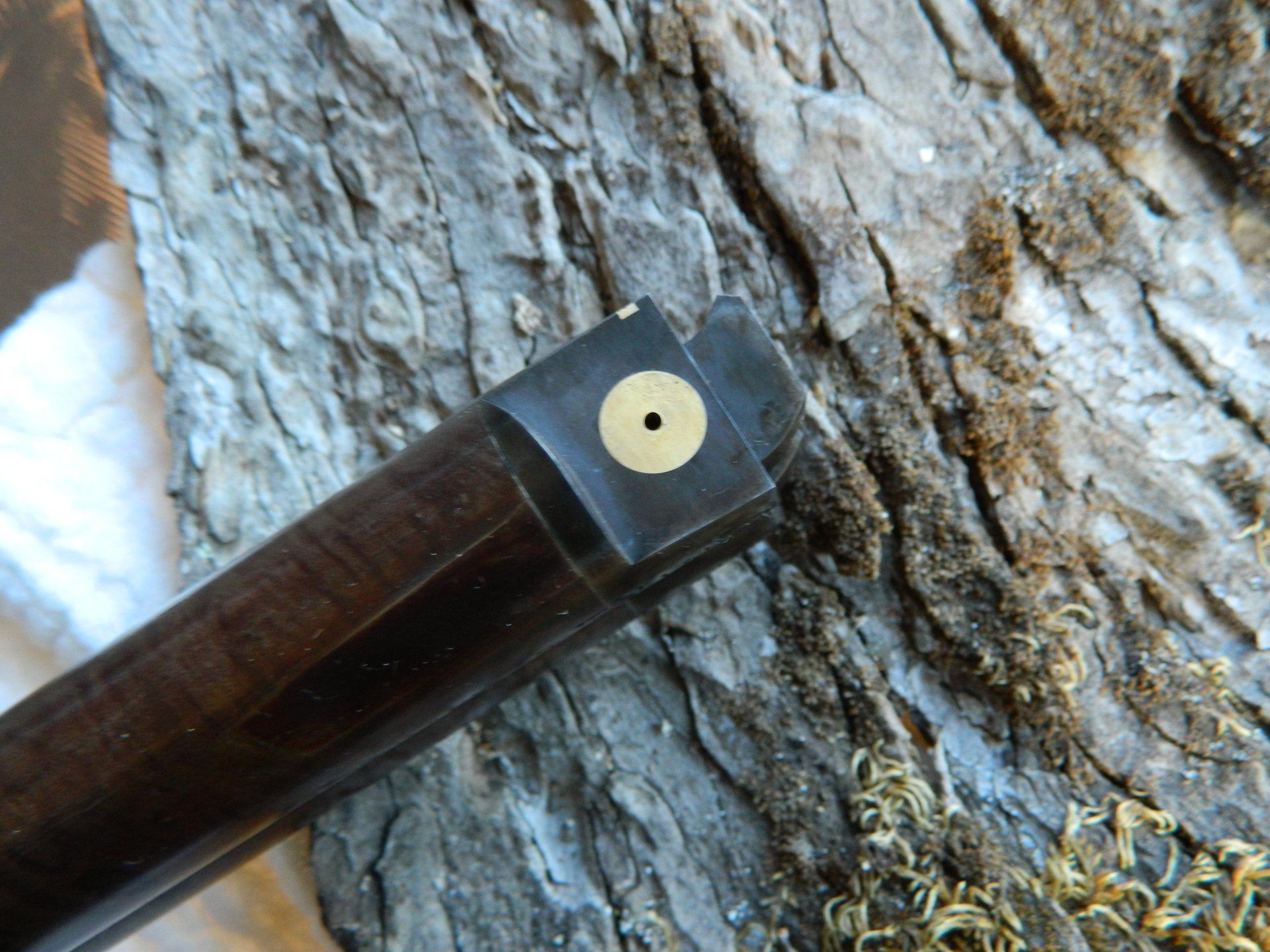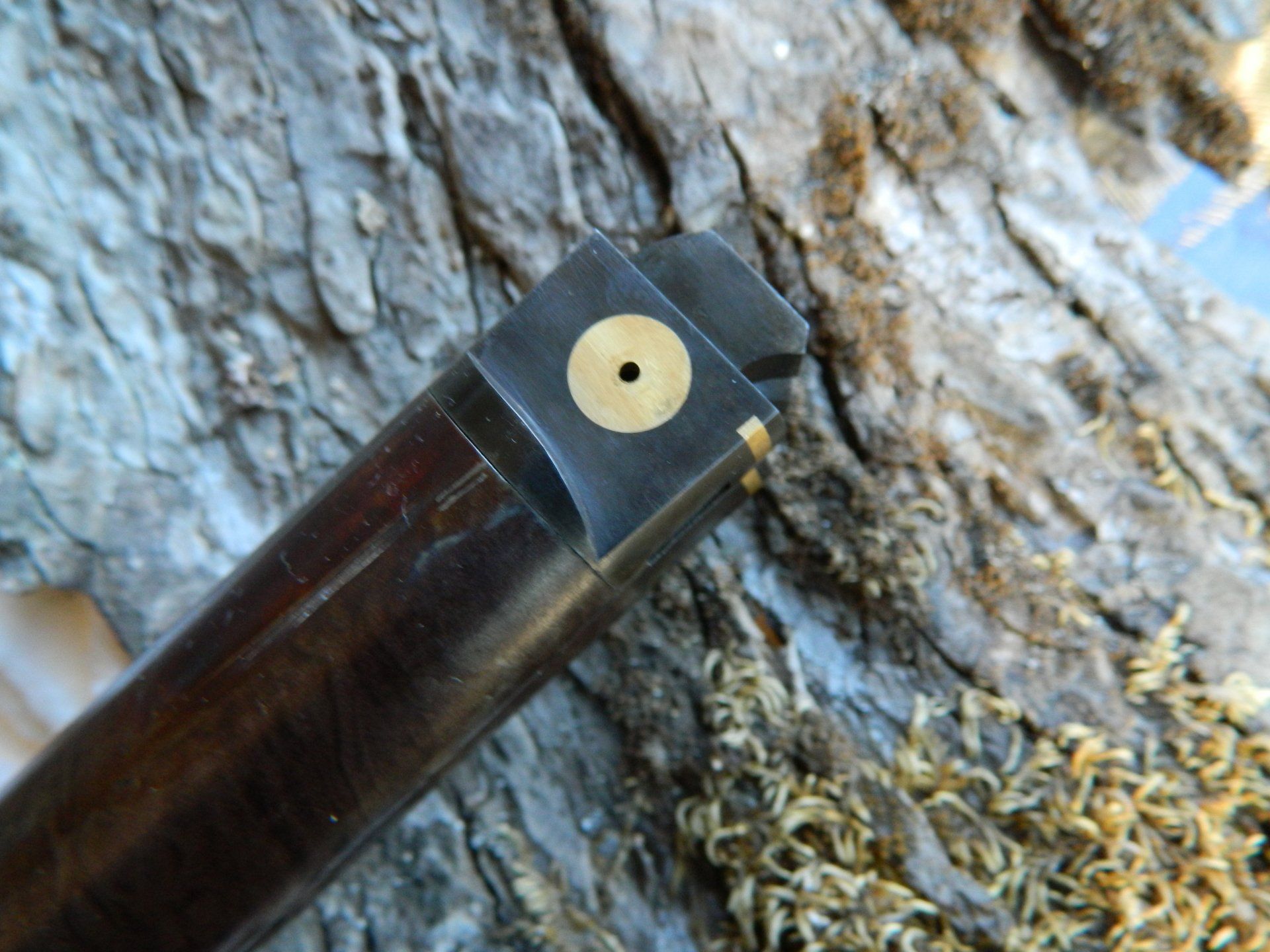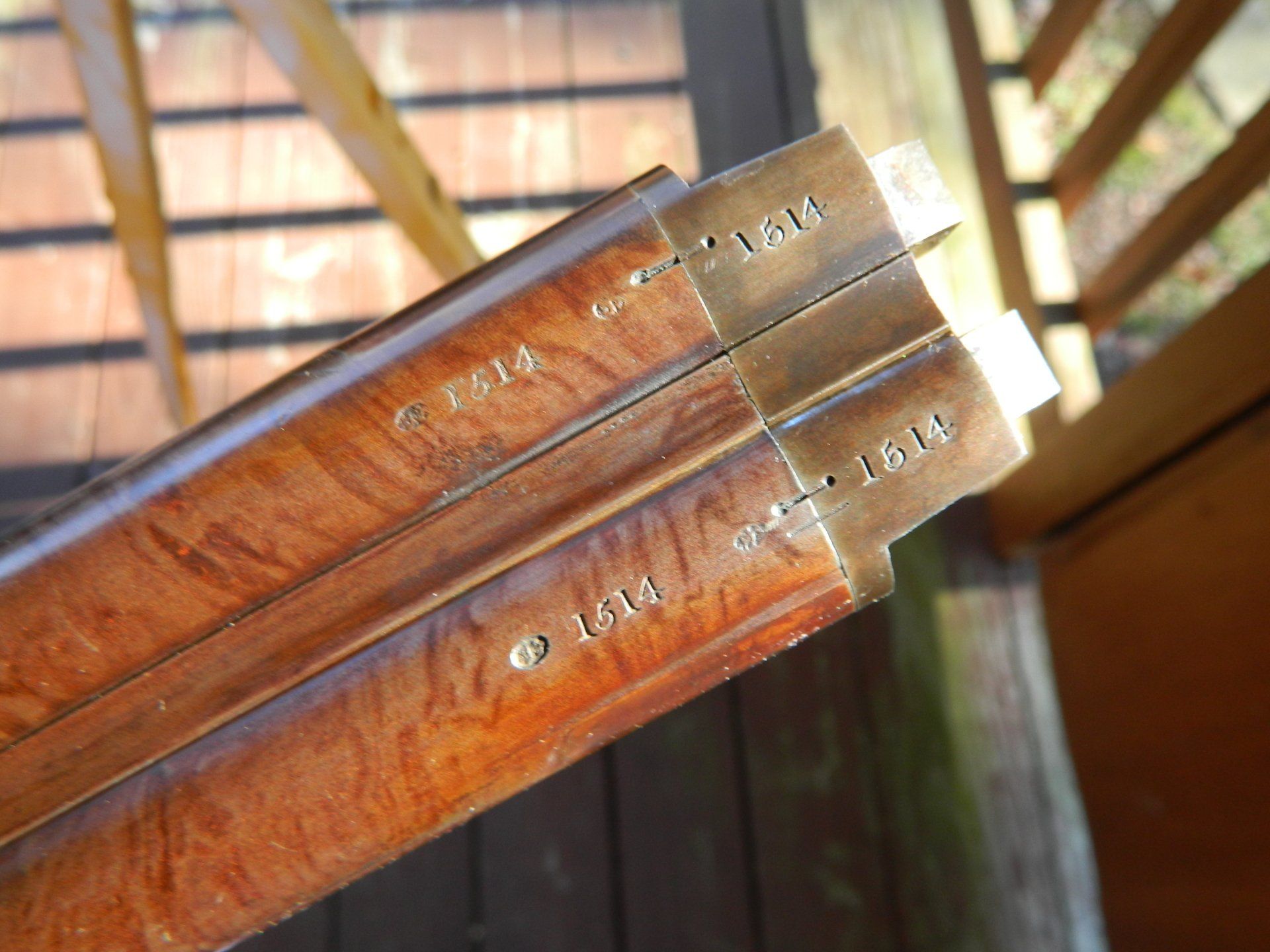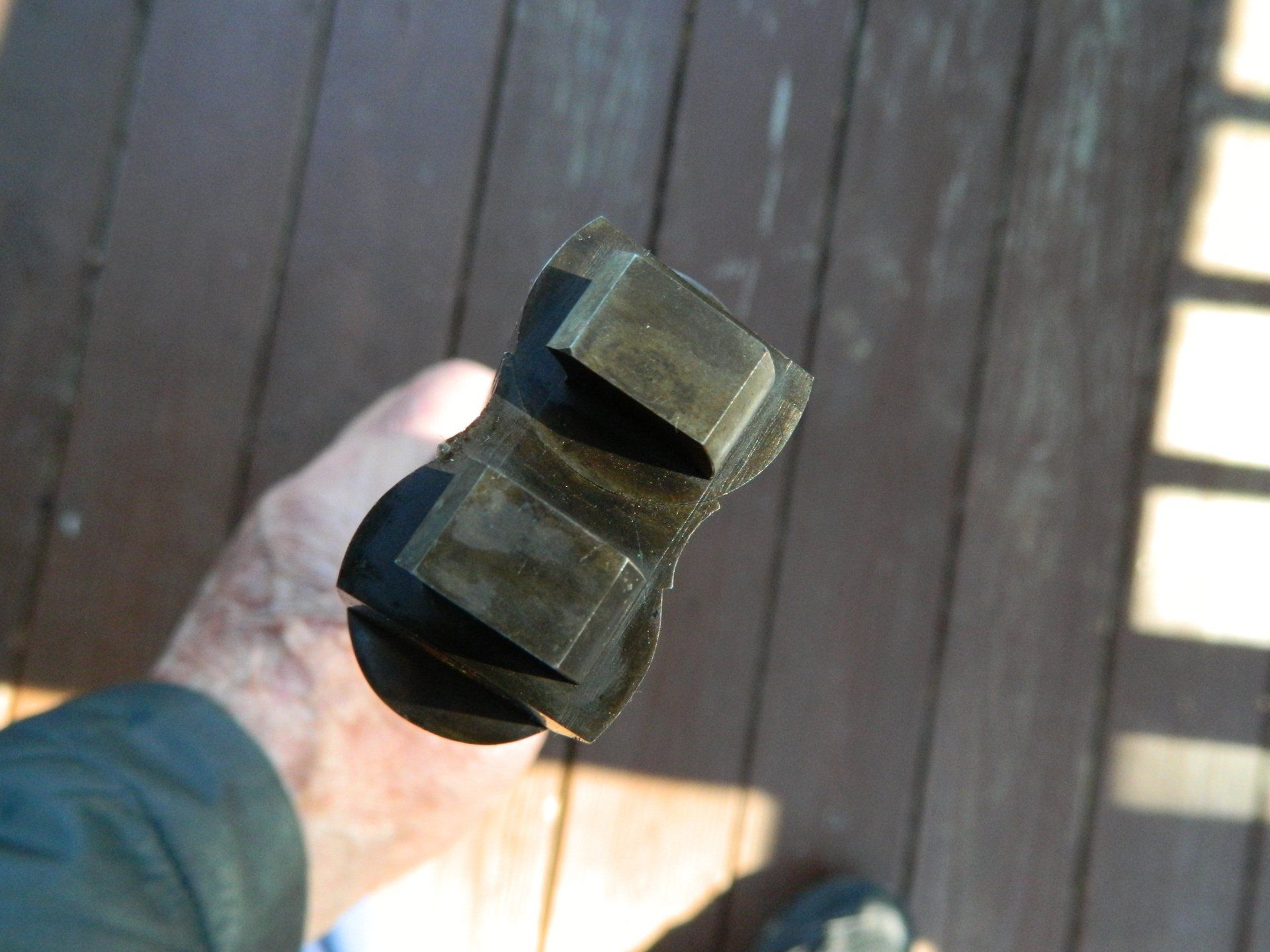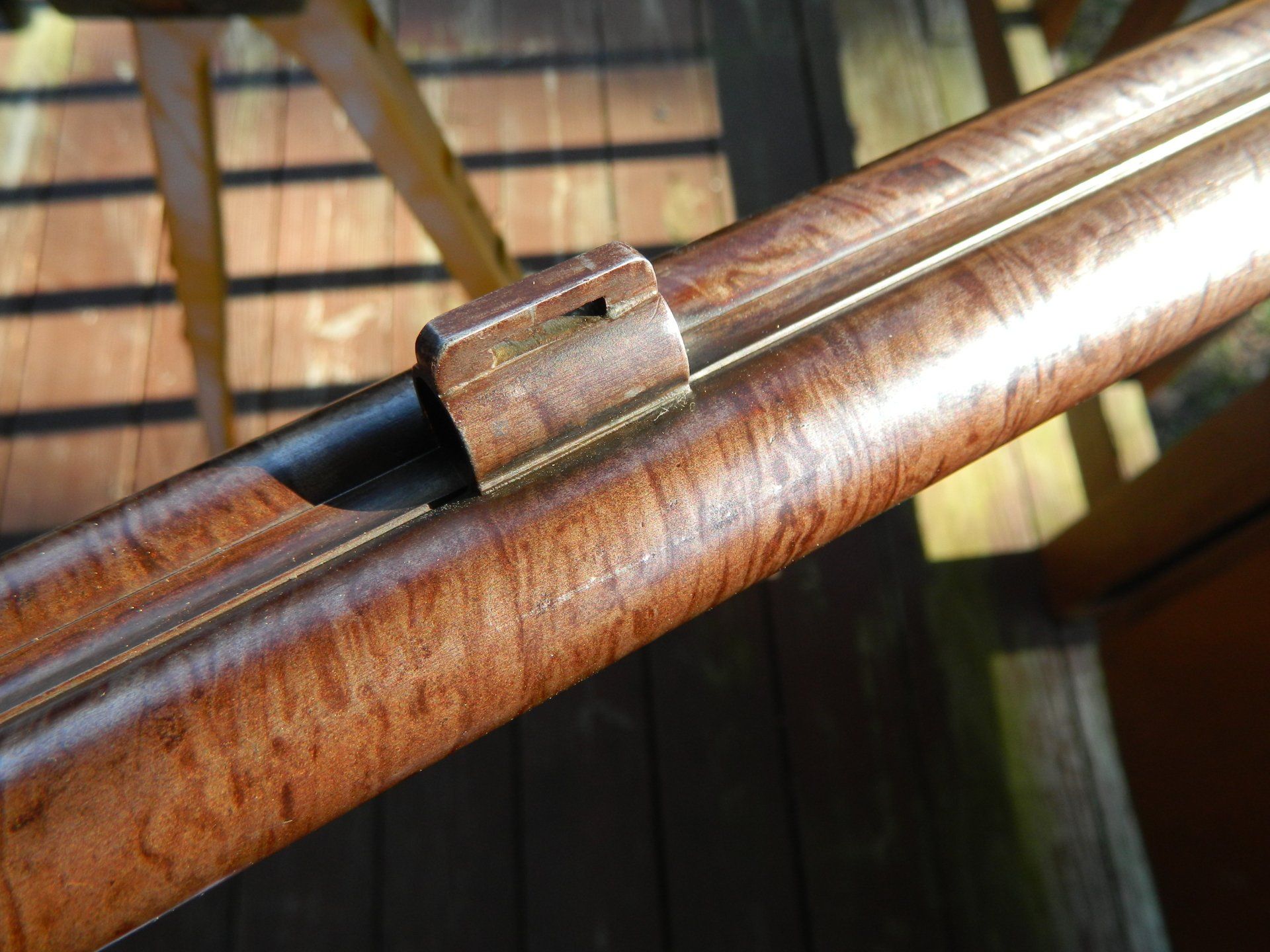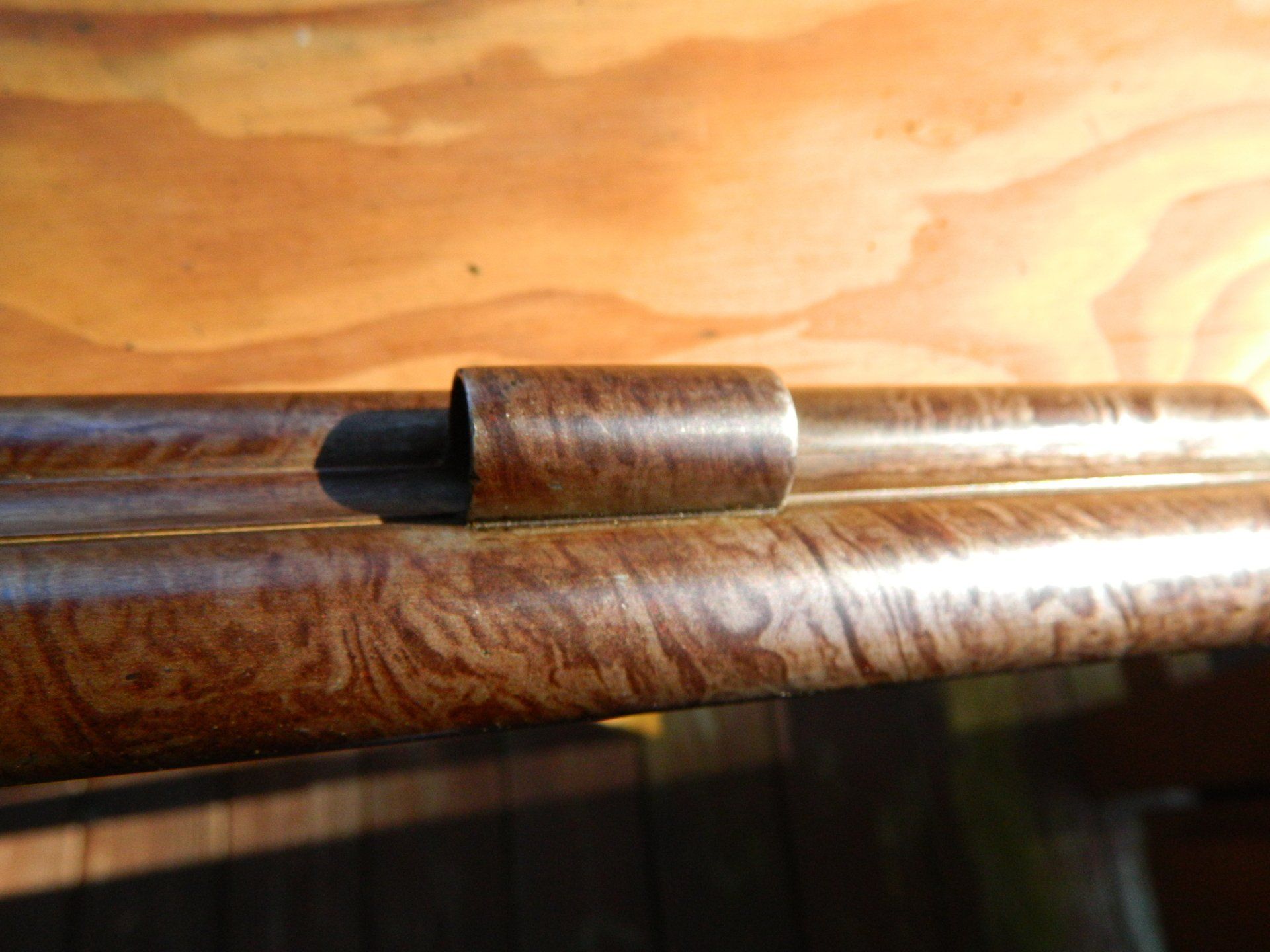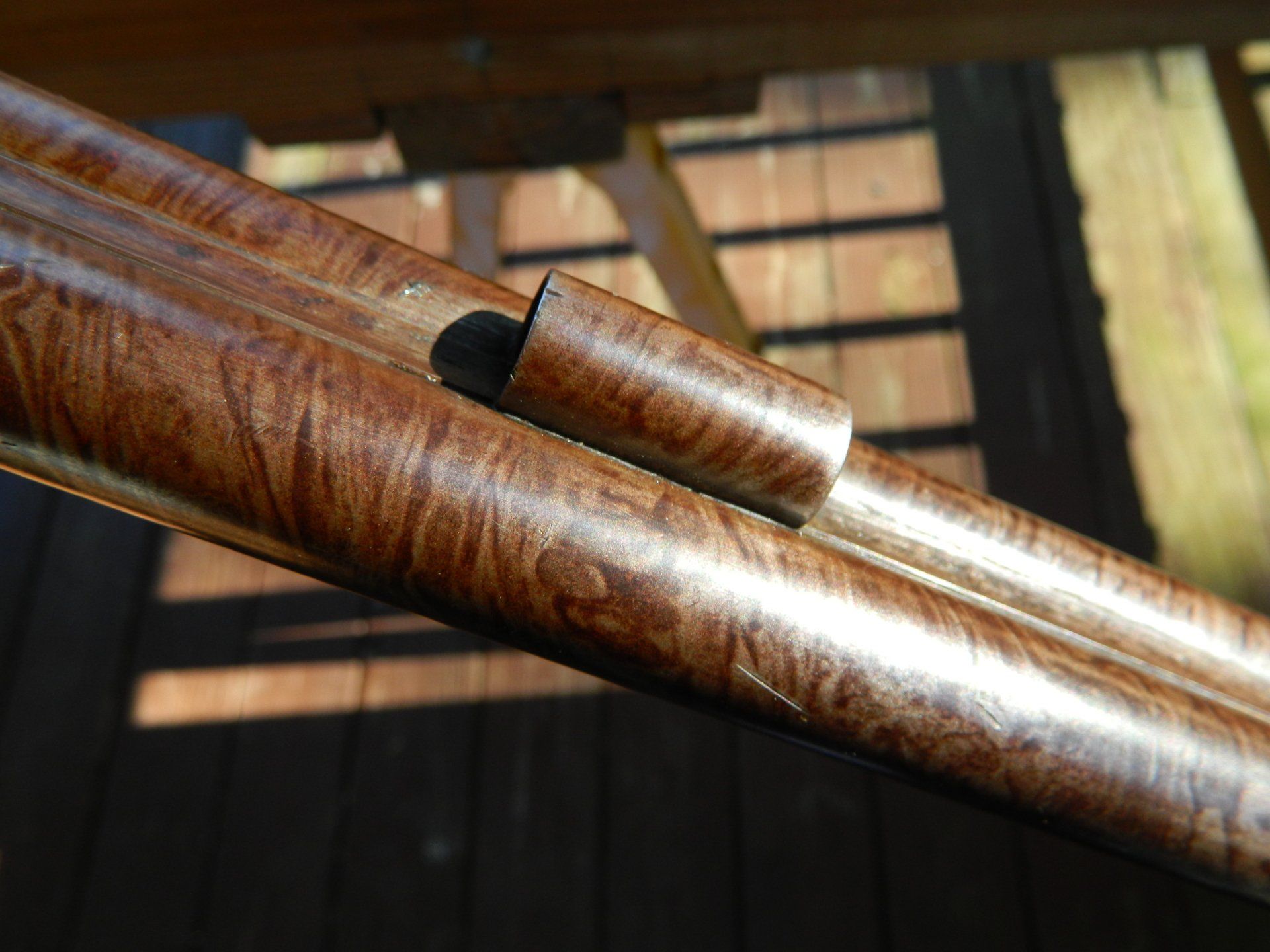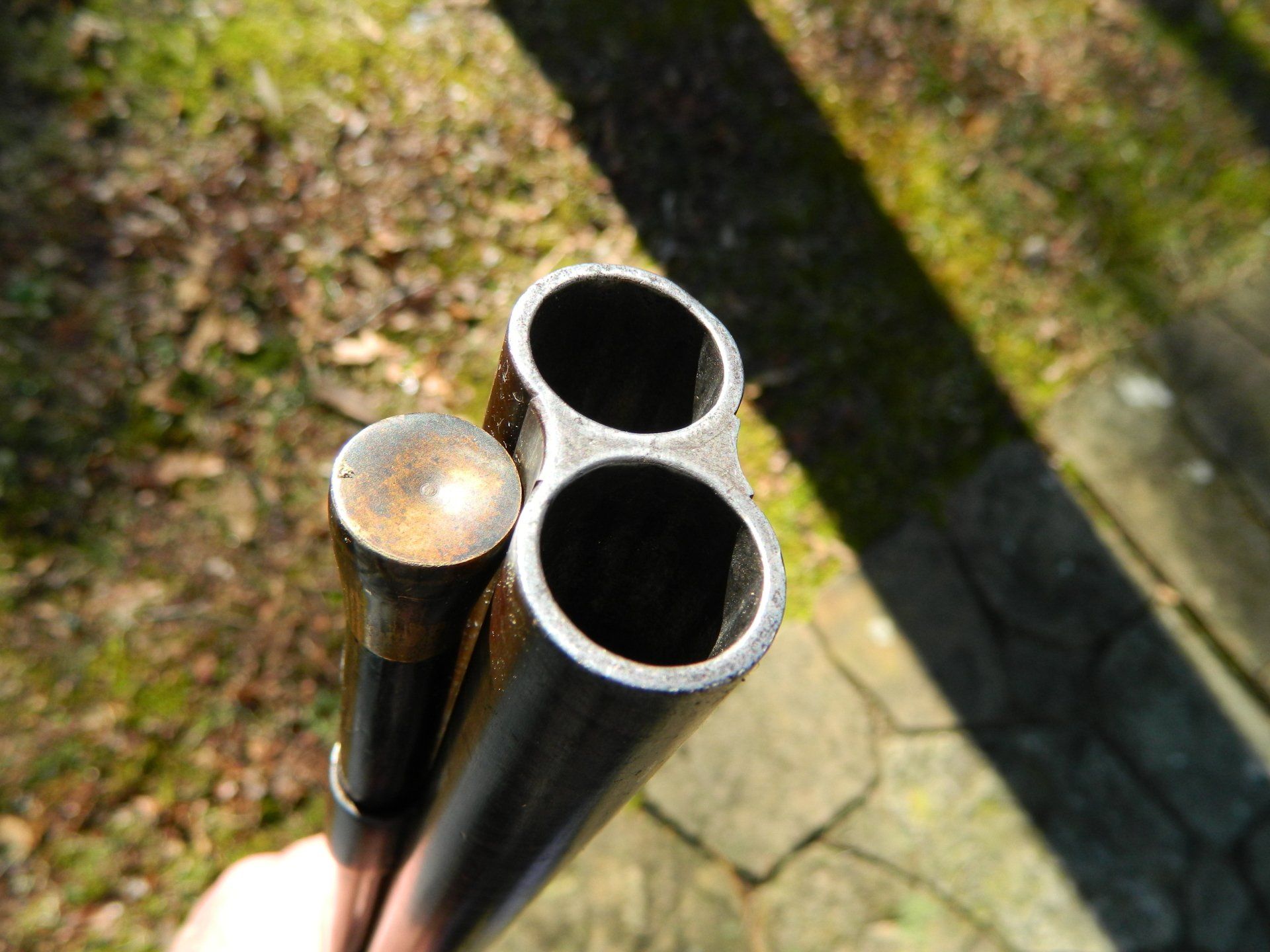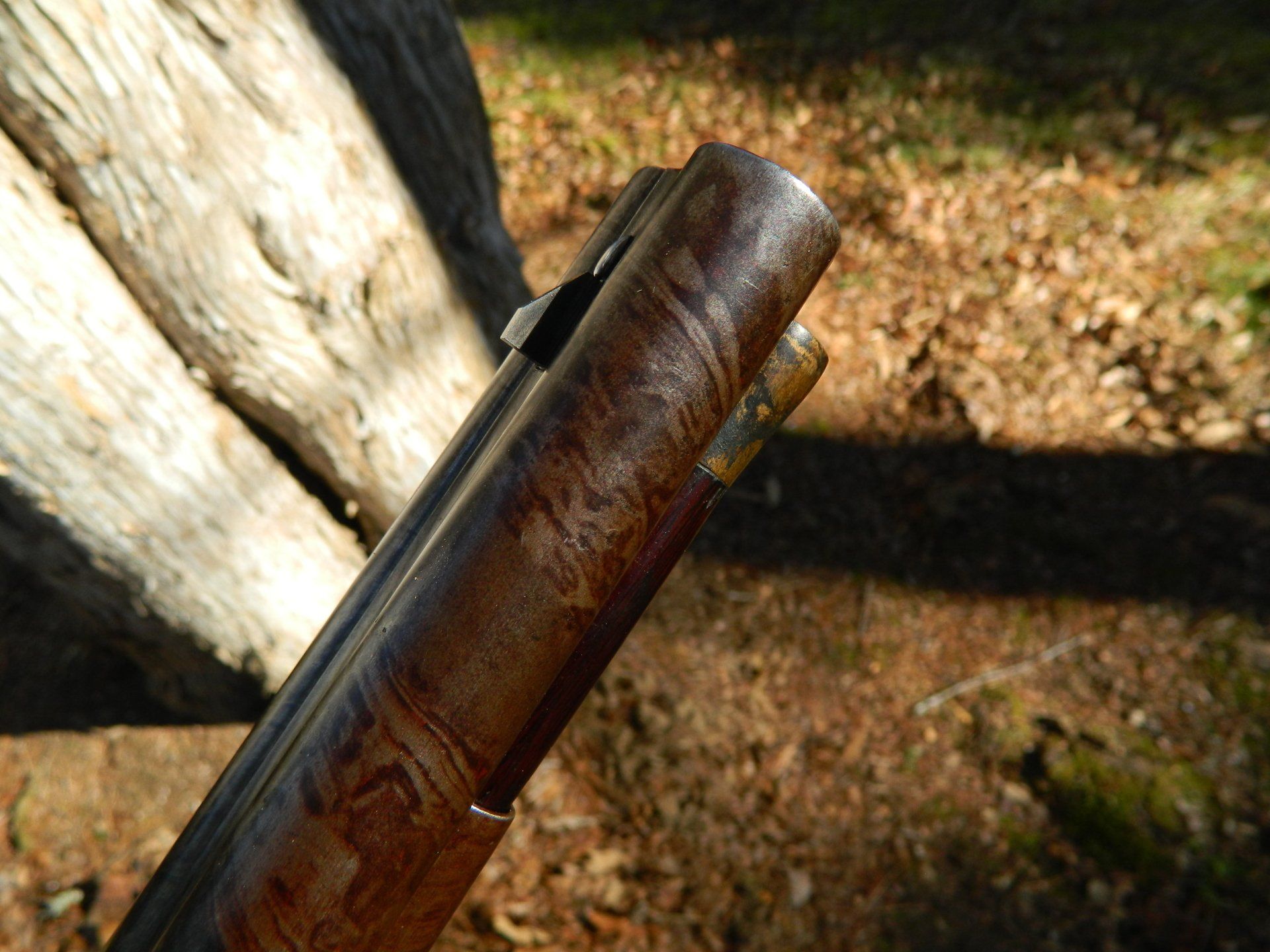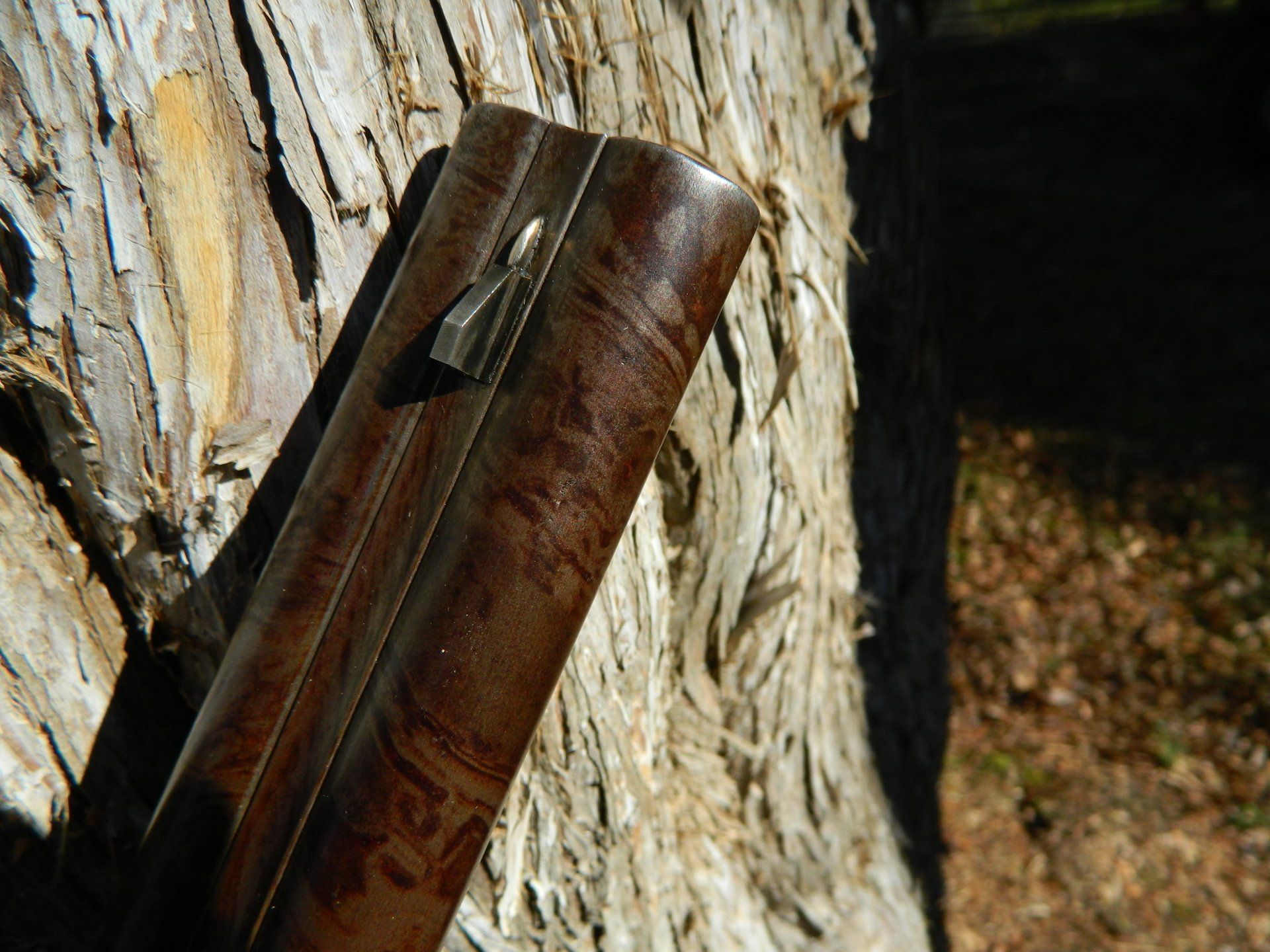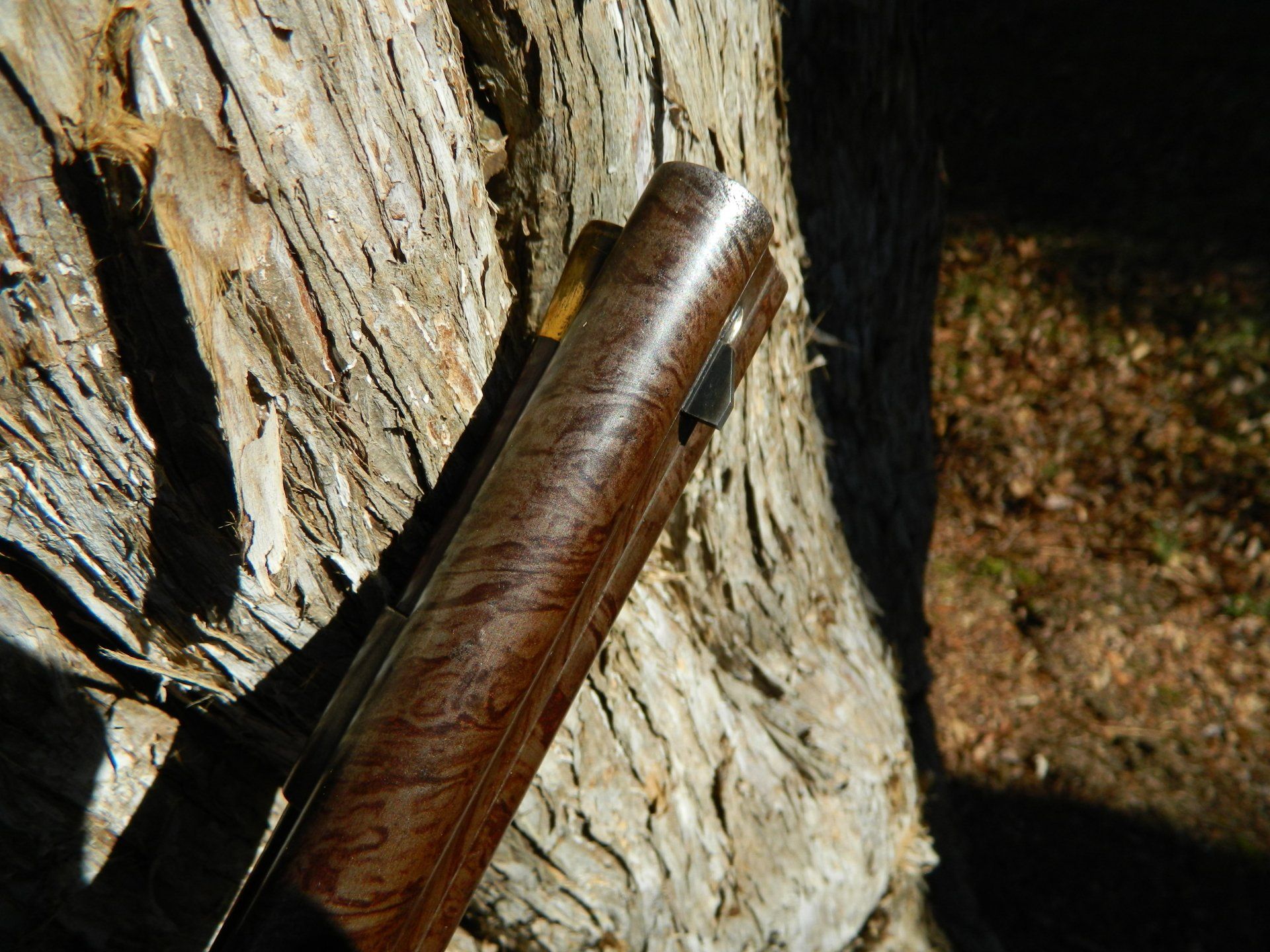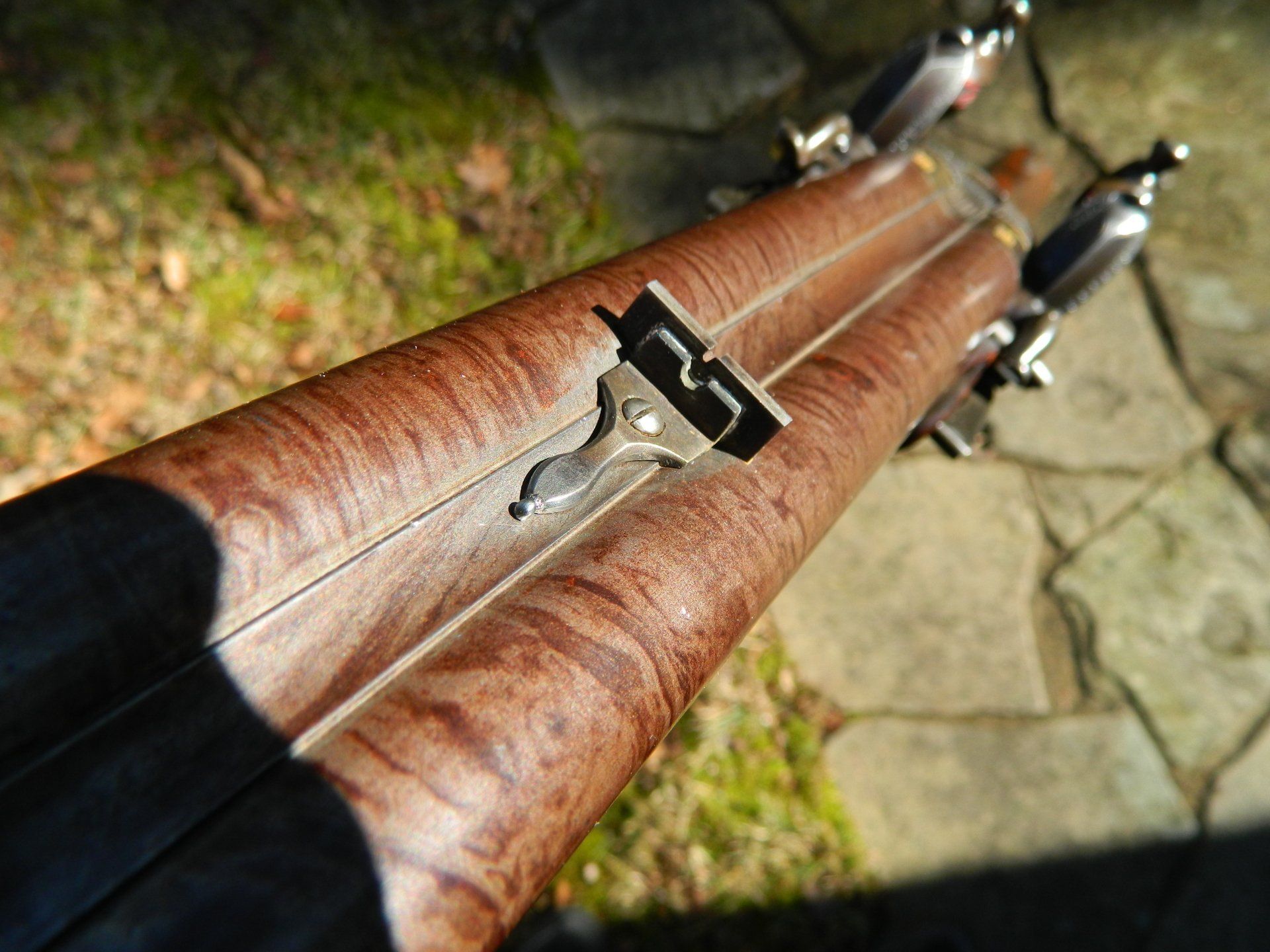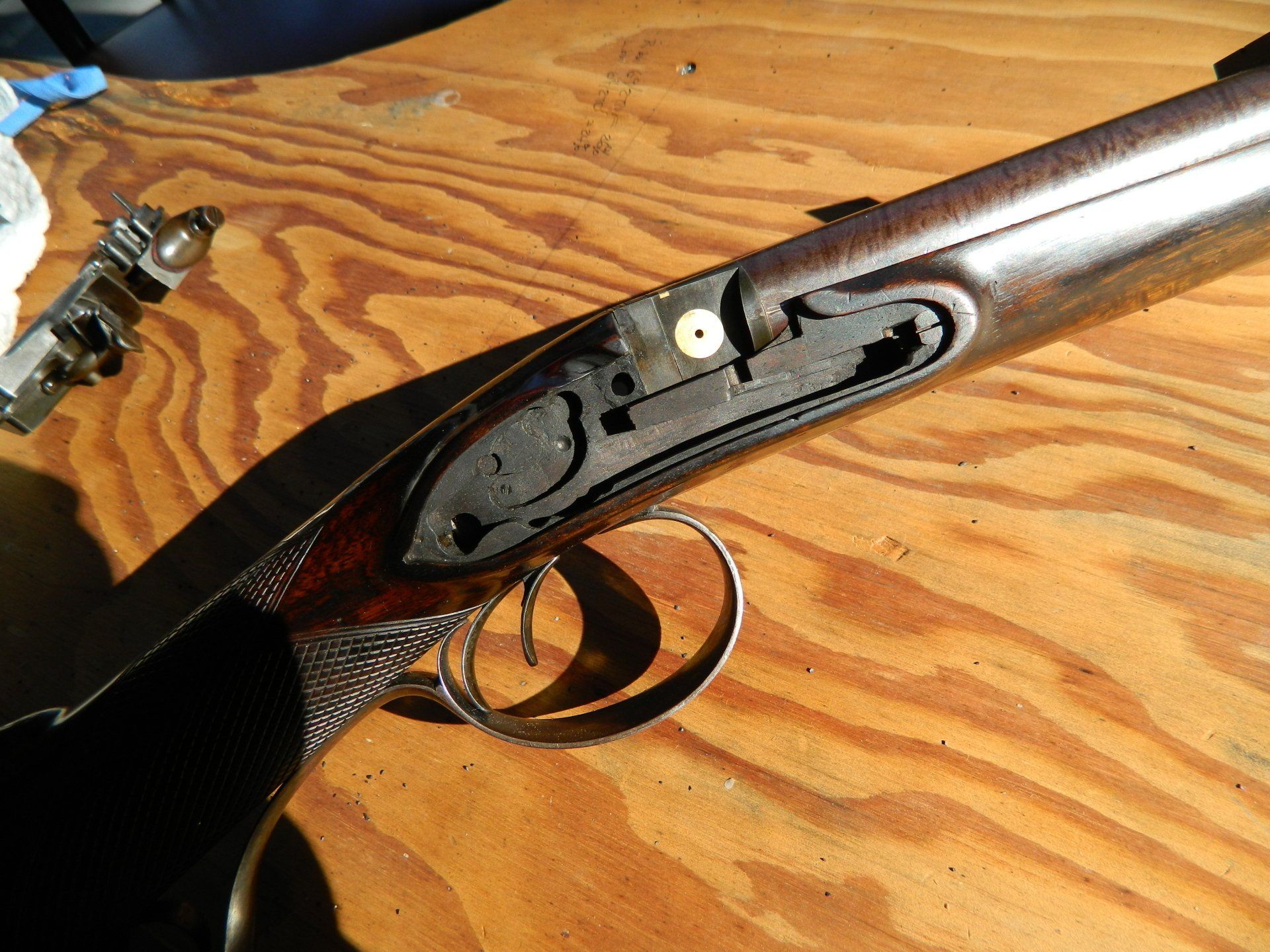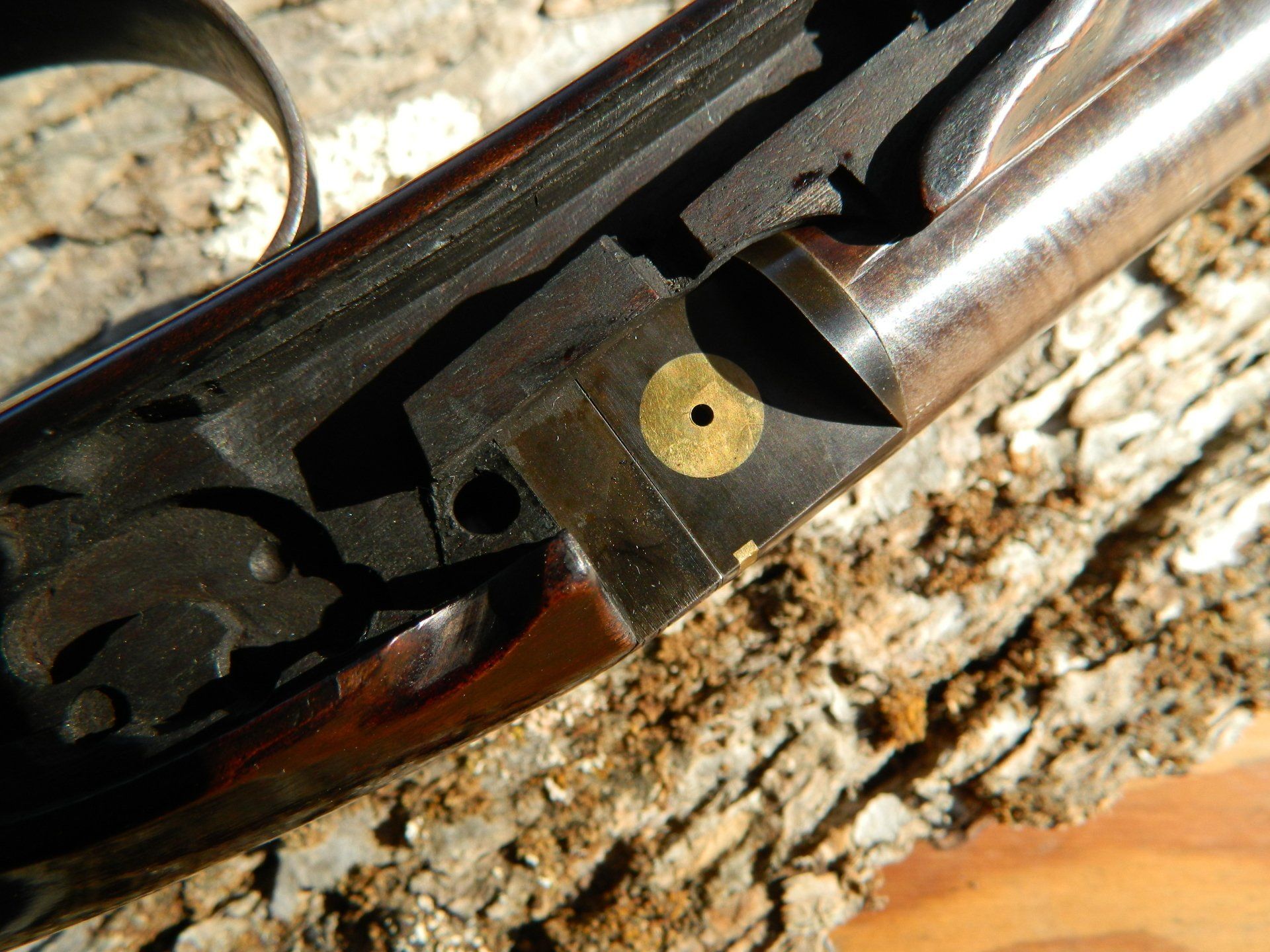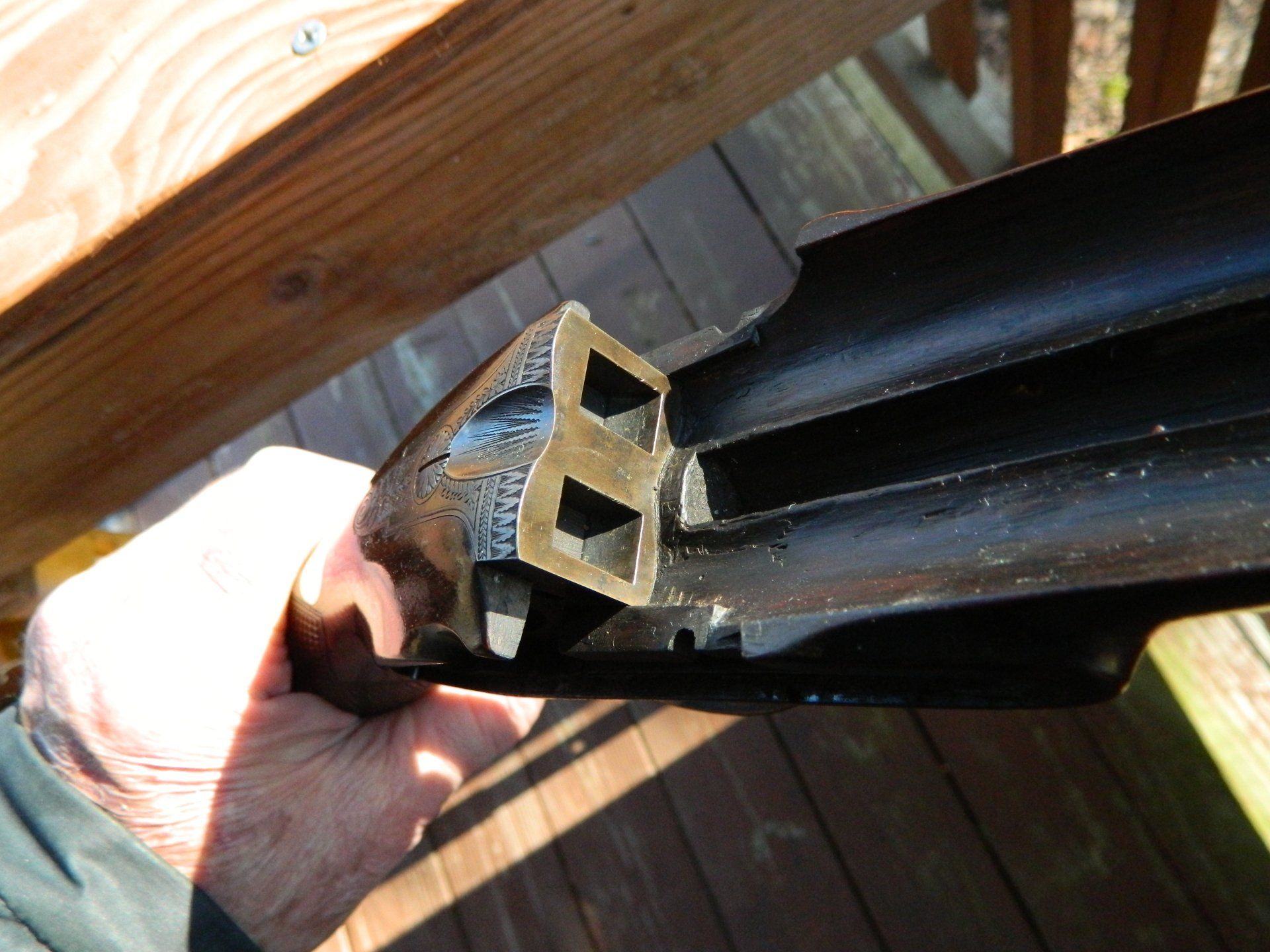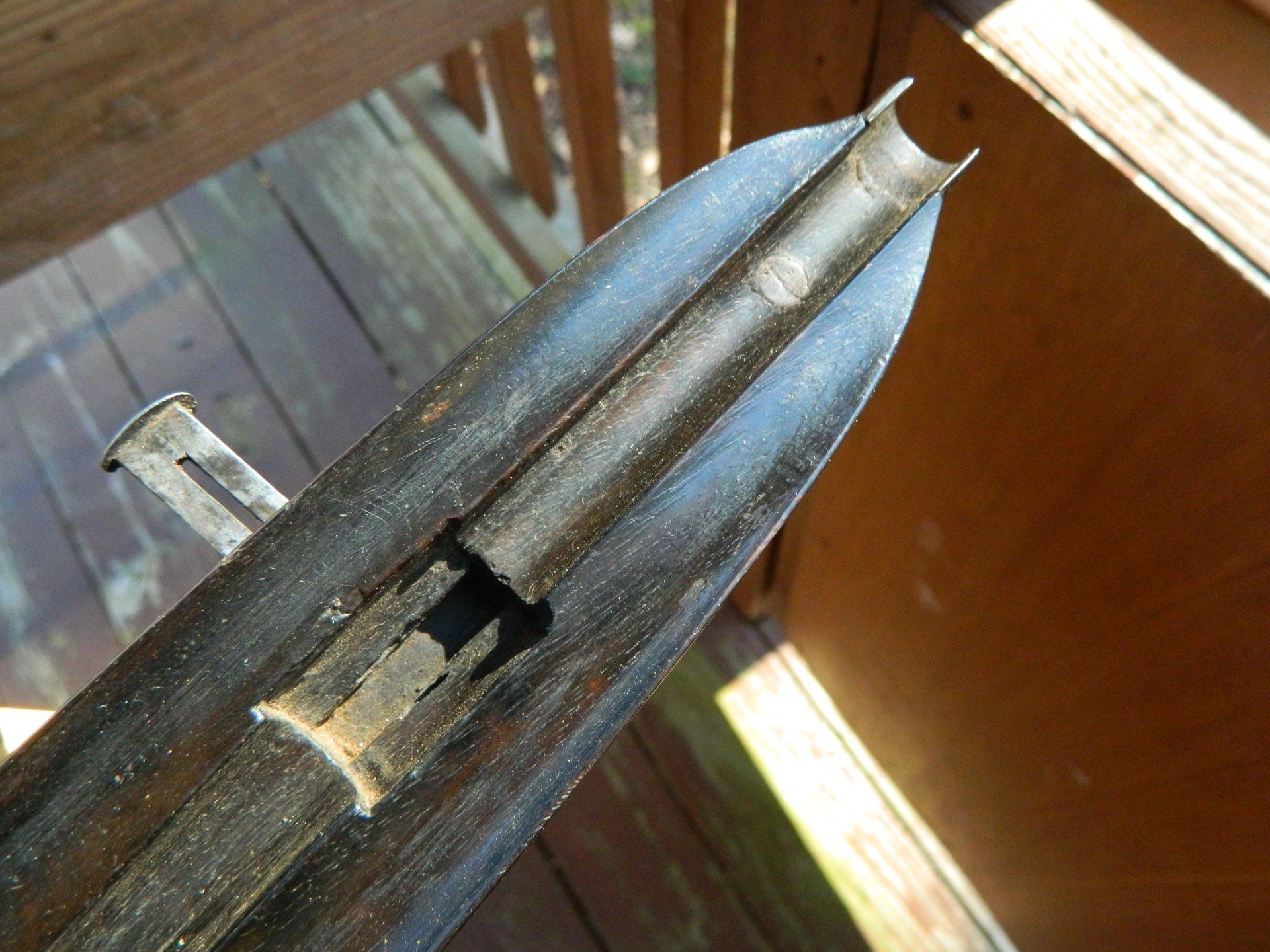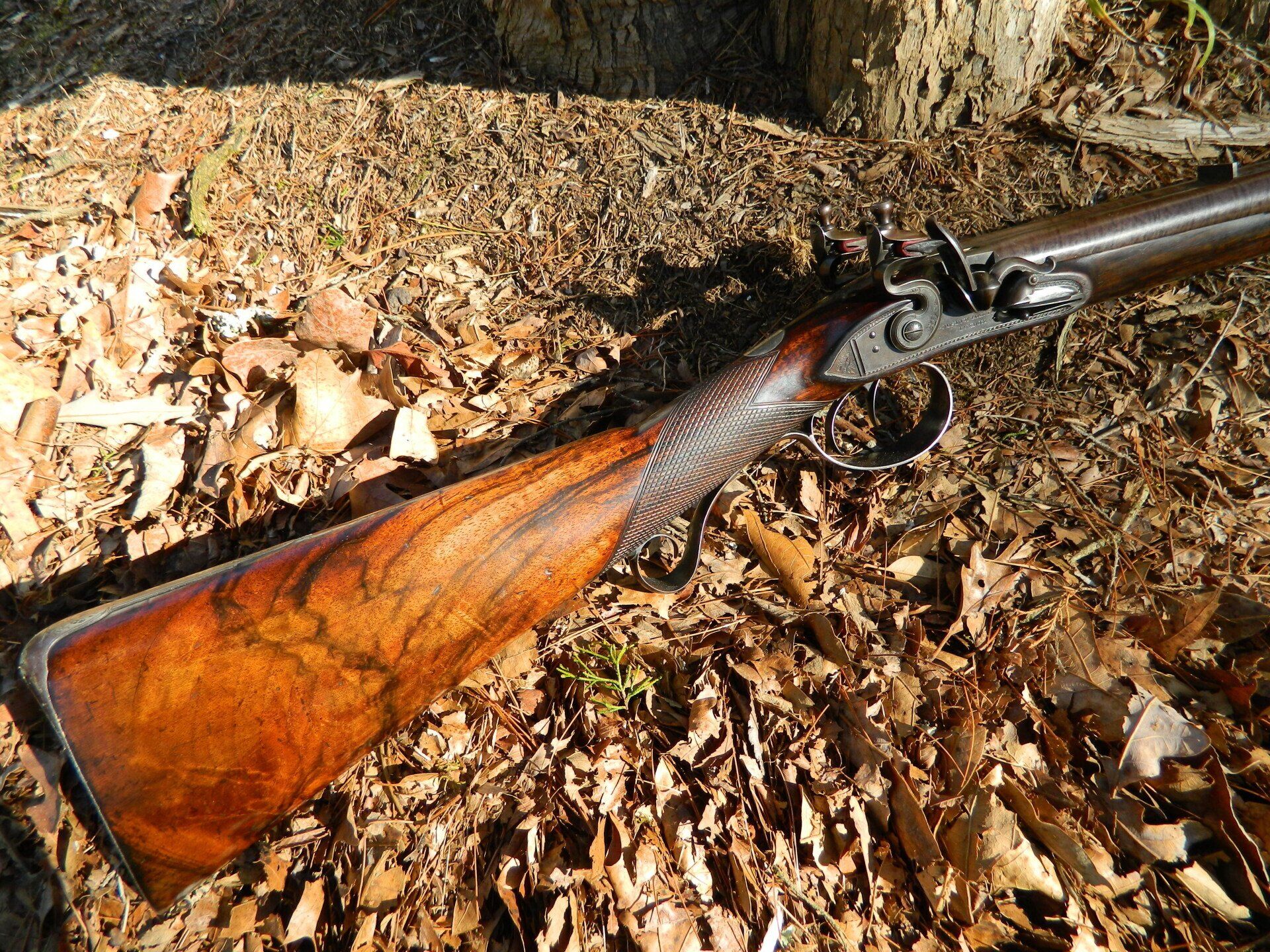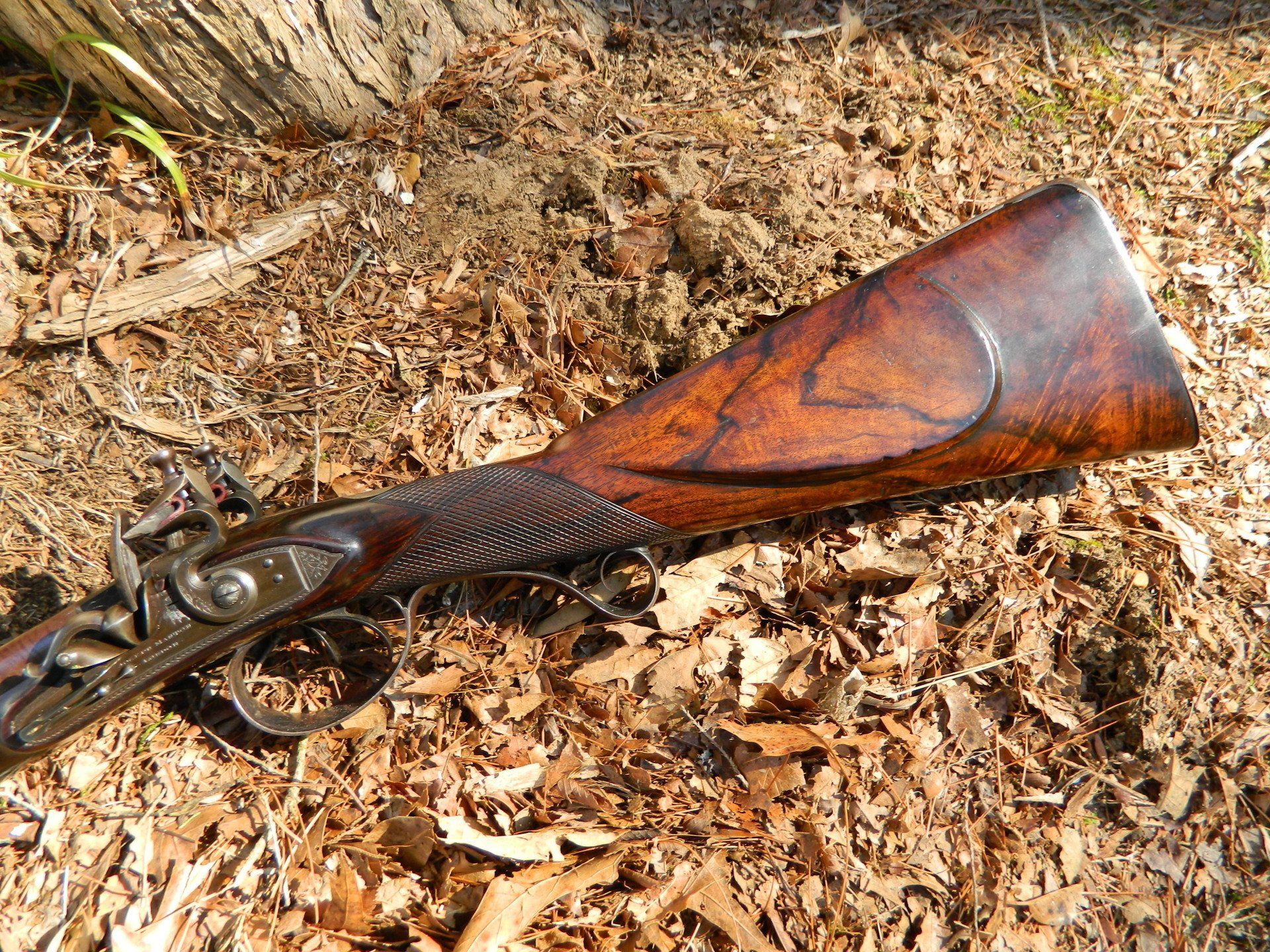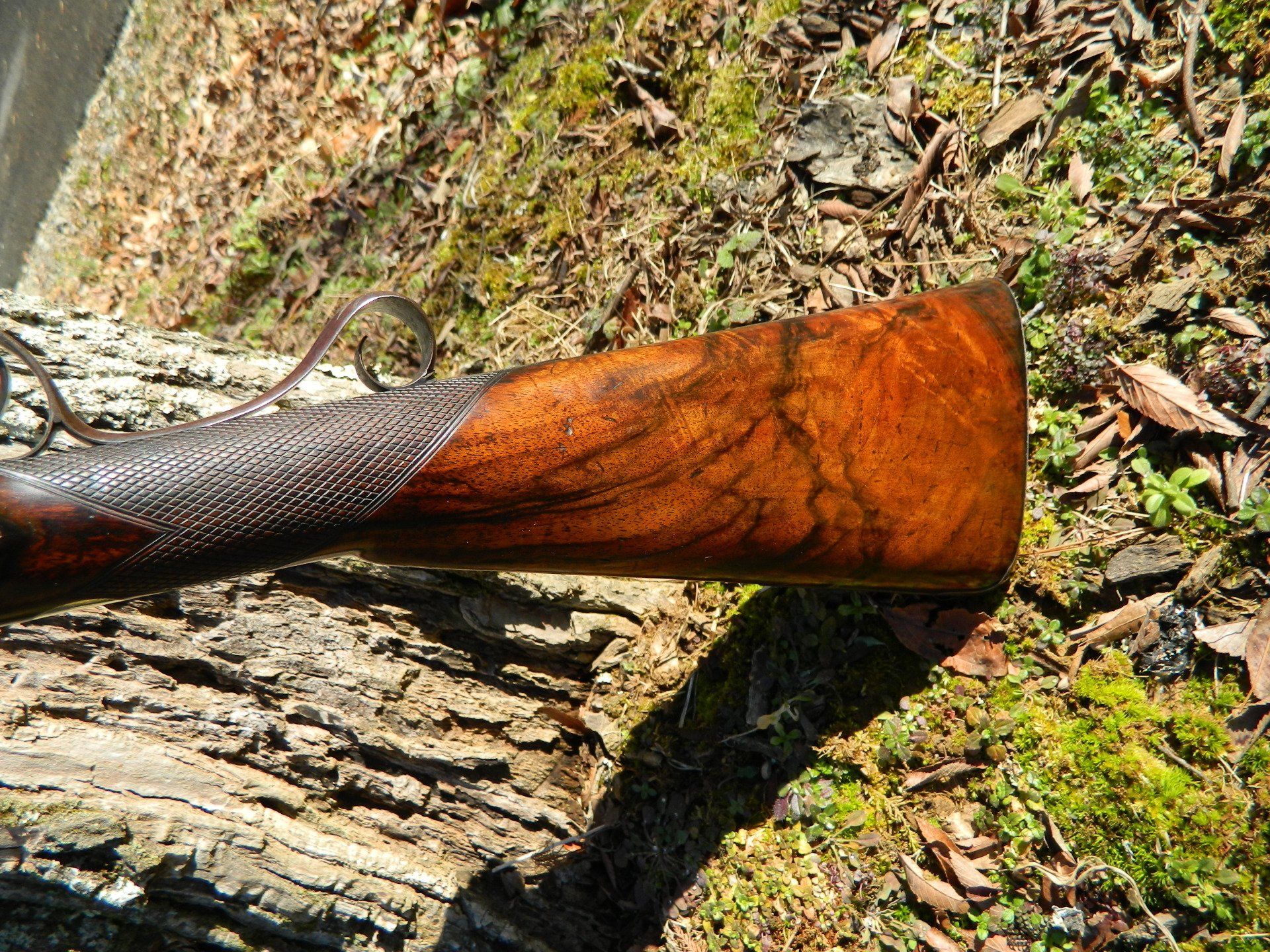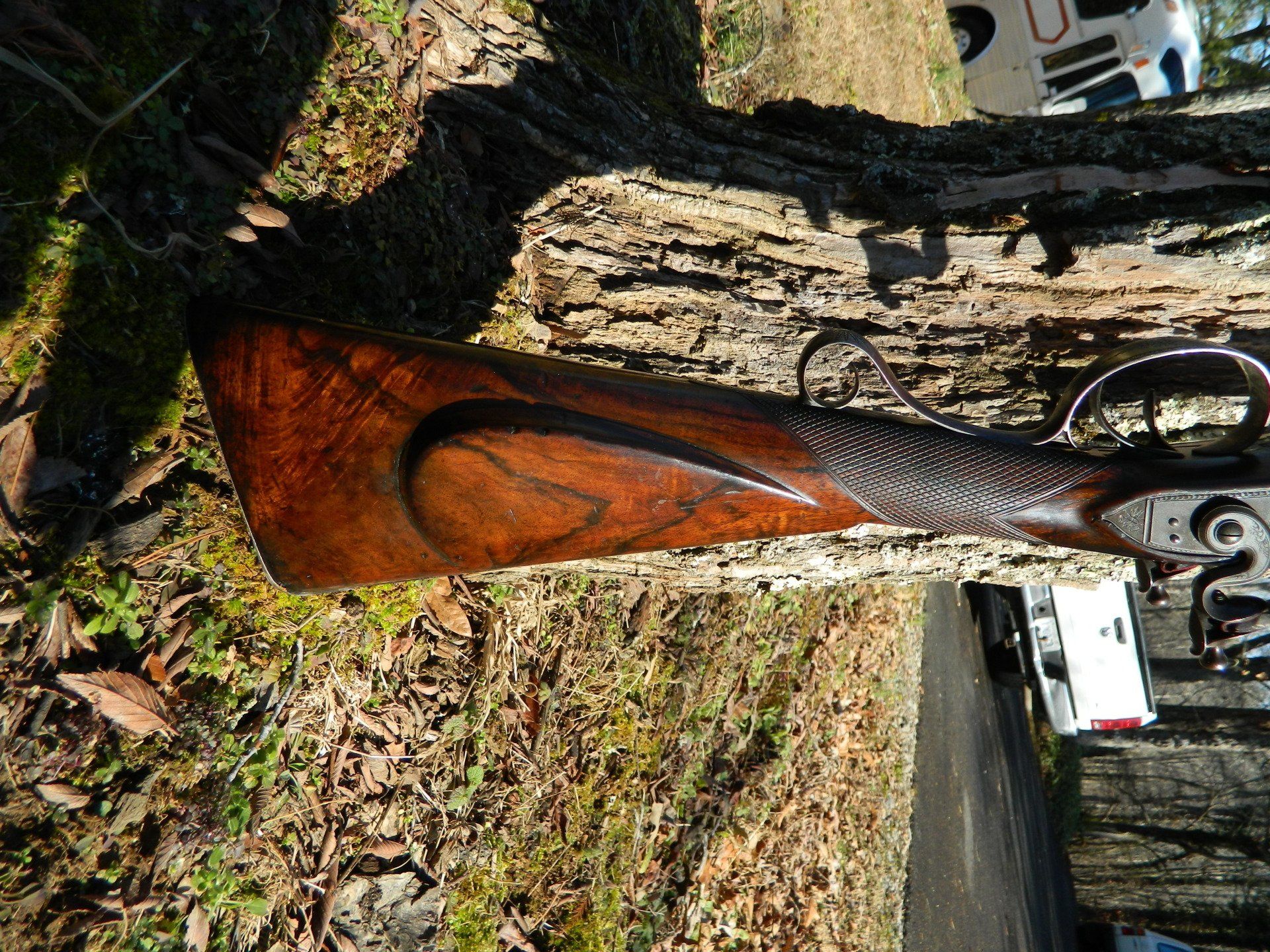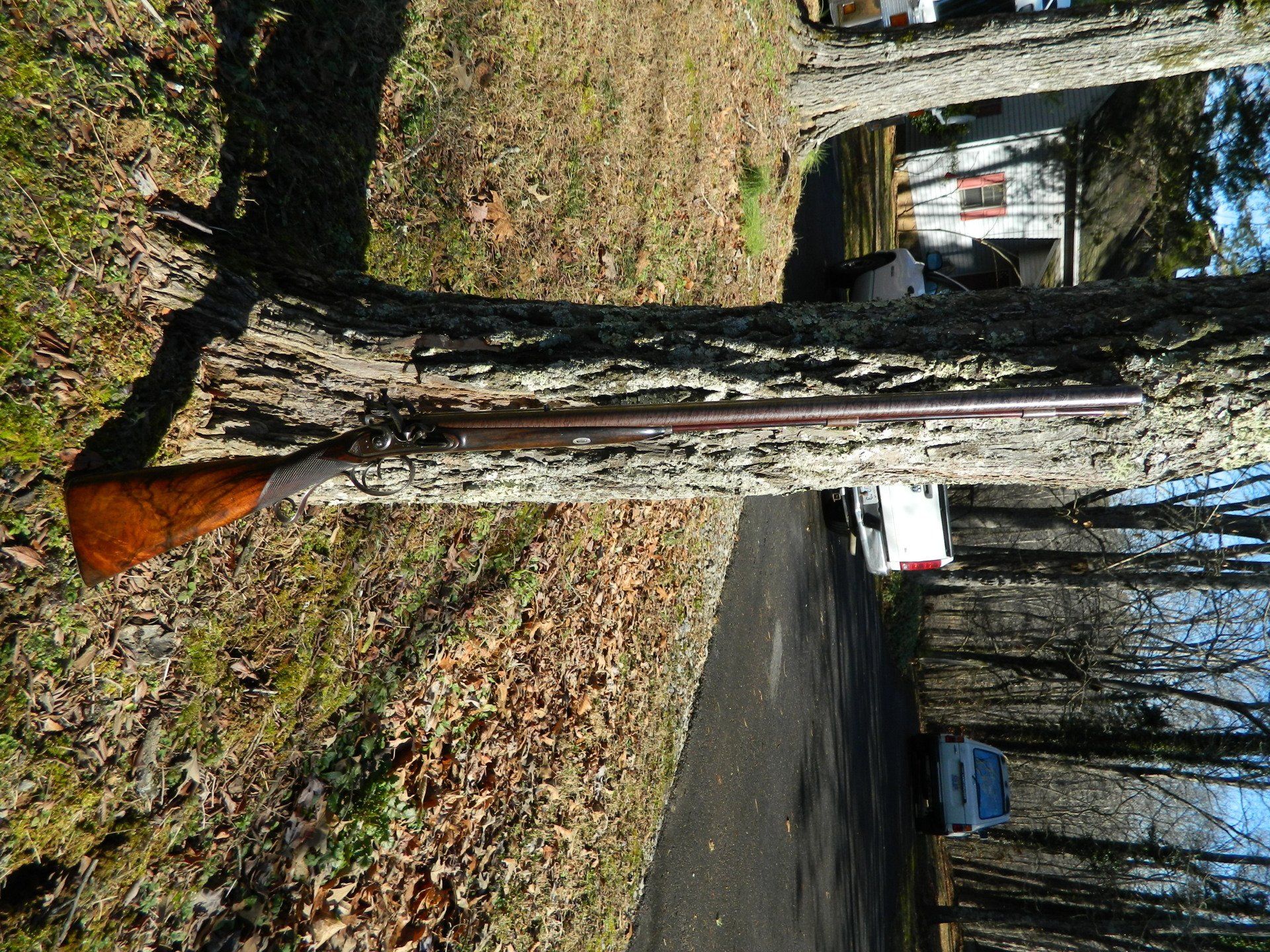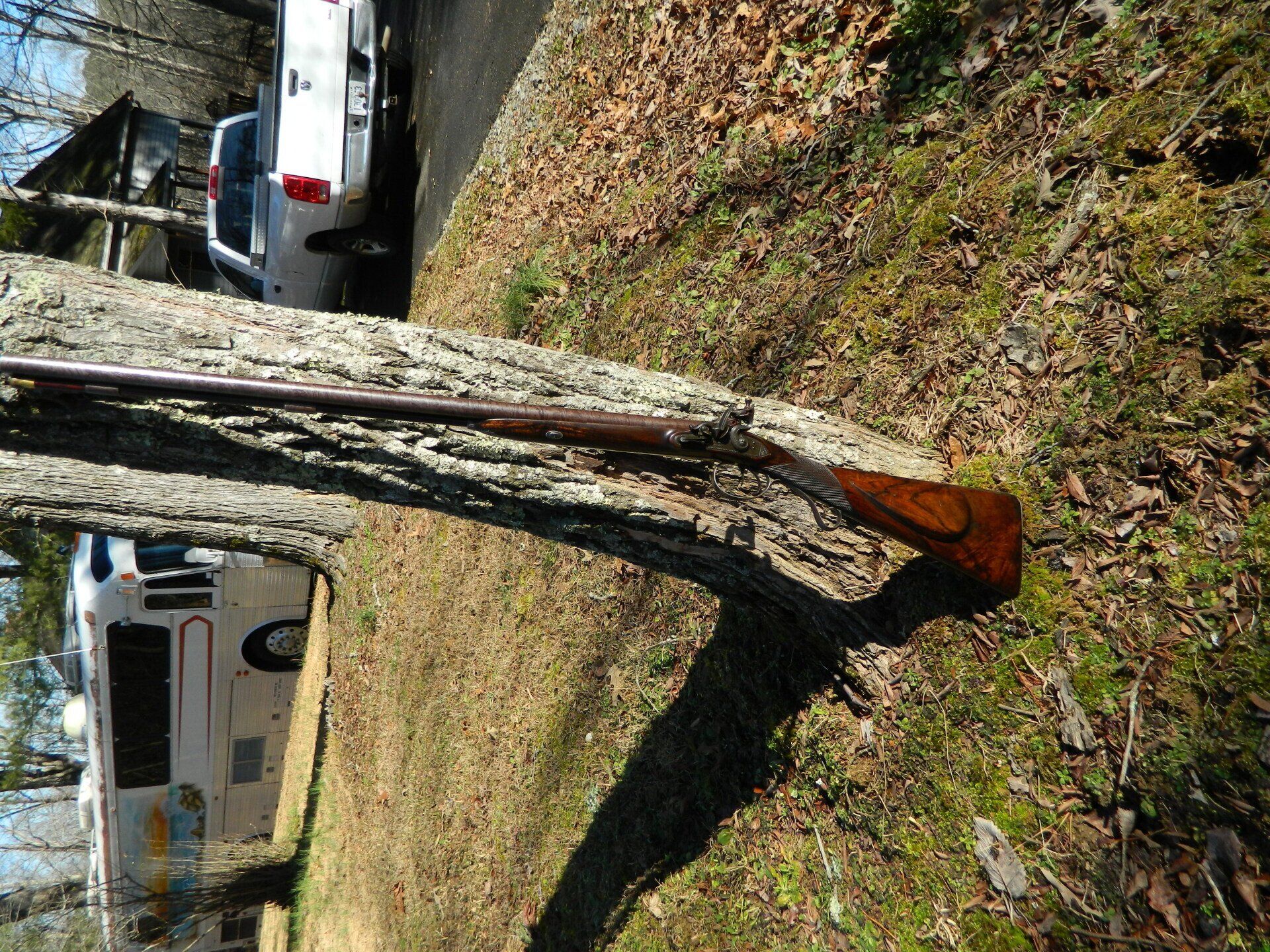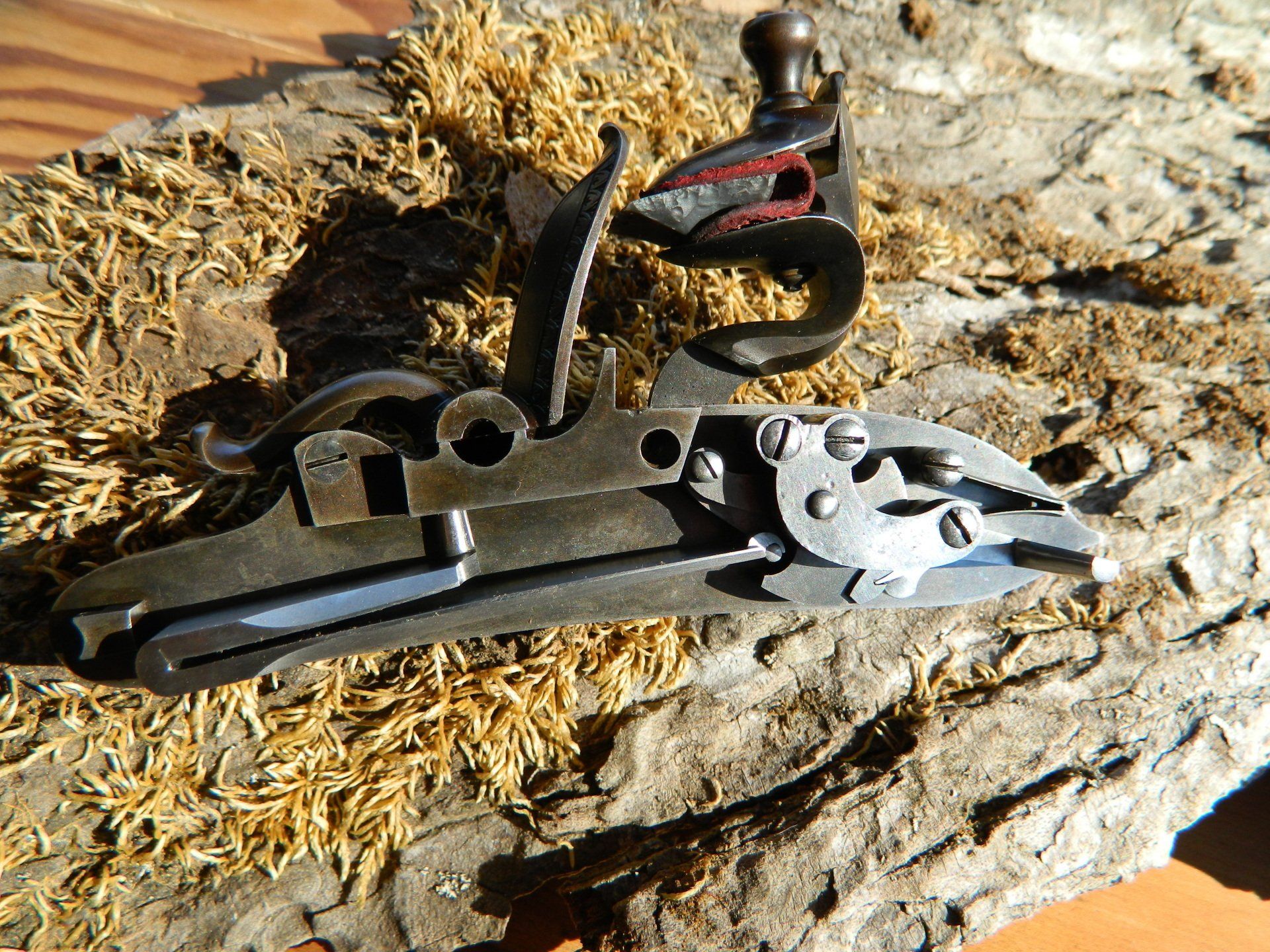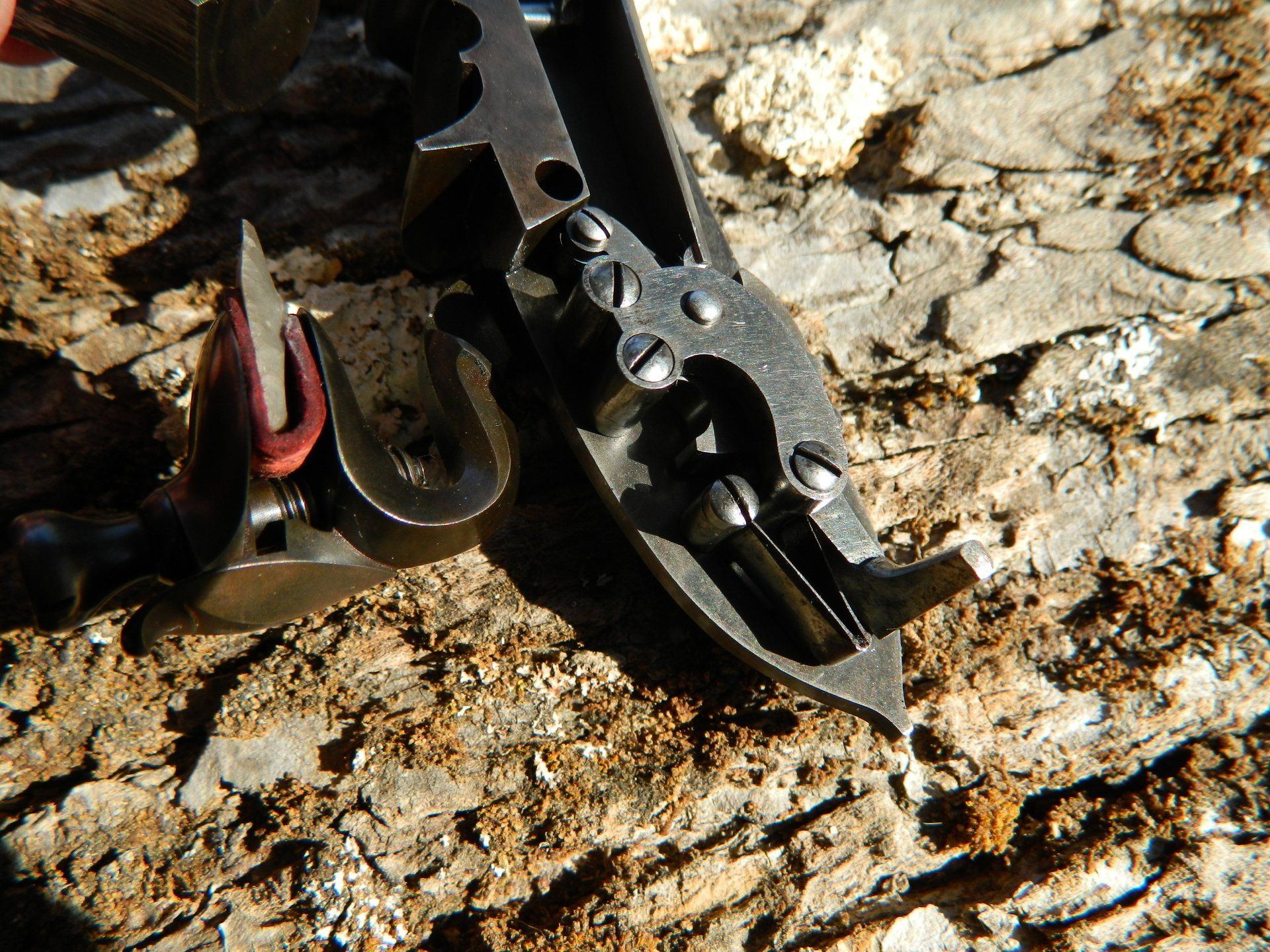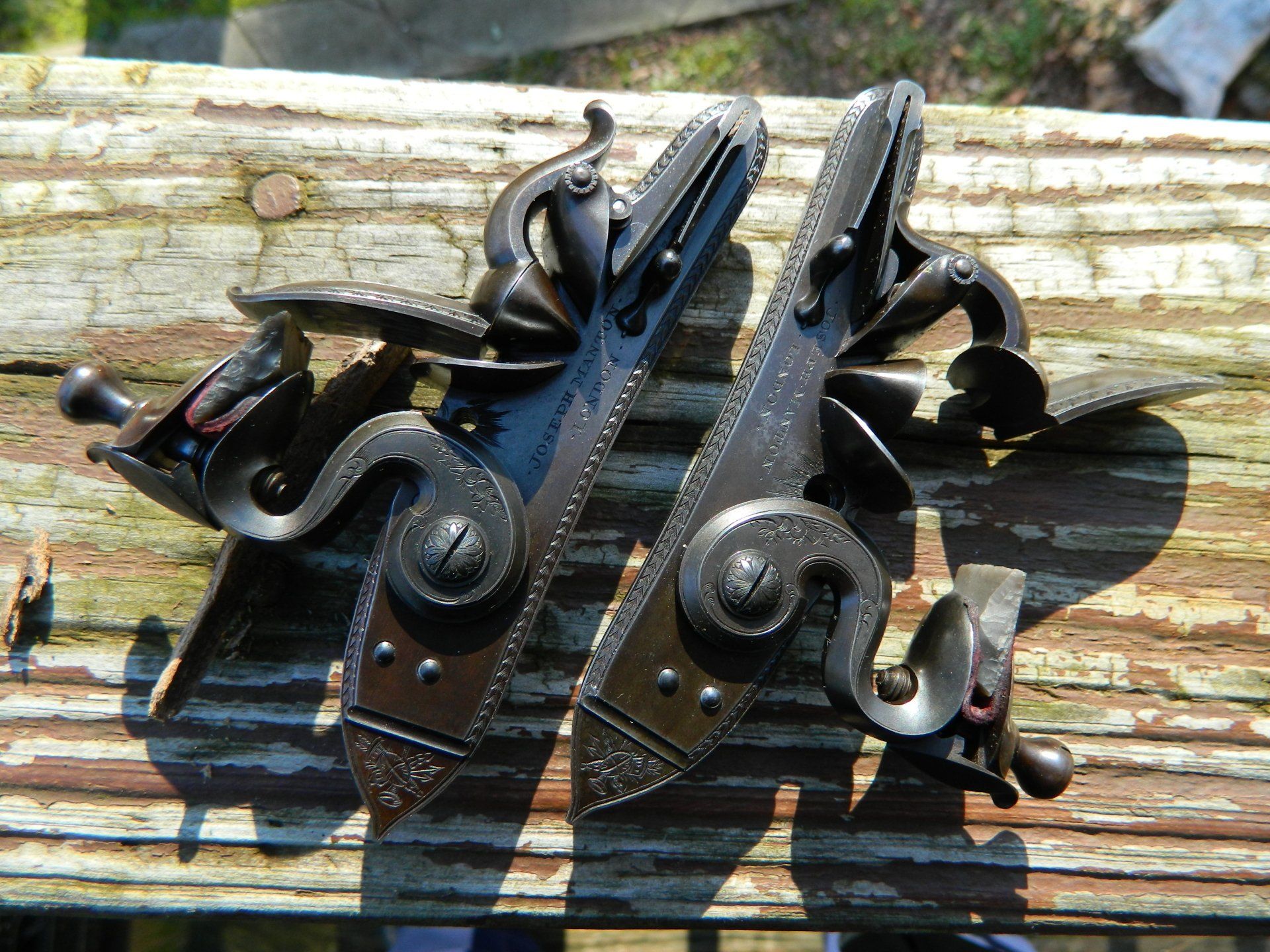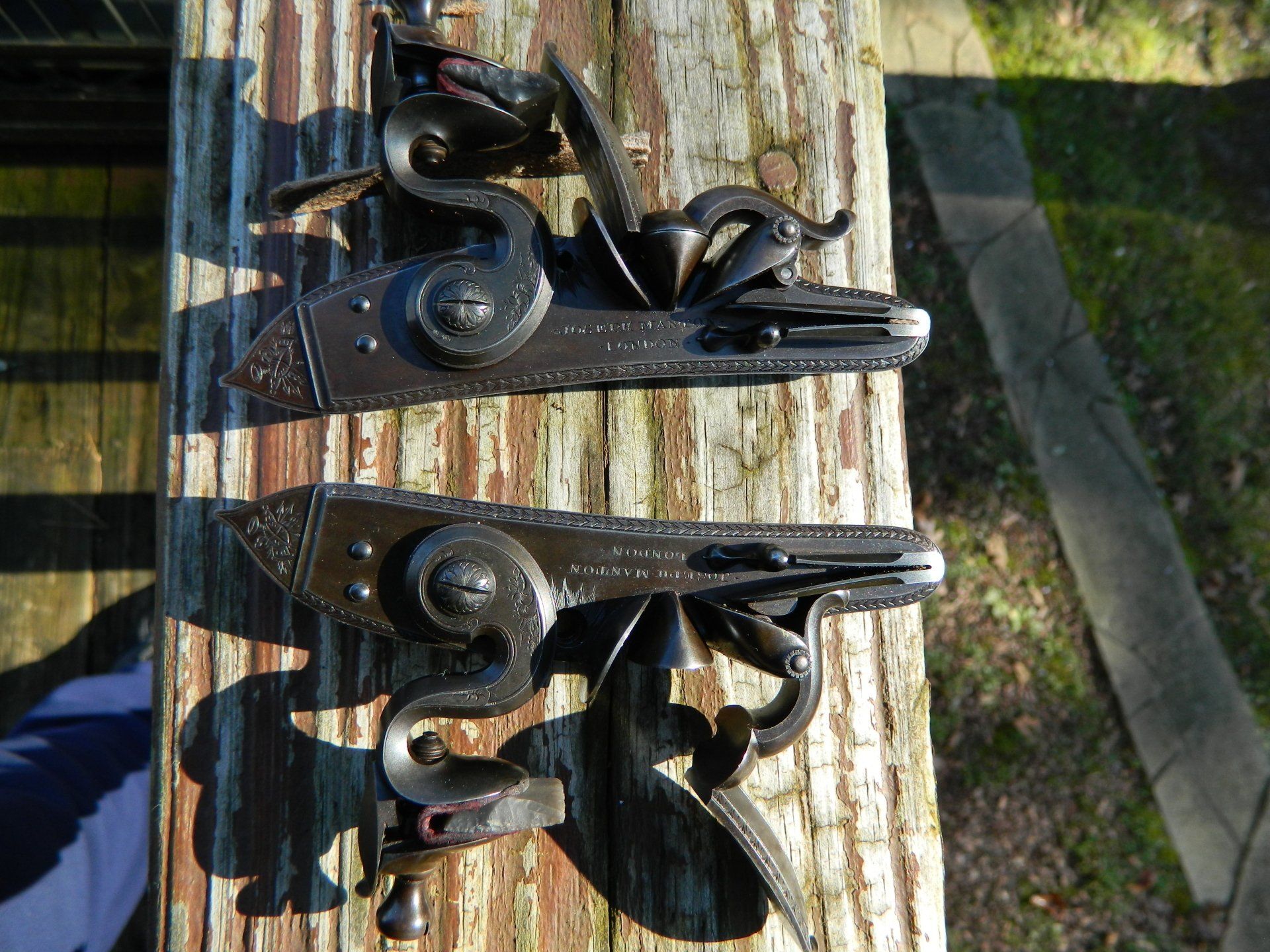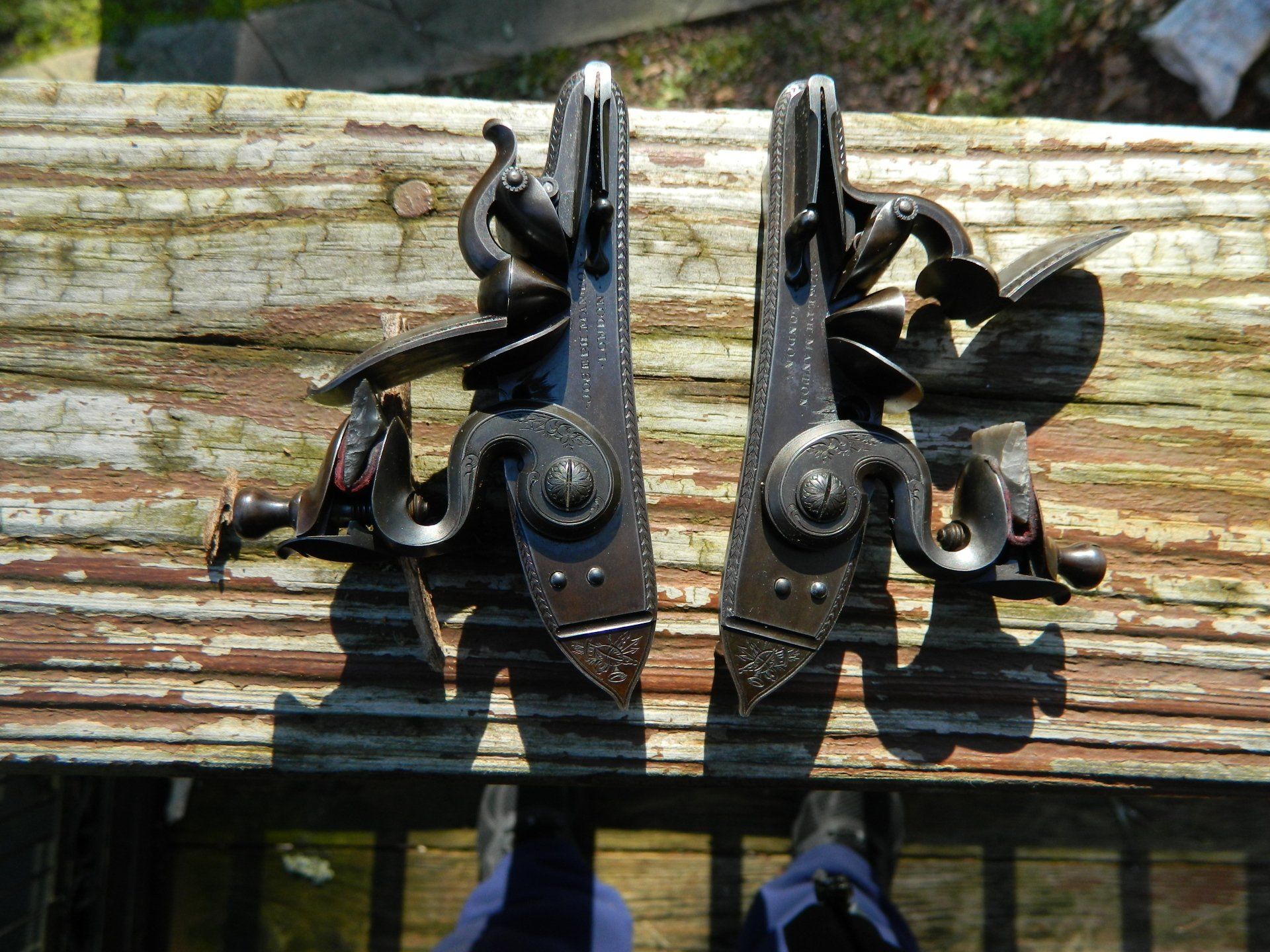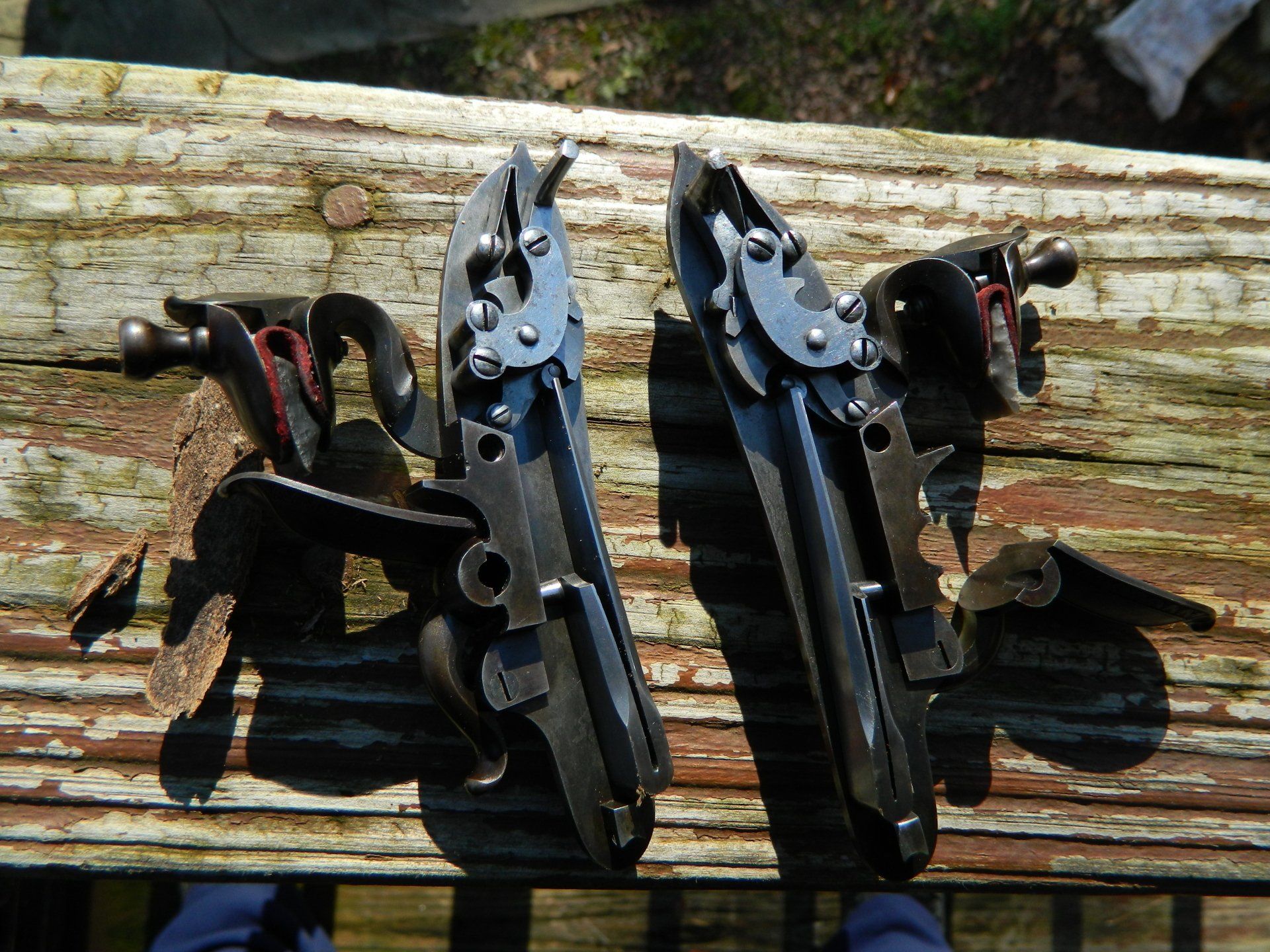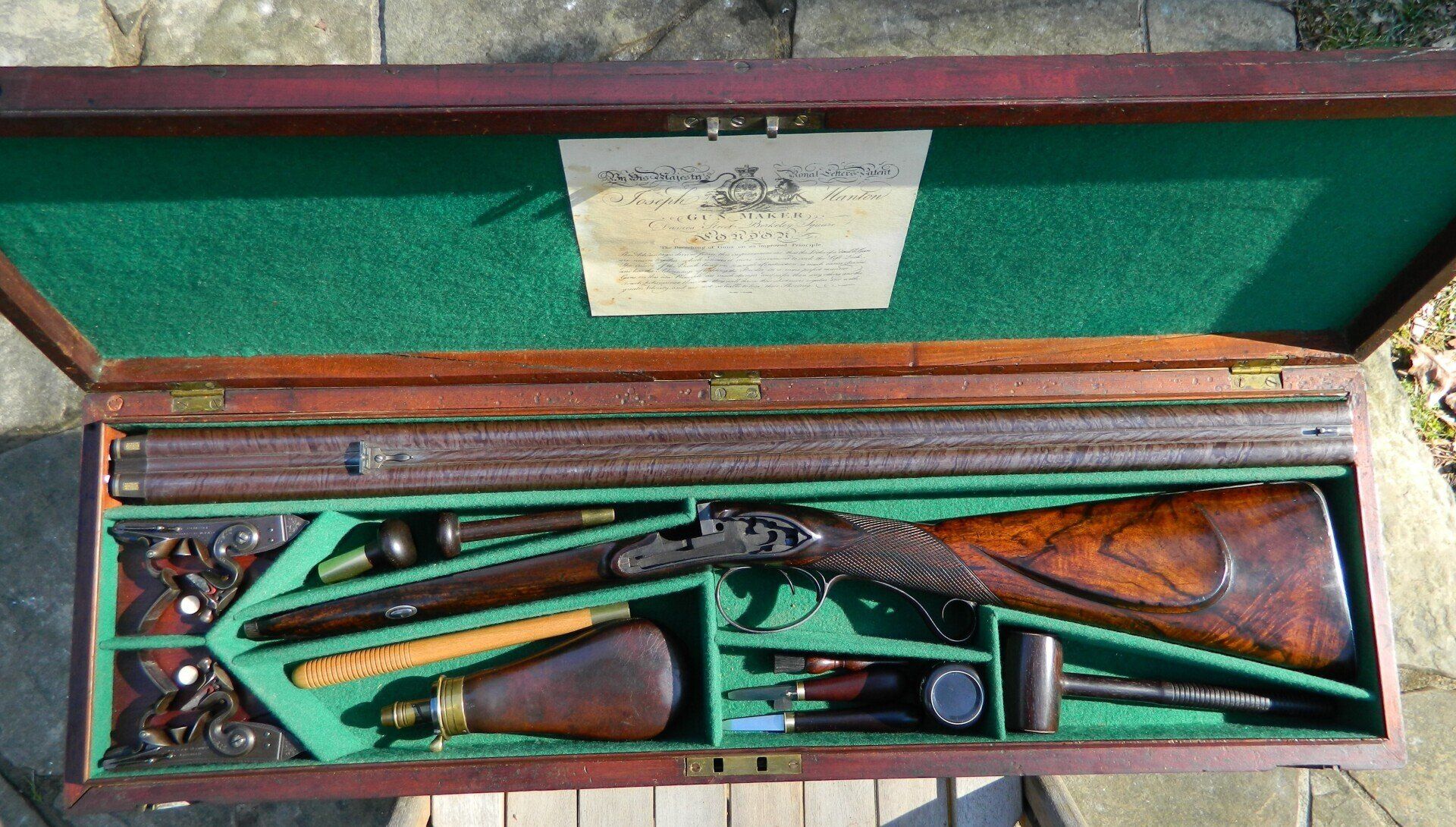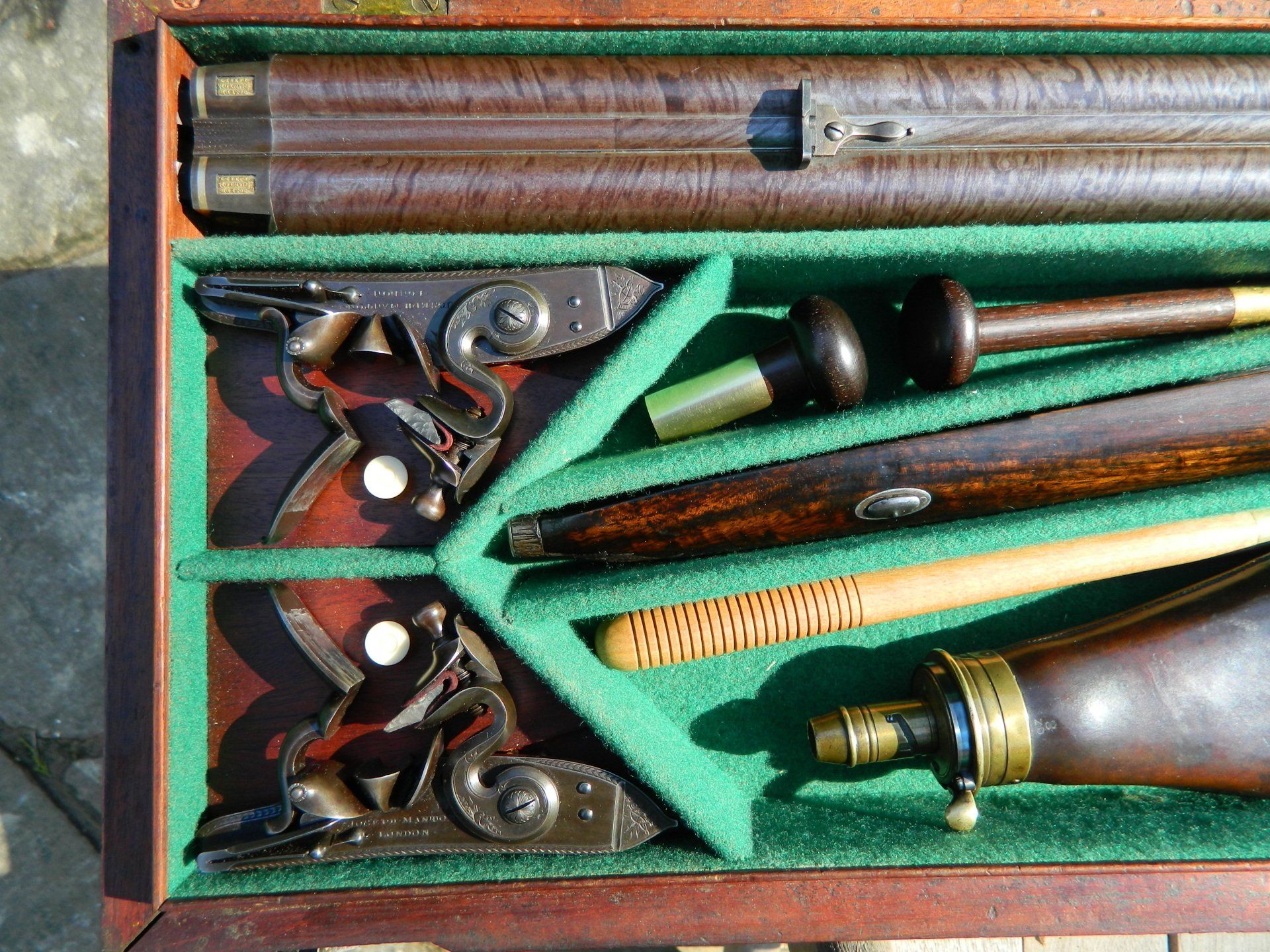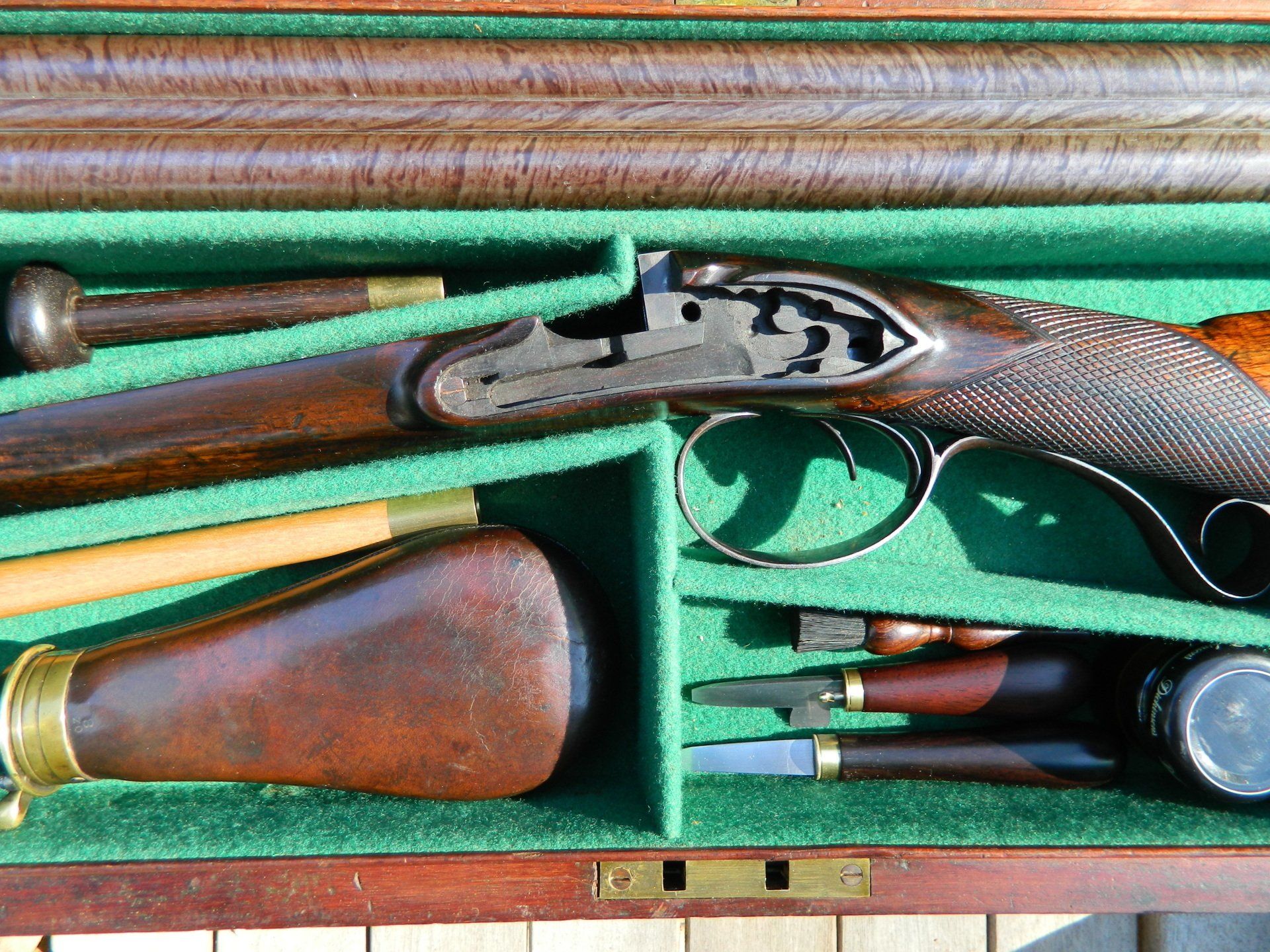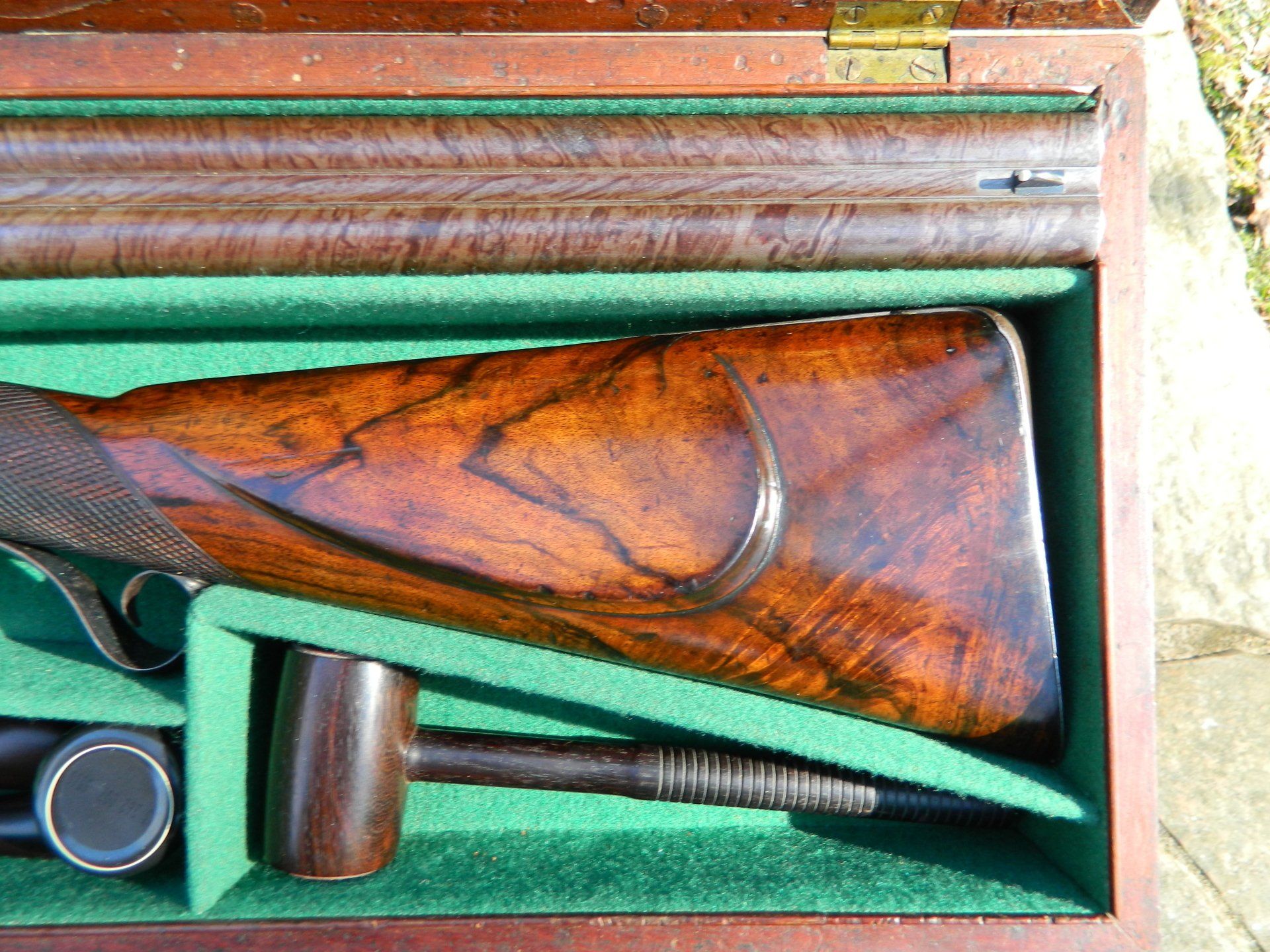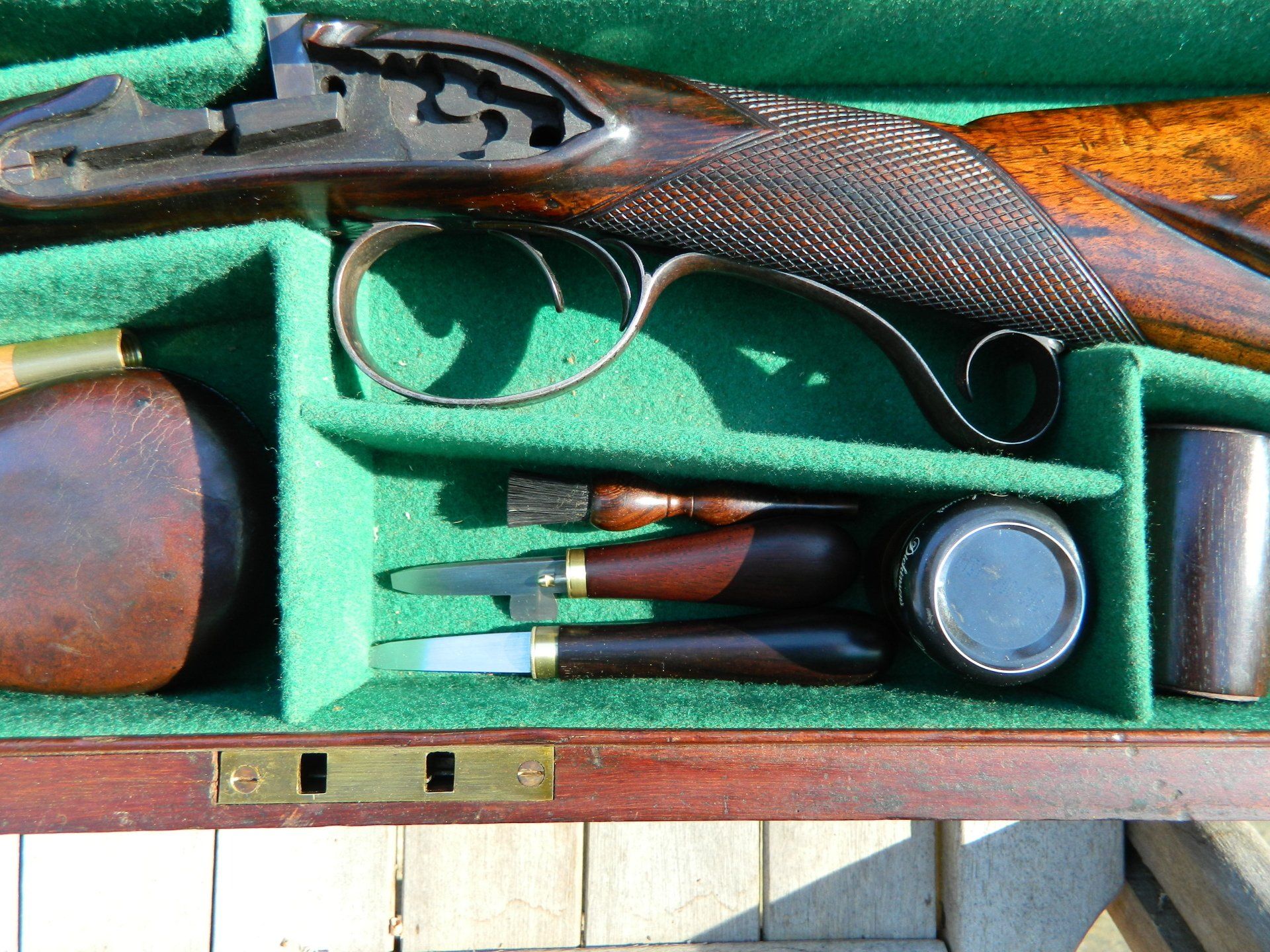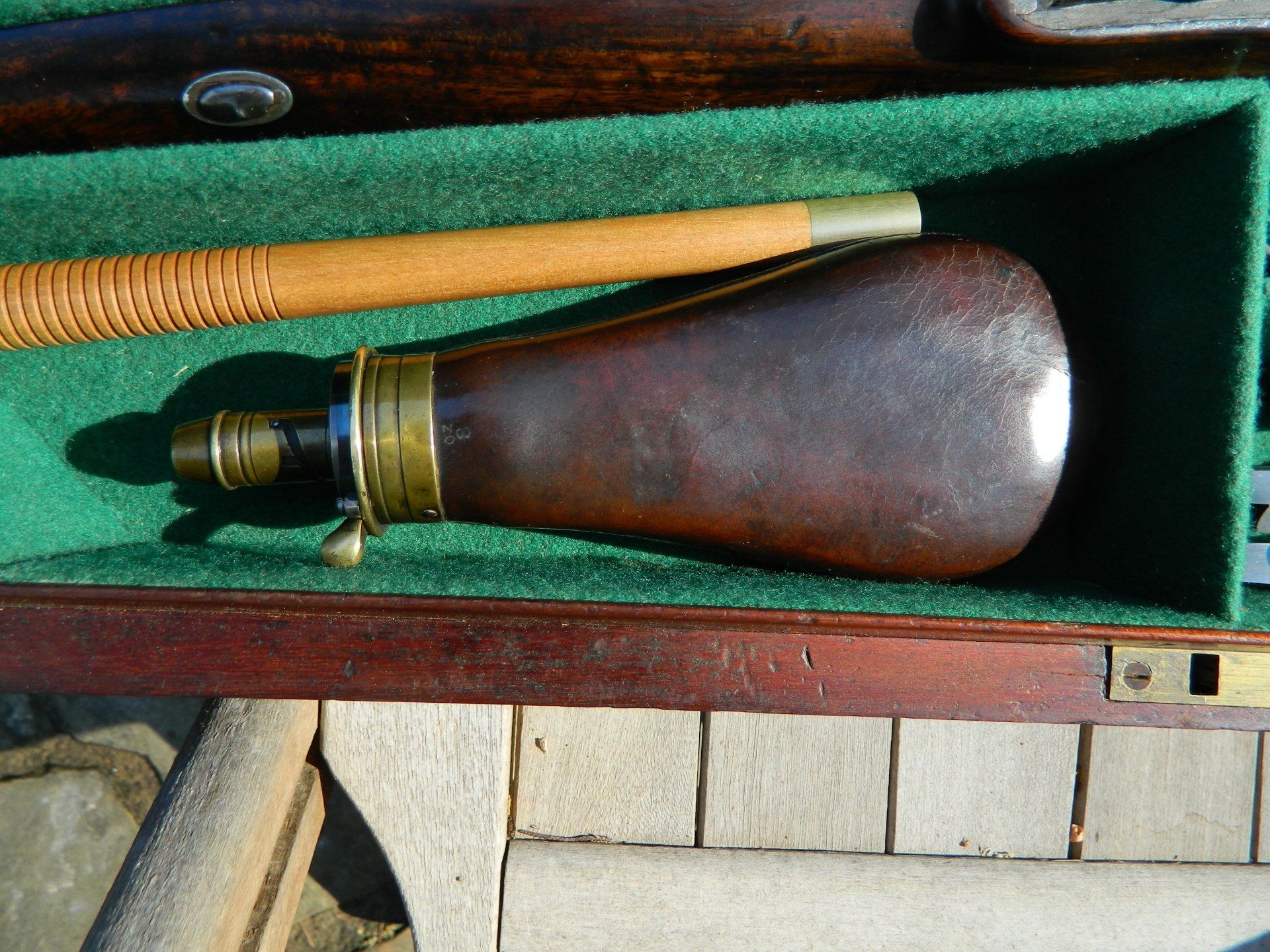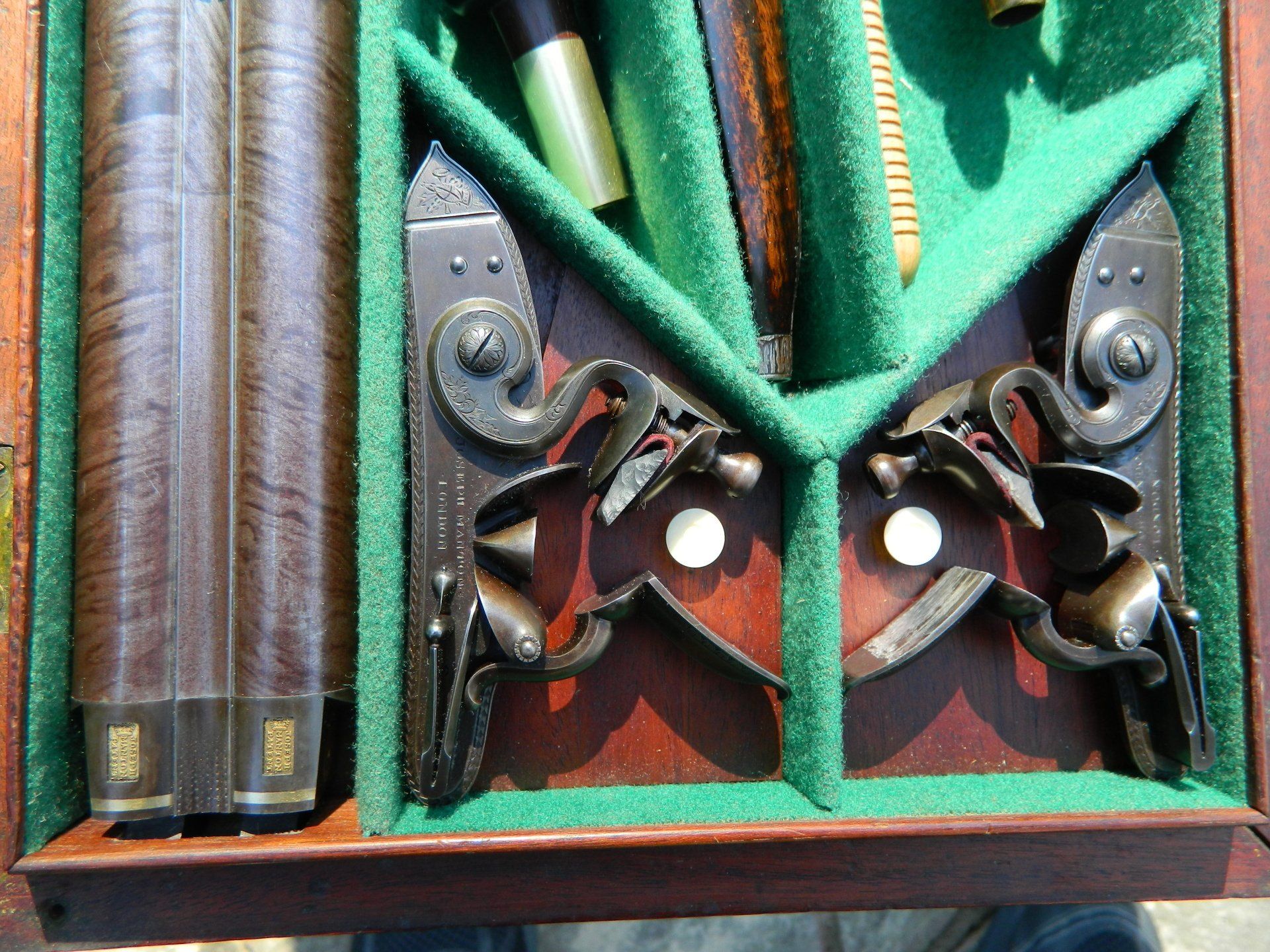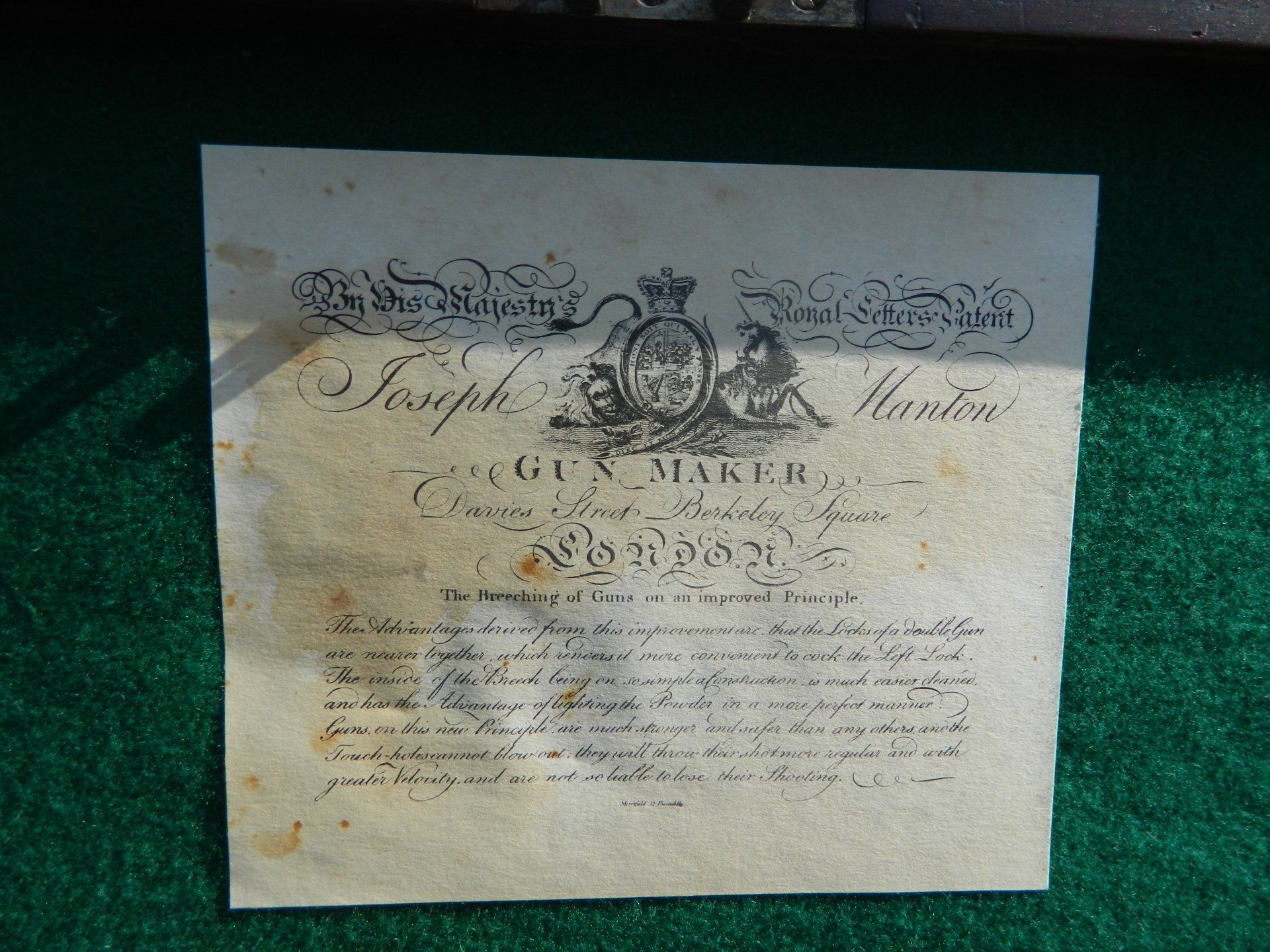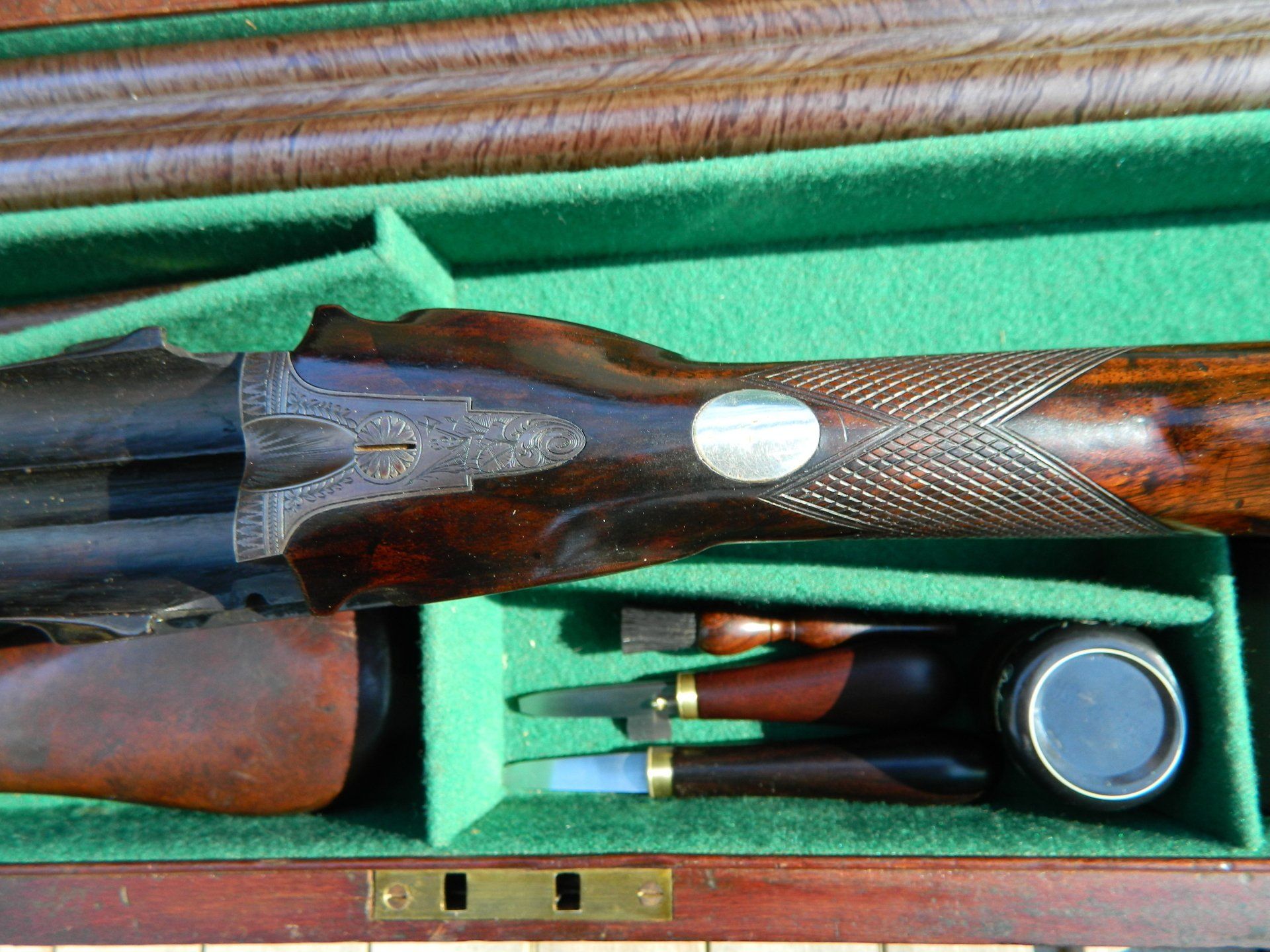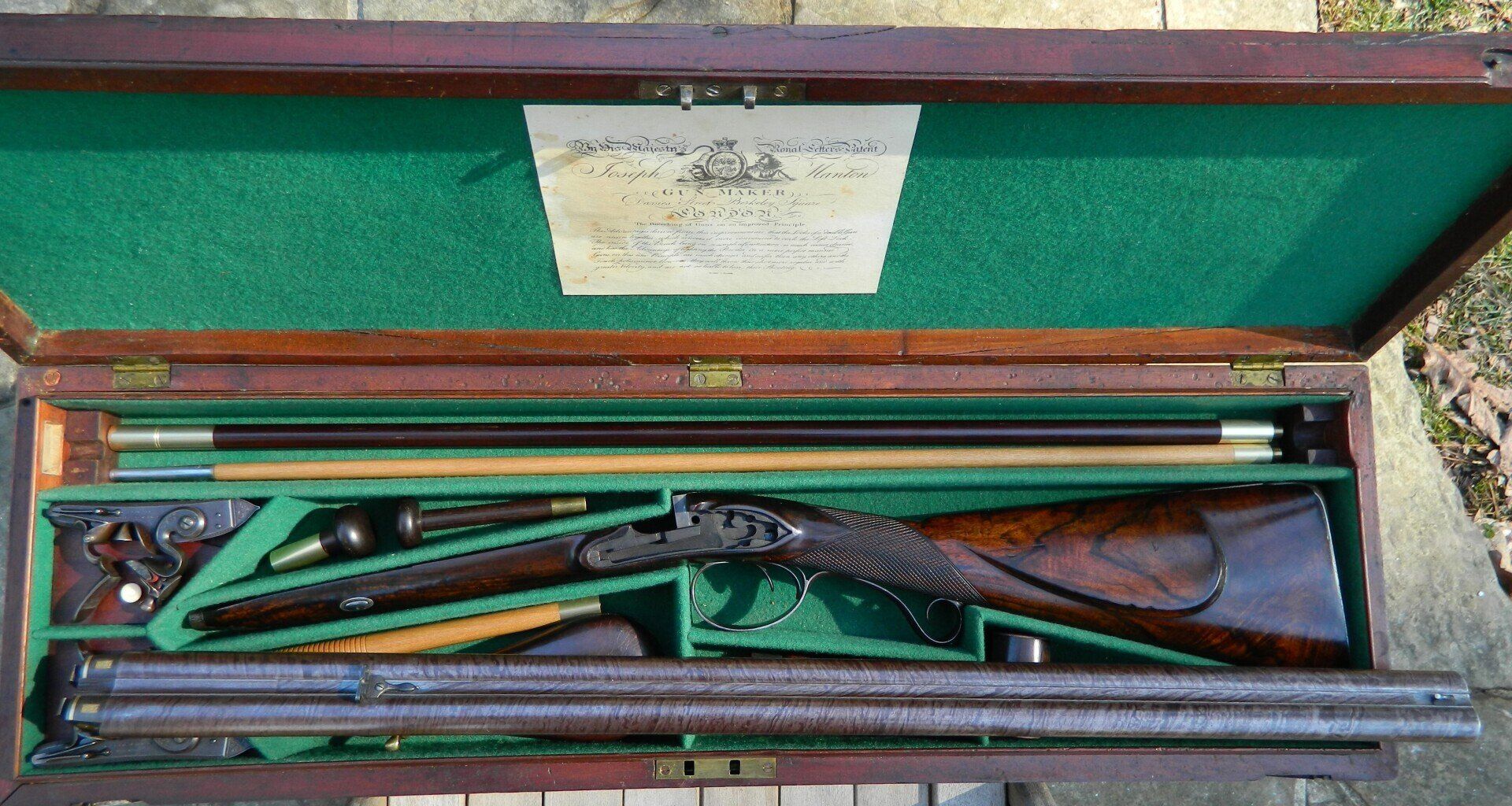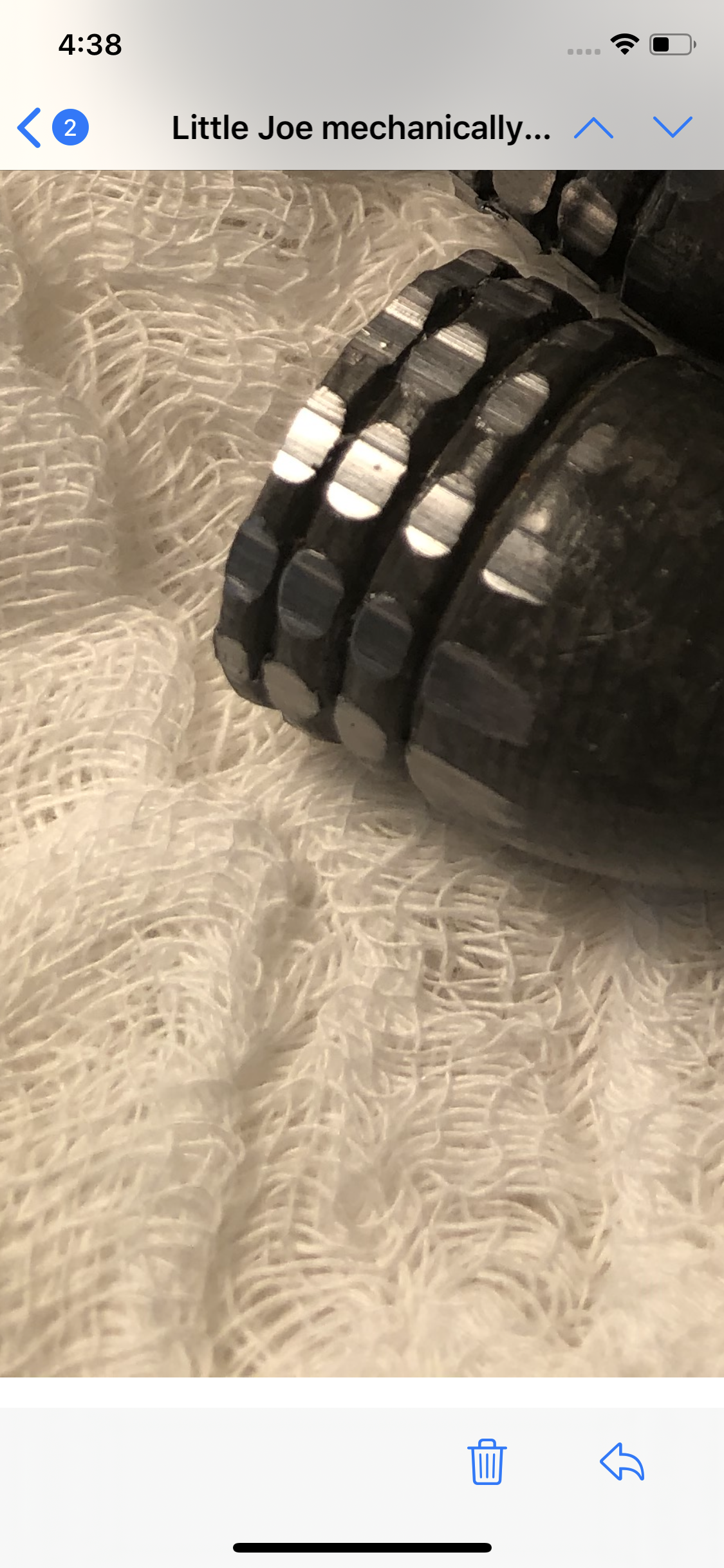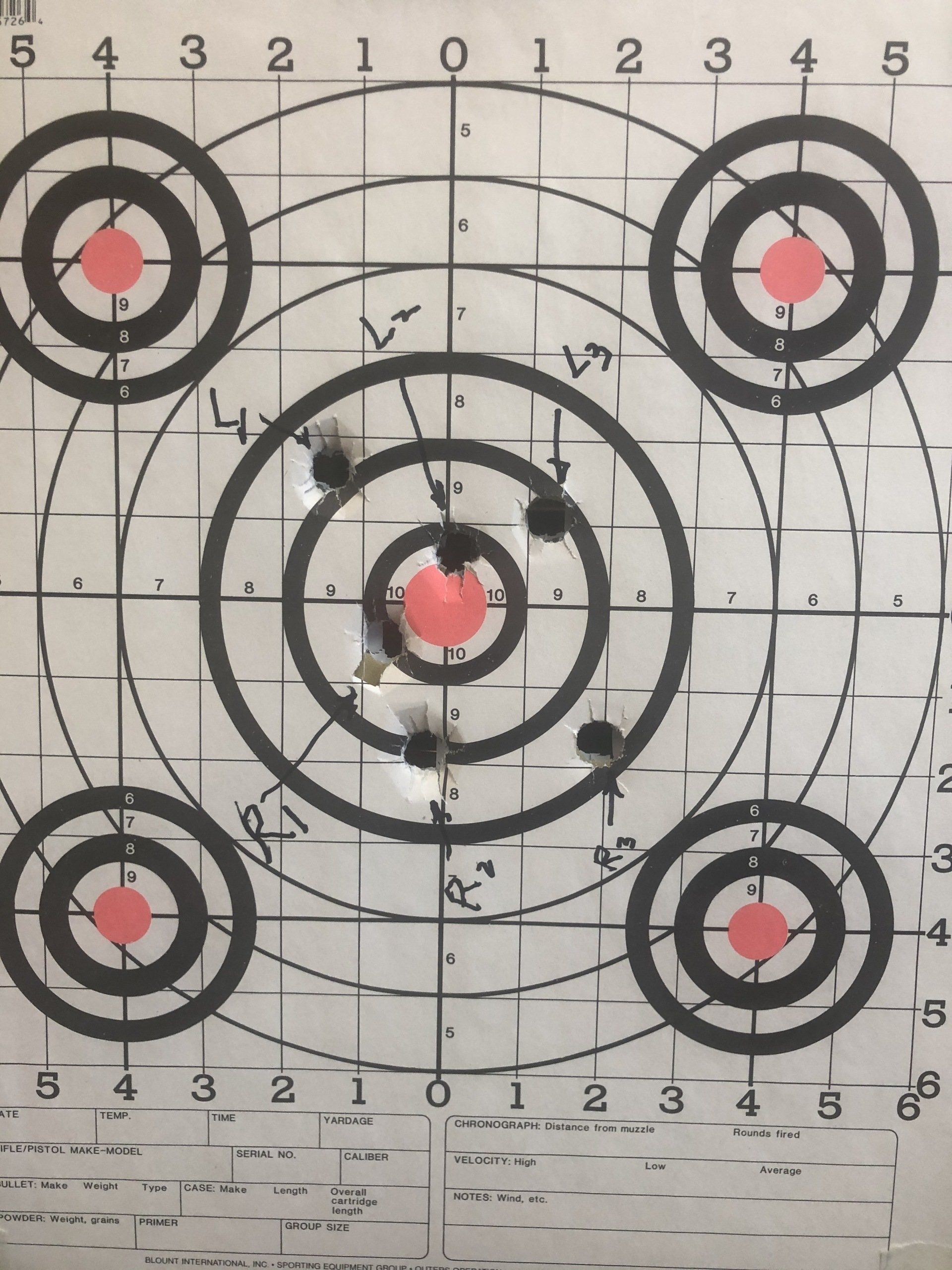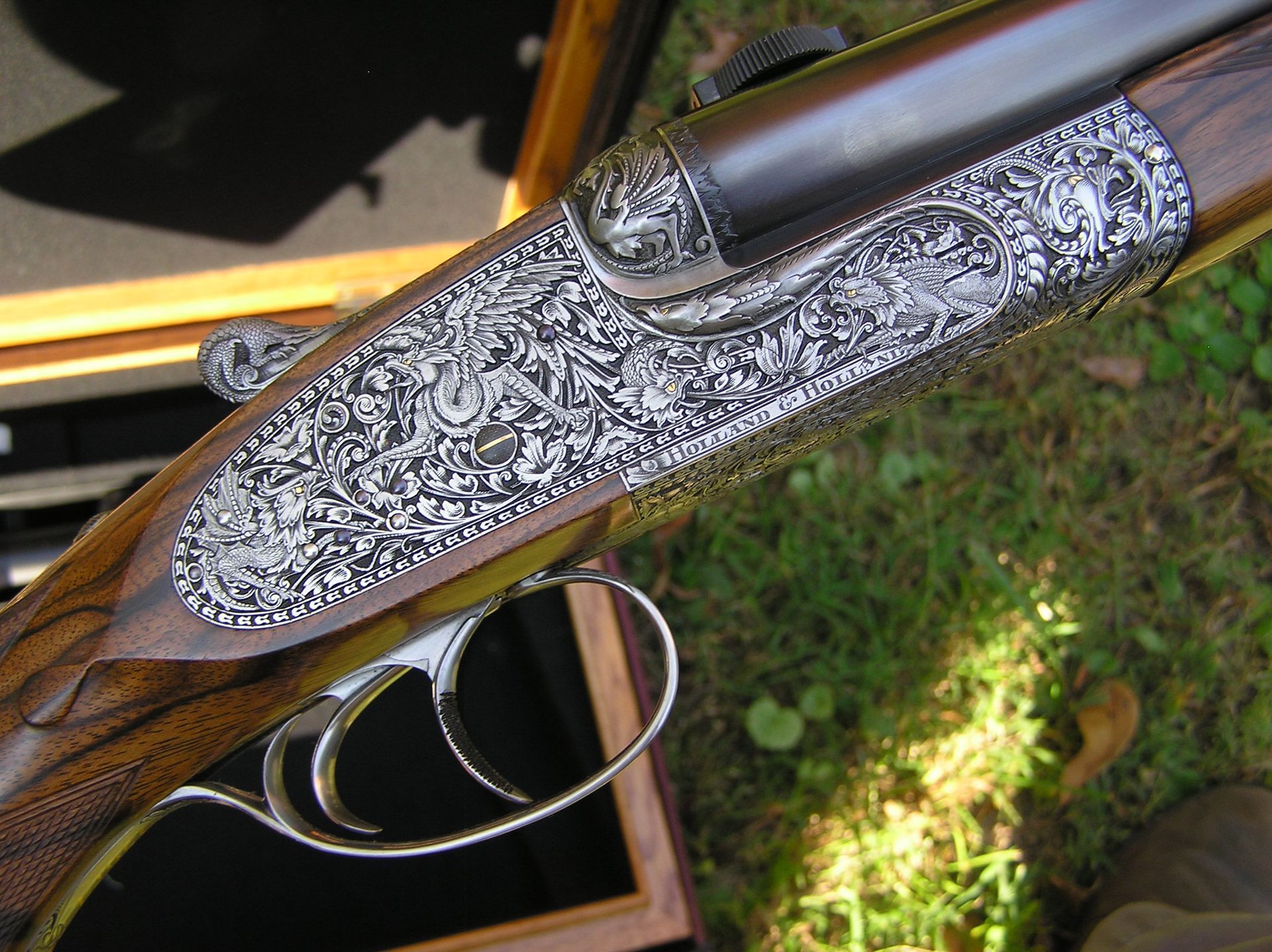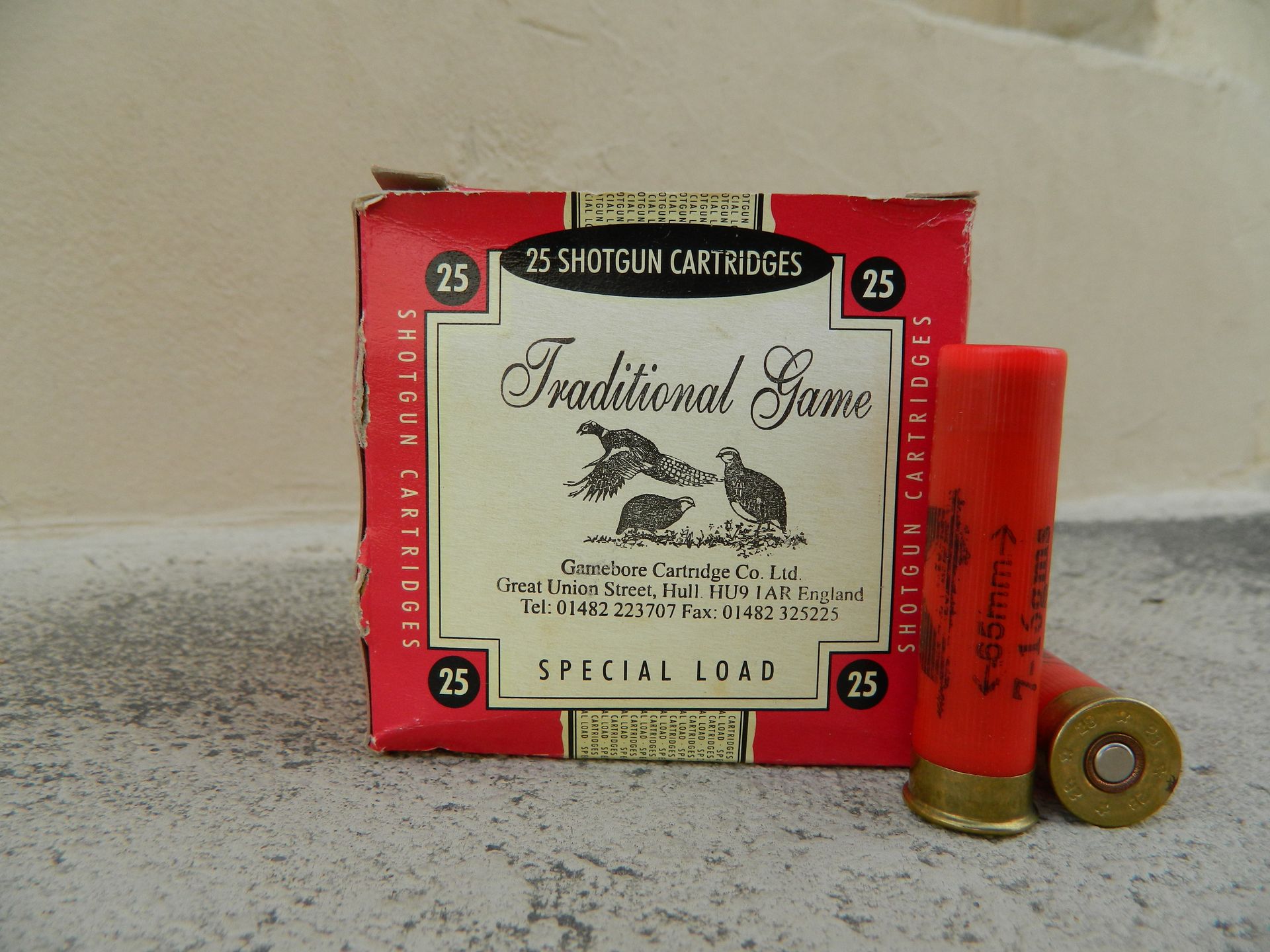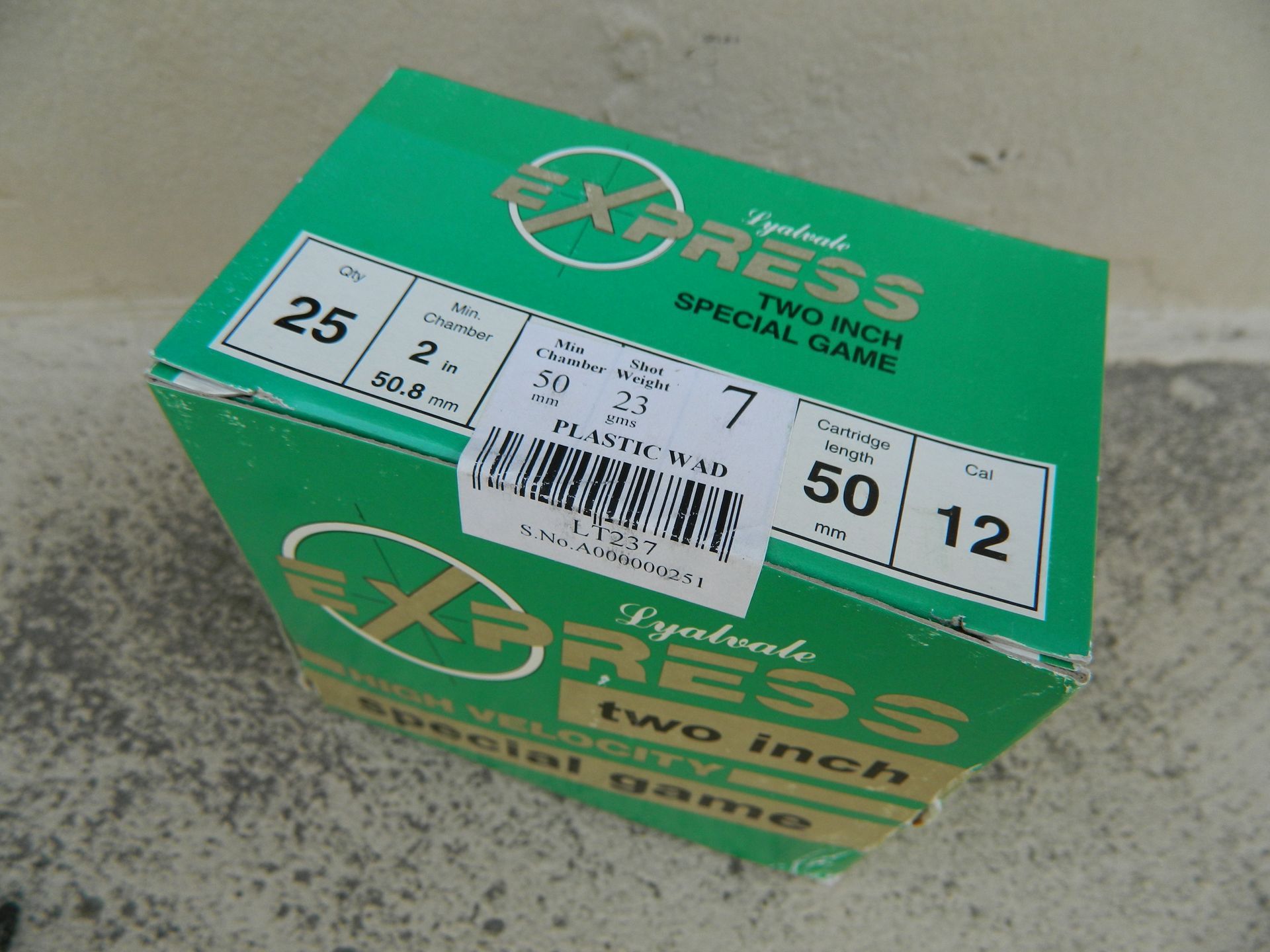Extremely Rare Joseph Manton 16-bore Double Rifle #1514, ca. 1801. SOLD
Joseph Manton, London. Exceptionally Rare 16-bore flintlock double-barreled rifle #1514, ca. 1801. This magnificent firearm, appearing in Neal’s Manton books as a percussion conversion, has recently completed an exhaustive, one year, 2000 man-hour, re-conversion to flintlock by Master Gun-Maker, Steven Alexander.
Weight: 8 ½ Lb. Stock Dimensions: 14 1/8”x 1 3/8”x 2 1/8”x ¼” cast-off. Beautifully figured 30 3/8” skelp Damascus barrels retaining much of an old rebrown finish. Bores have some light pitting and wear at the muzzles. Front and rear sights have been modified for the previous owner in such a way that has left the original sights undisturbed allowing an easy return to the original configuration if/when so desired. New recessed breech plugs with gold touch holes and 24k gold bands along with 24k gold poincon’s, along with a new false breech, perfectly fit-up and engraved by Steve. The superb new locks, with powerful mainsprings along with perfectly timed hammer springs are real rock-crushers, resulting in very fast ignition in the typical Manton tradition. The old percussion conversion resulted in narrowing of the stock through the lock mortise area, requiring several barely noticeable walnut inlays to build that area back up to a width necessary to accommodate the “original” flintlocks. The original iron mounts are all beautifully engraved with very light wear and no corrosion whatever retaining a pleasing gray/brown patina. The ramrod appears original to the gun. The proper period case has been relined and contains numerous accessories from the earlier period of the rifle.
Targets and loading/performance data can be ascertained from the last 3 photographs below. The first target was shot at 55 yds while still a percussion rifle. The last target was shot off-hand at 55 yds as a flintlock using the same loading data recorded on the previous target except the final hollow-point bullet weight was 657 grains. By the way, the modern custom, hollow-point, bullet mold for this incredible rifle is included. The mechanical fit of the bullet is achieved by removing the breech plugs and driving the cast bullets through one of the barrels from the breech out to the muzzle. This process provides a perfect mechanical fitting bullet that will not strip out of the deep, fast-twist, rifling common to that early period. (Let me add that rarely you will encounter a double rifle with counter-rotating rifling in which case you will have to make separate bullets for each barrel!) To my knowledge there were only three double-barreled flintlock rifles known to have been made by Joseph Manton. Overall an incredibly rare and spectacular rifle, cased with everything needed for the hunt.
SOLD
